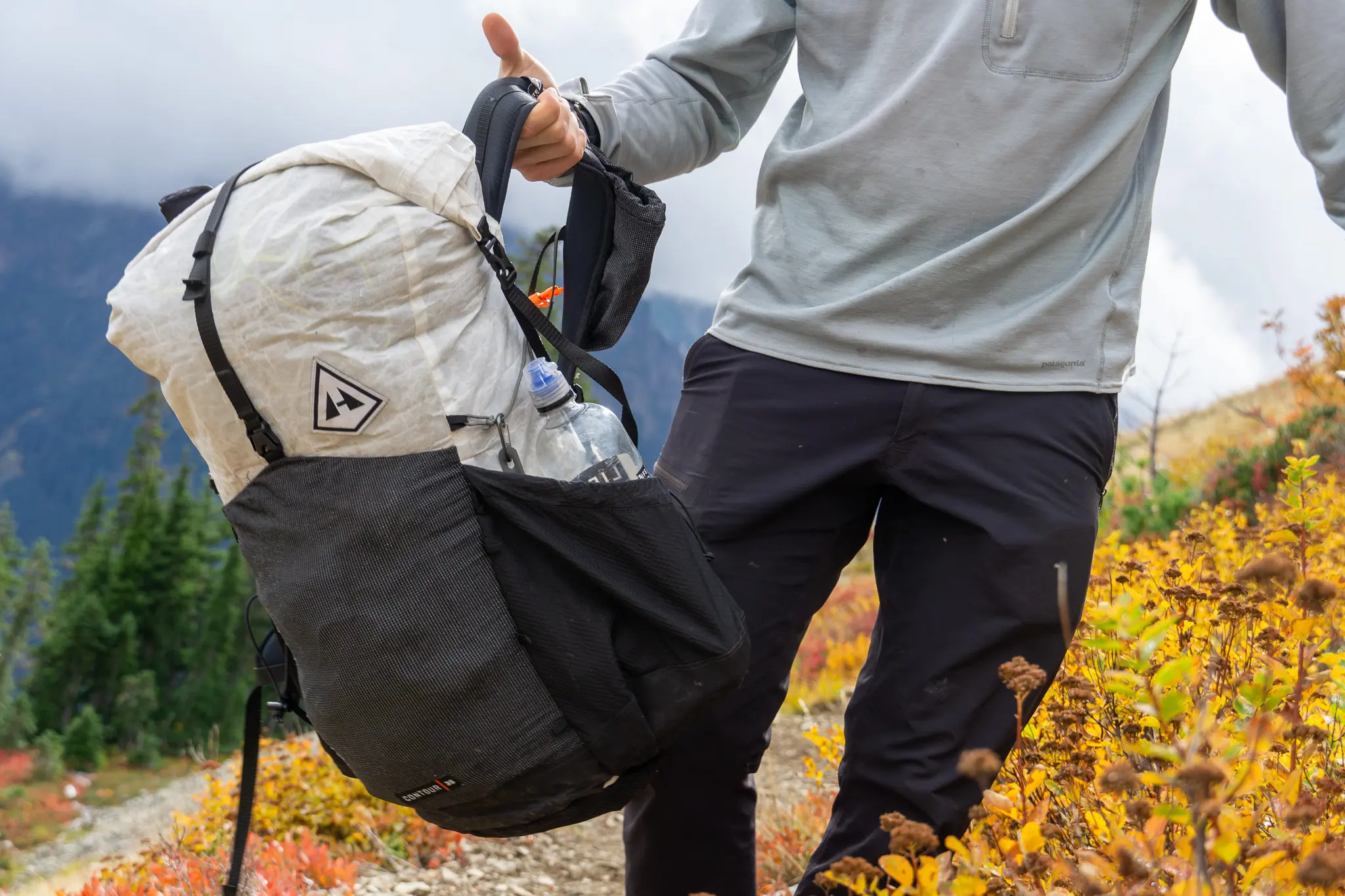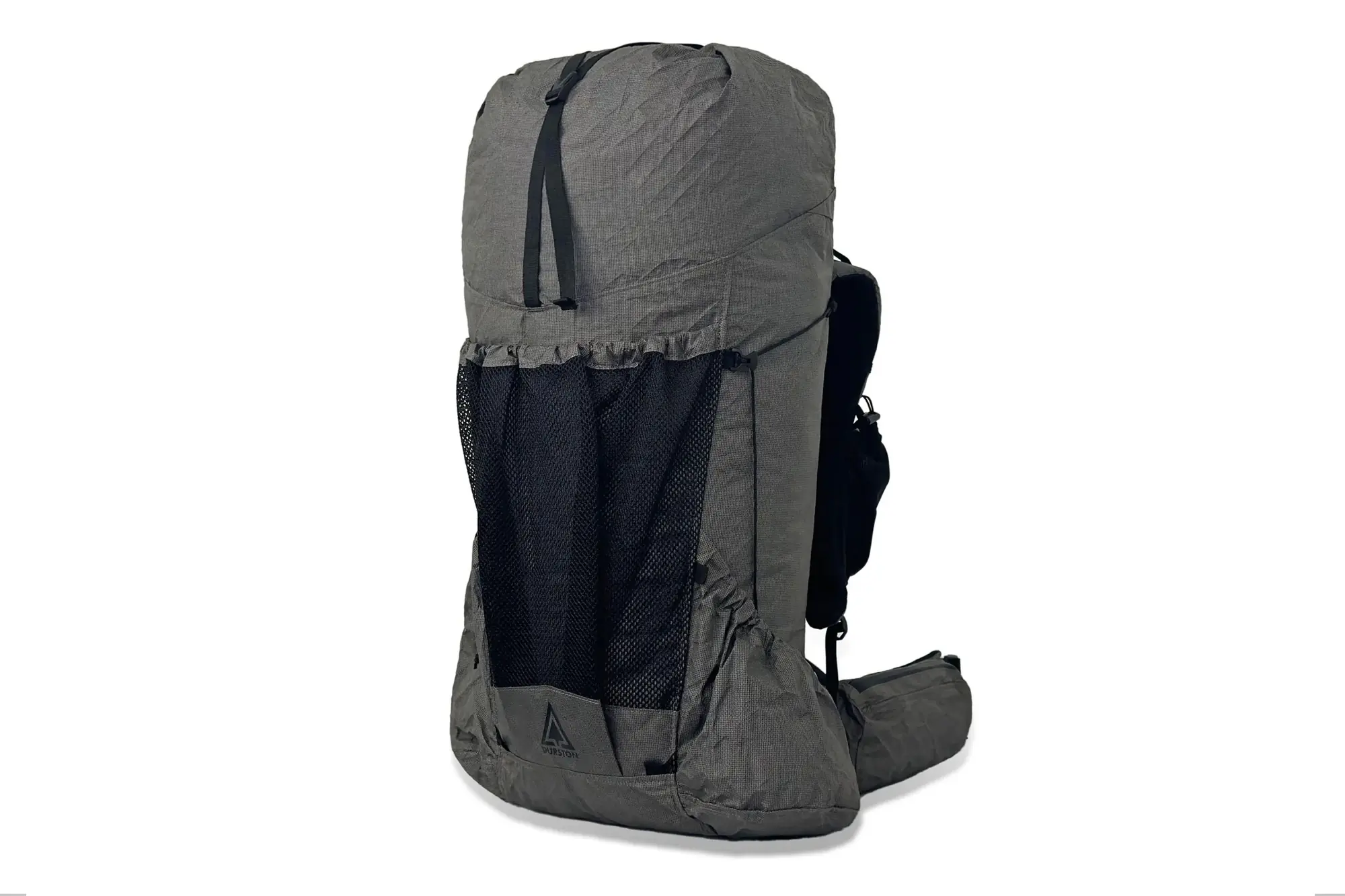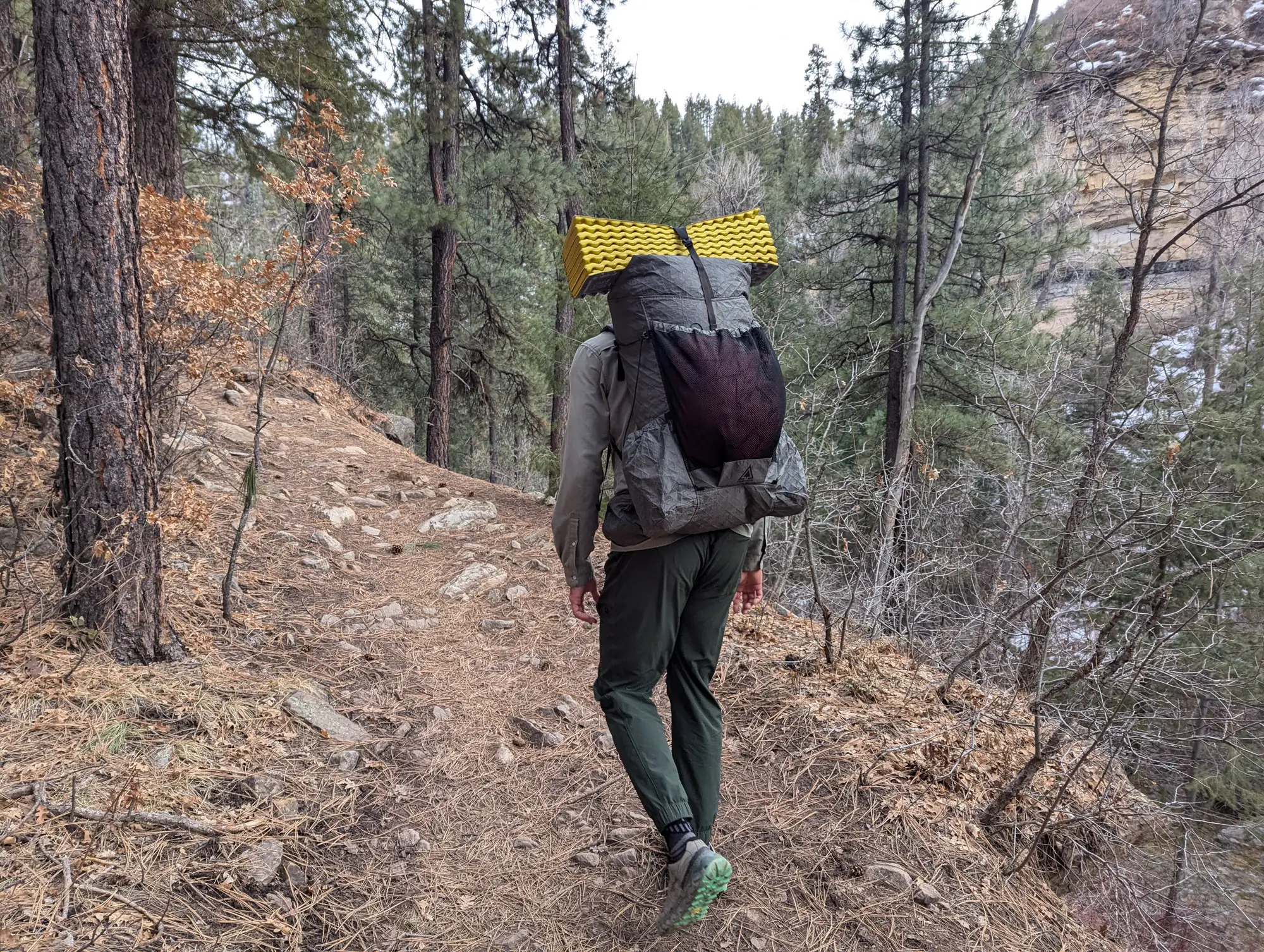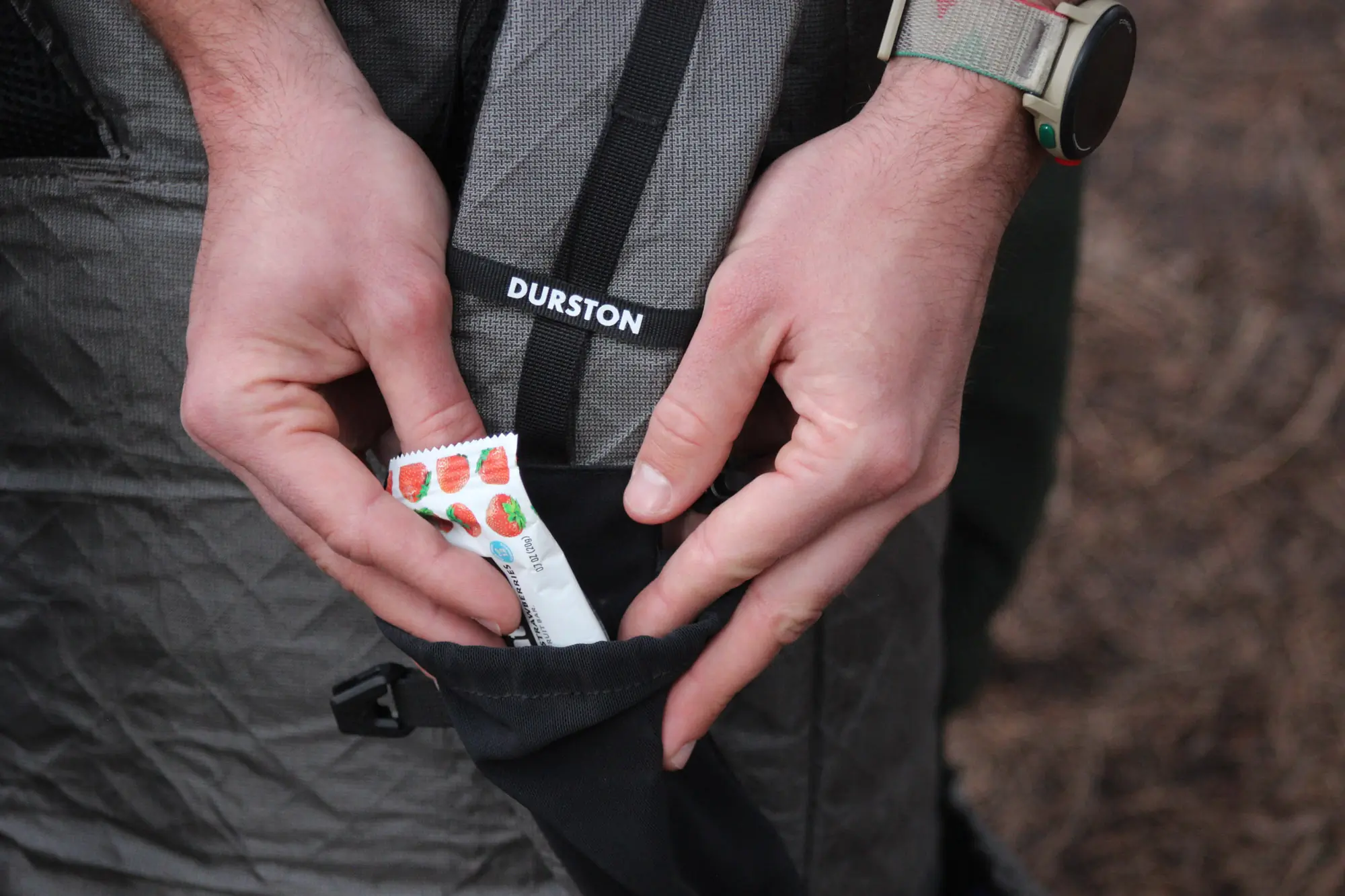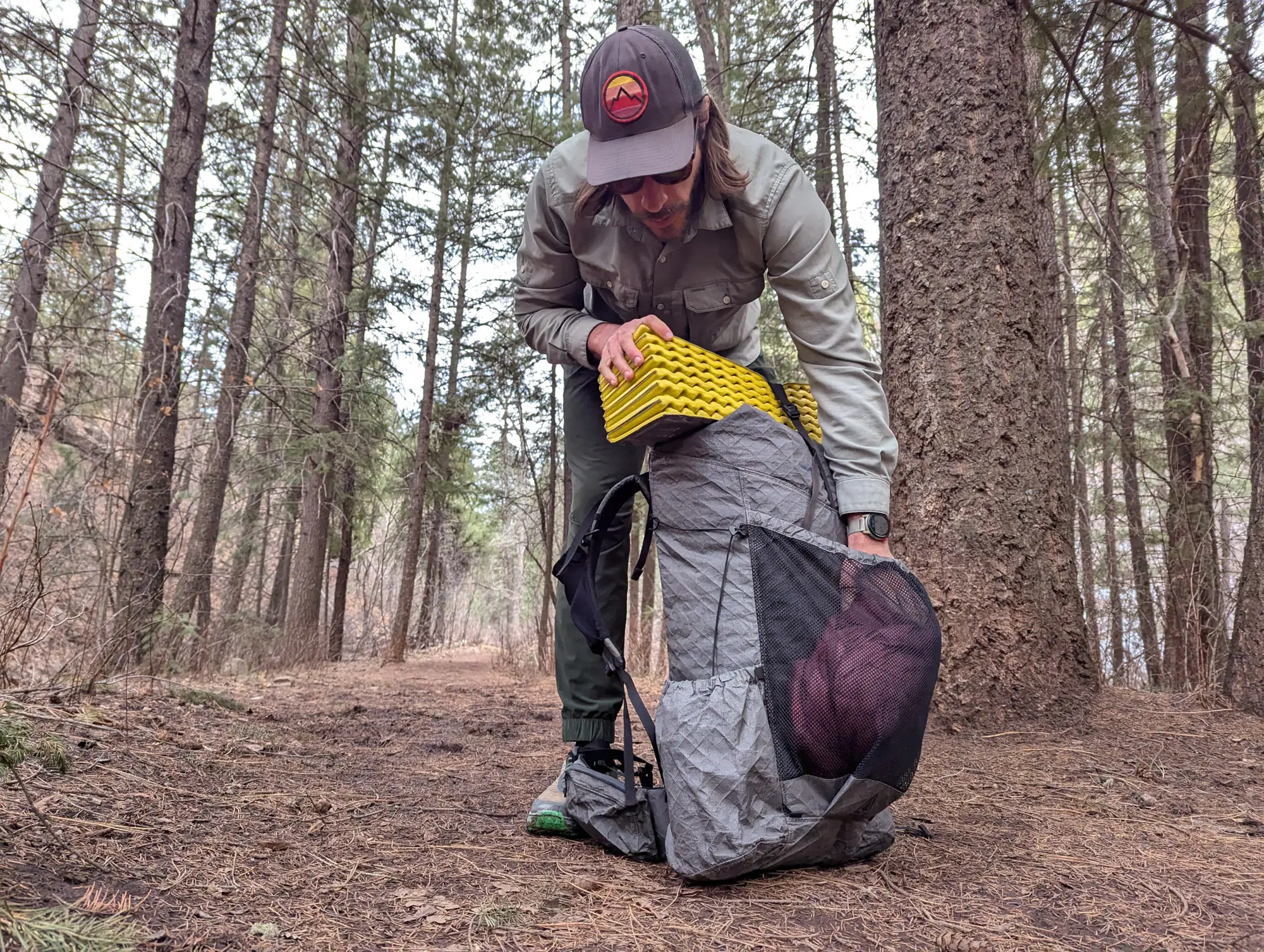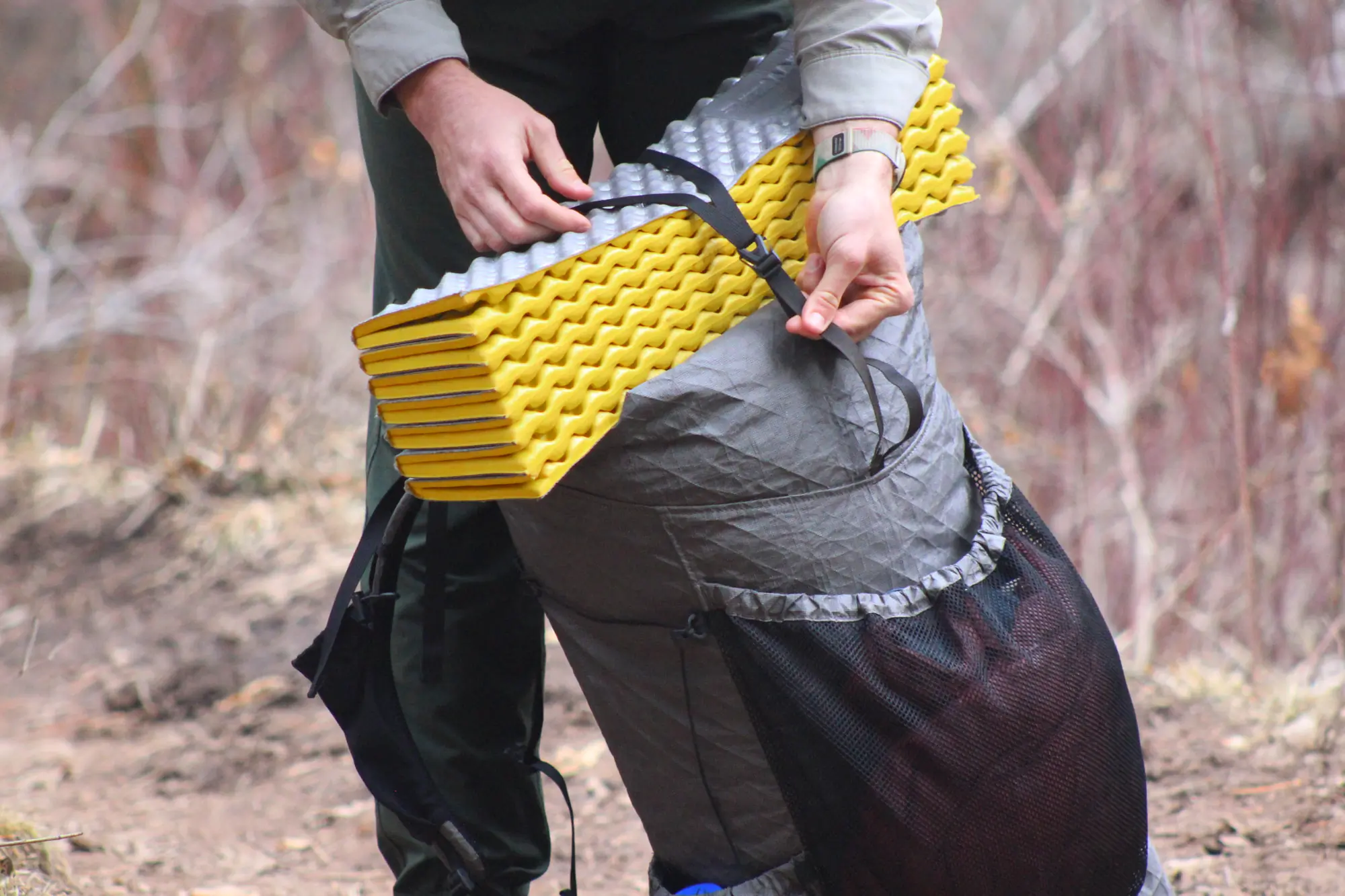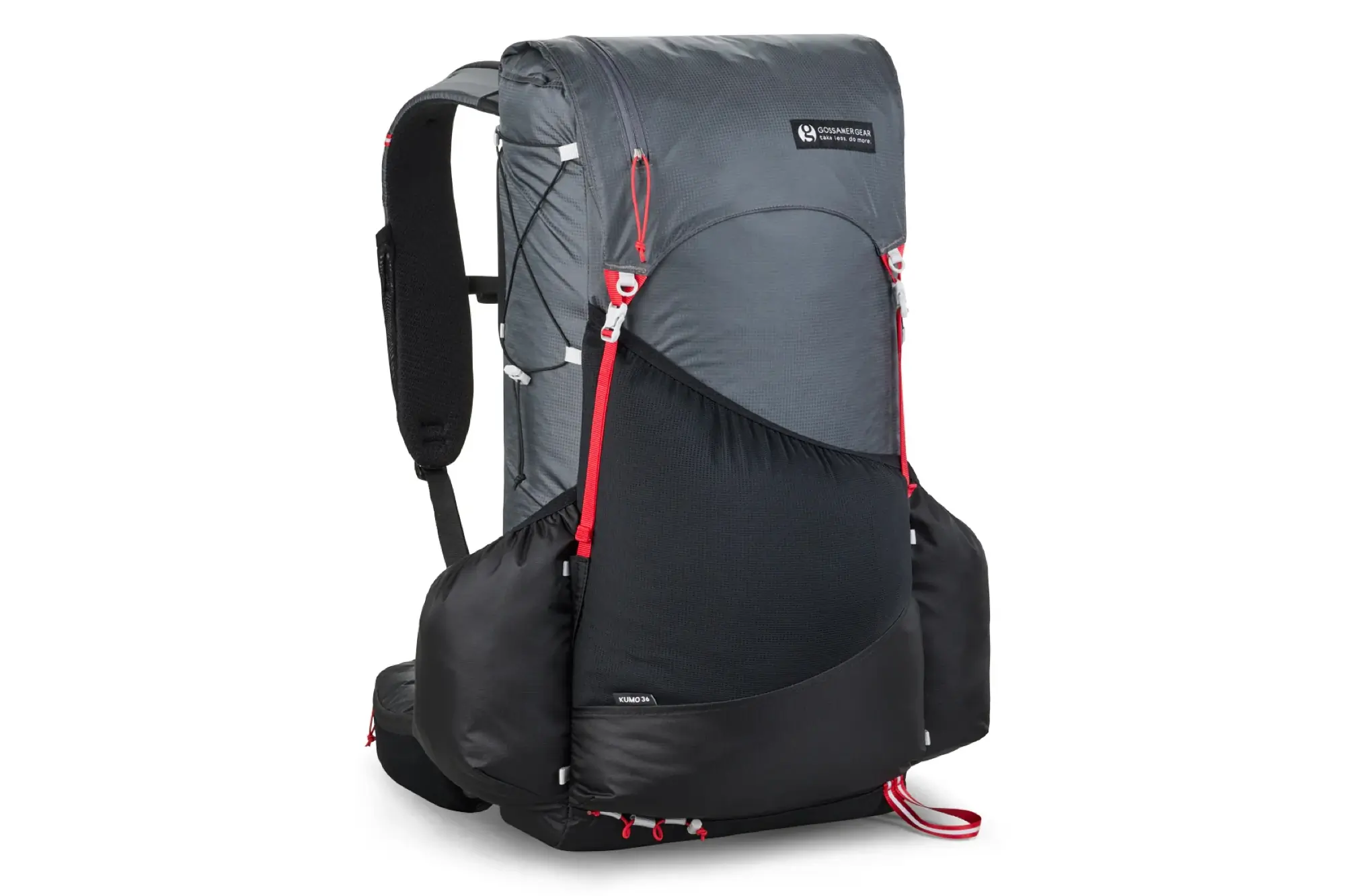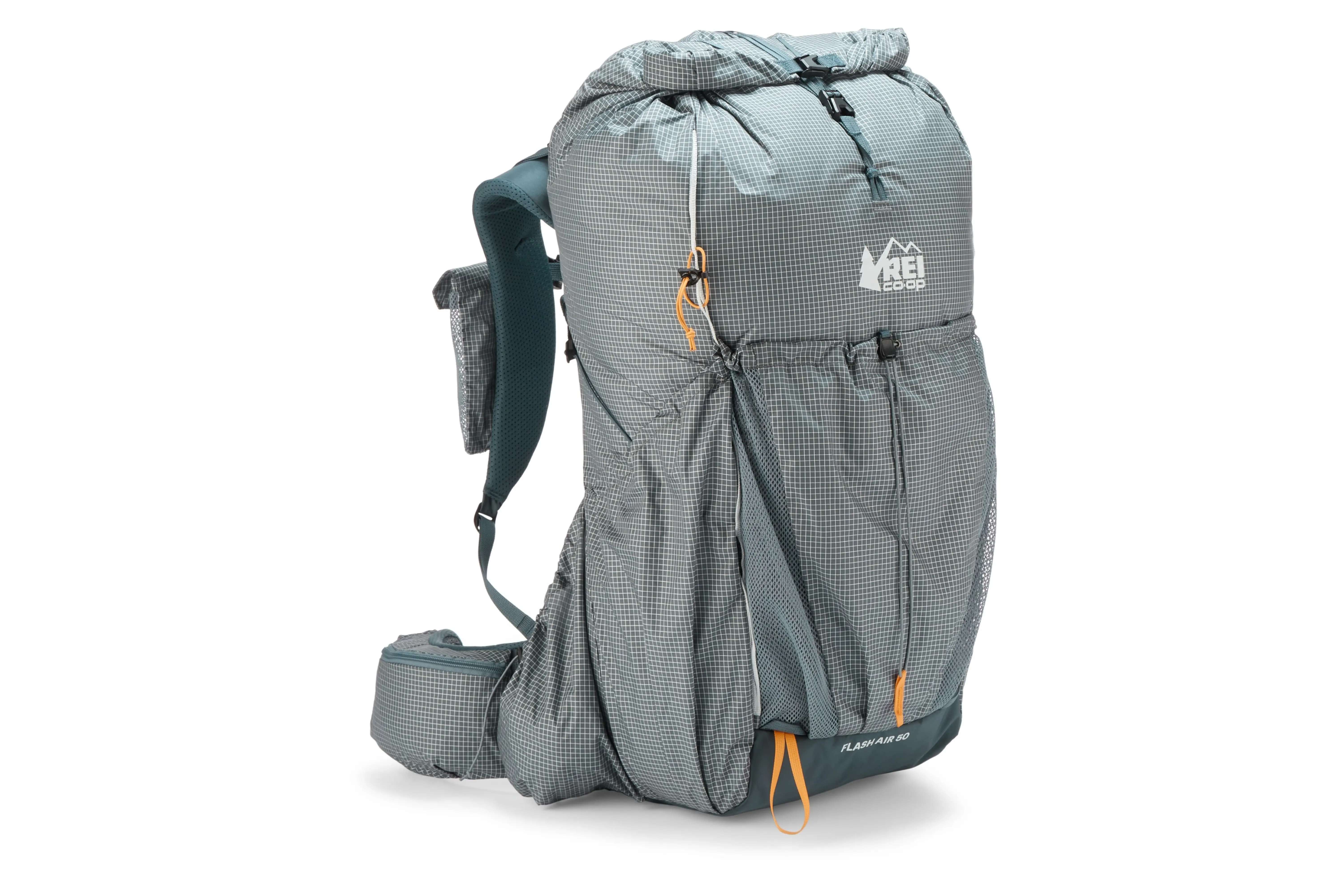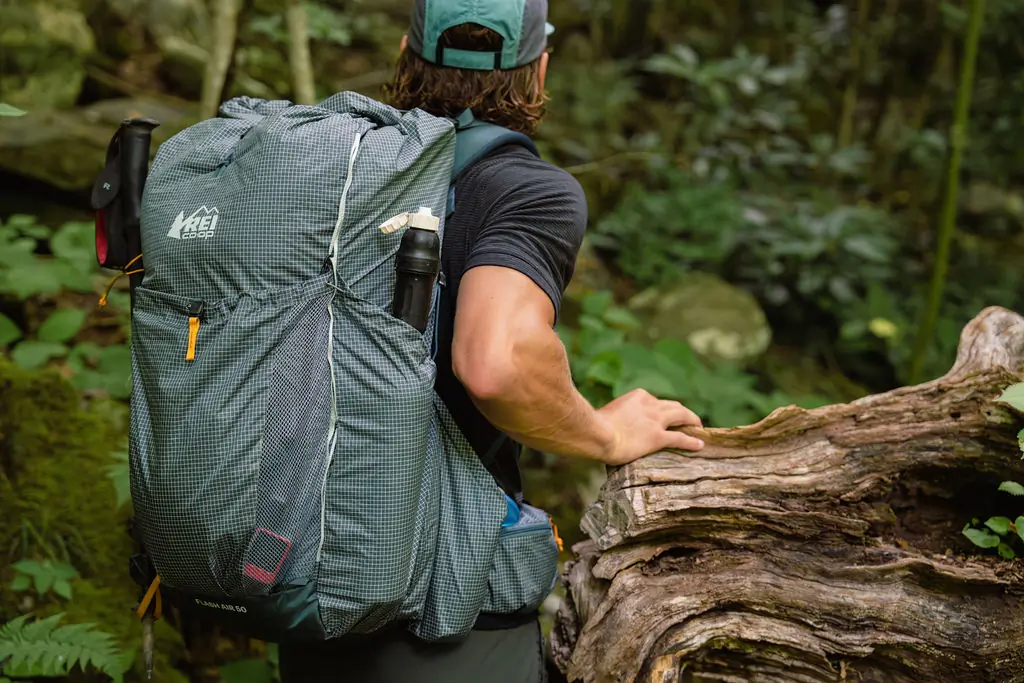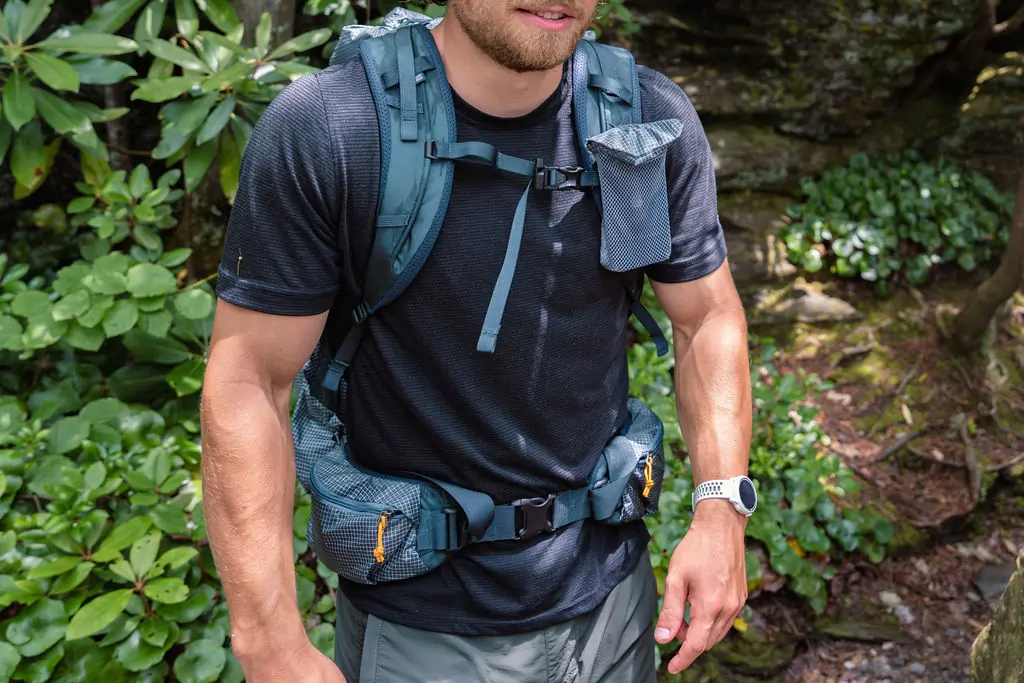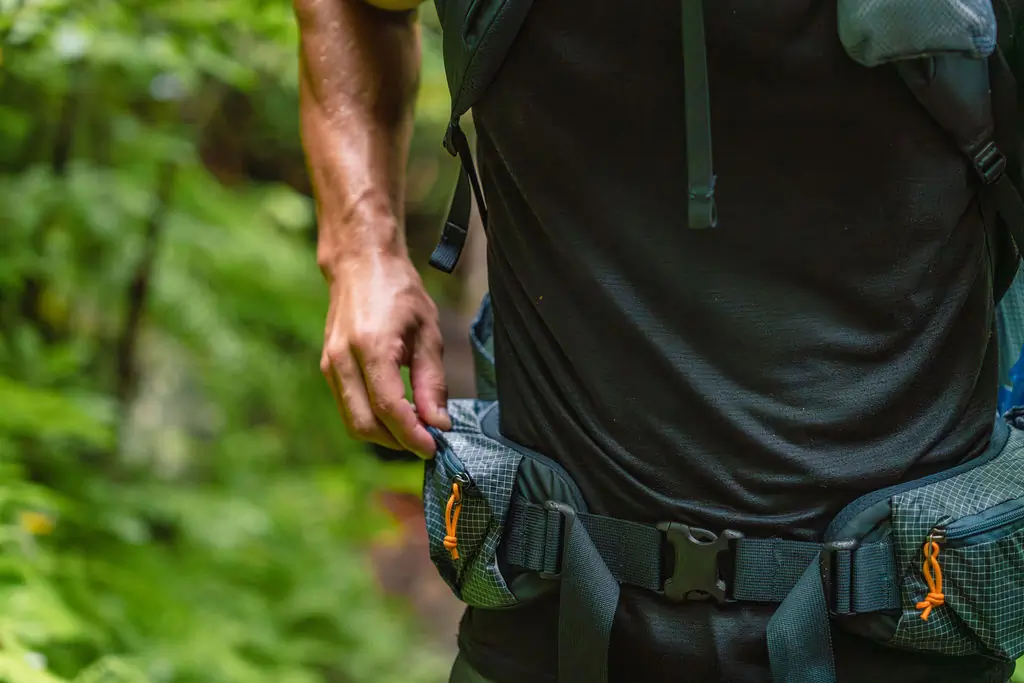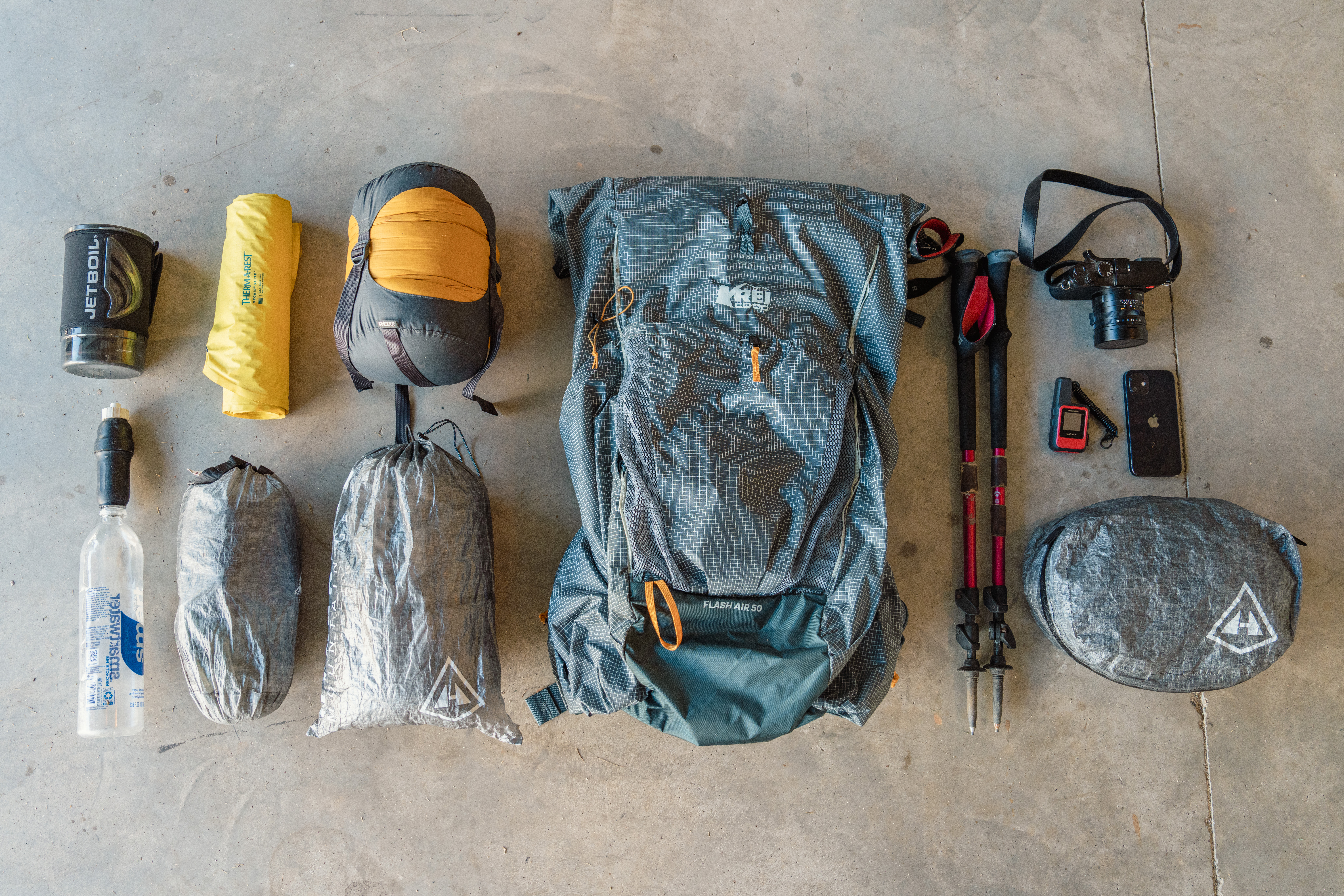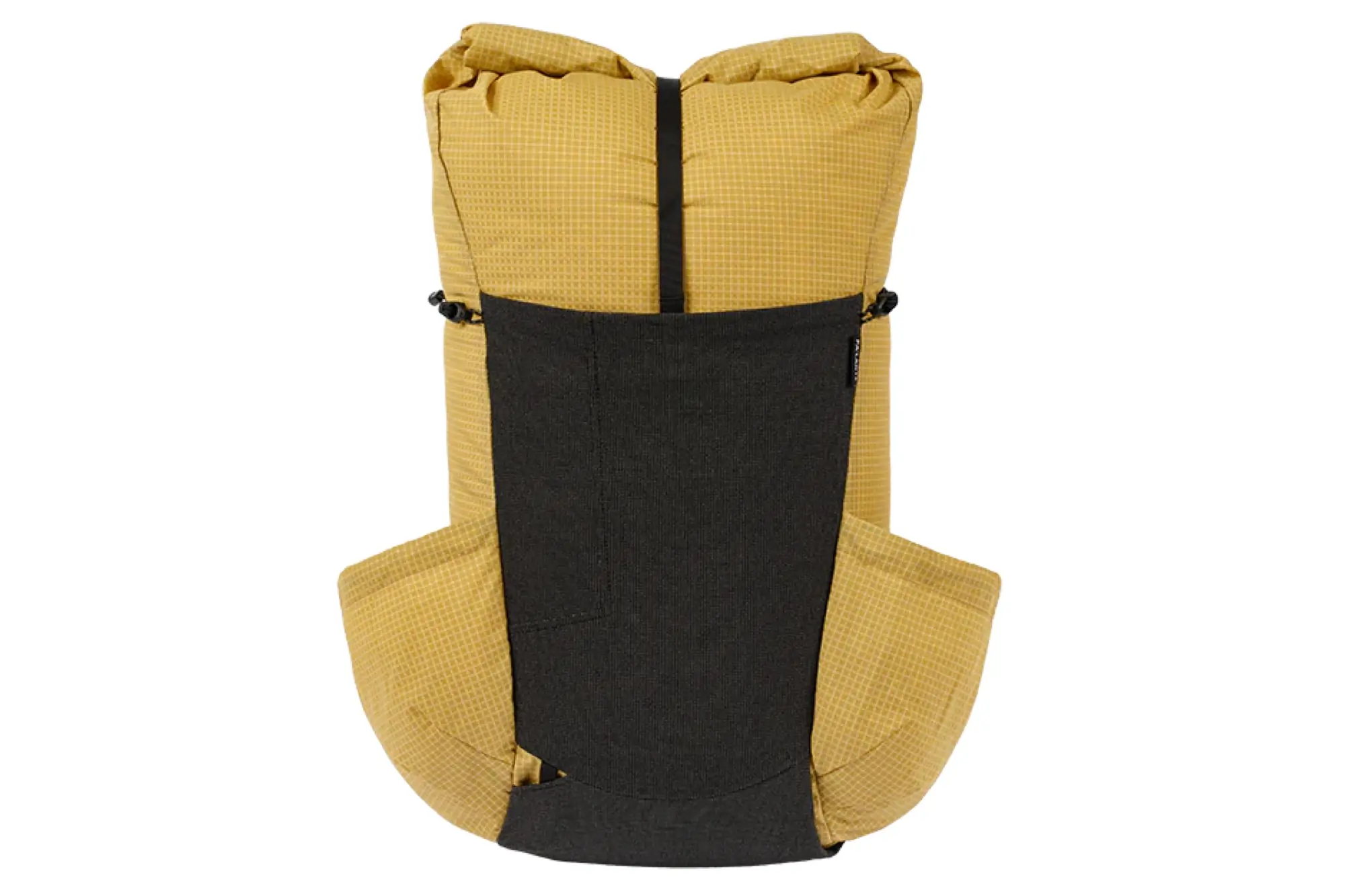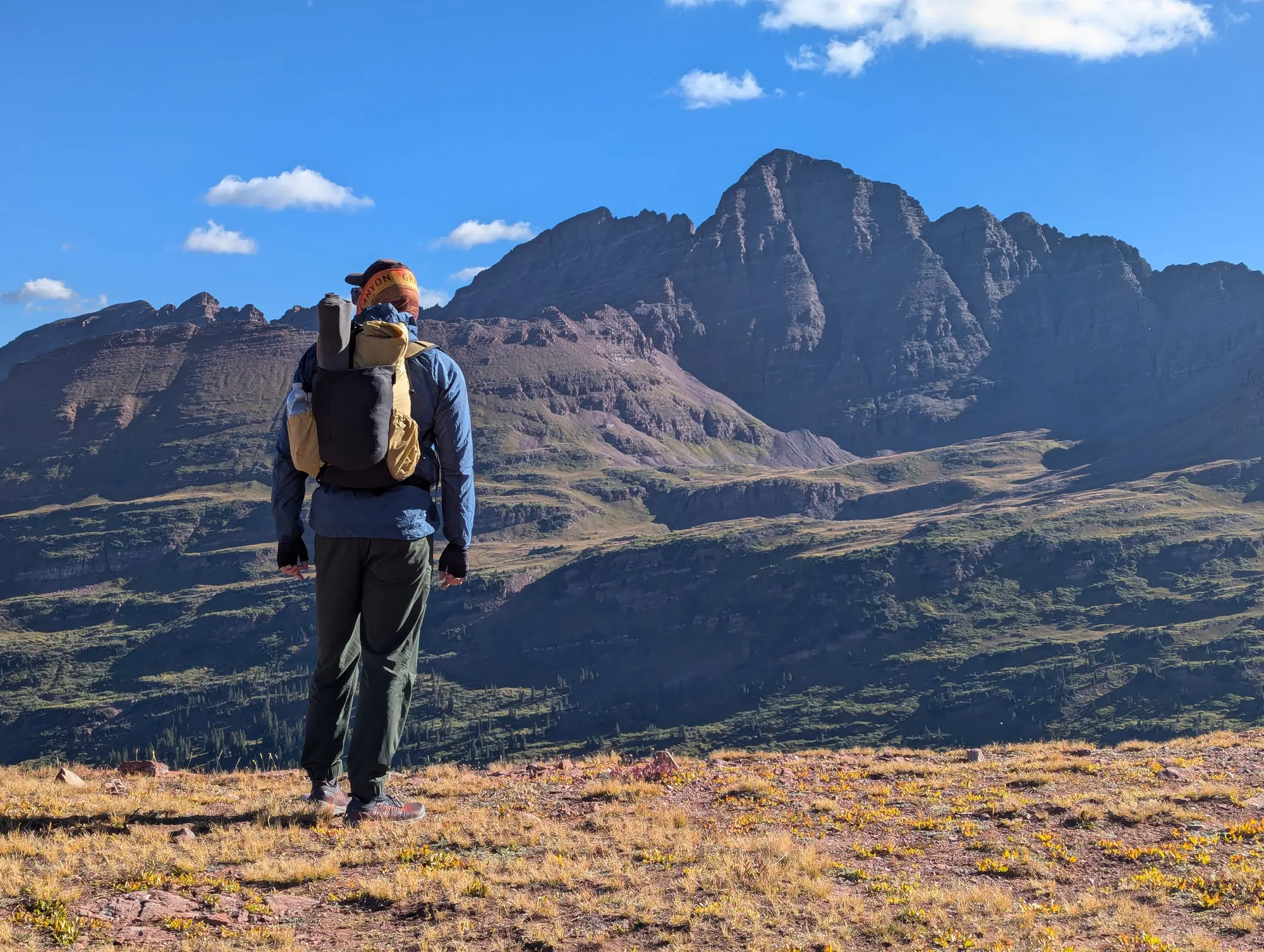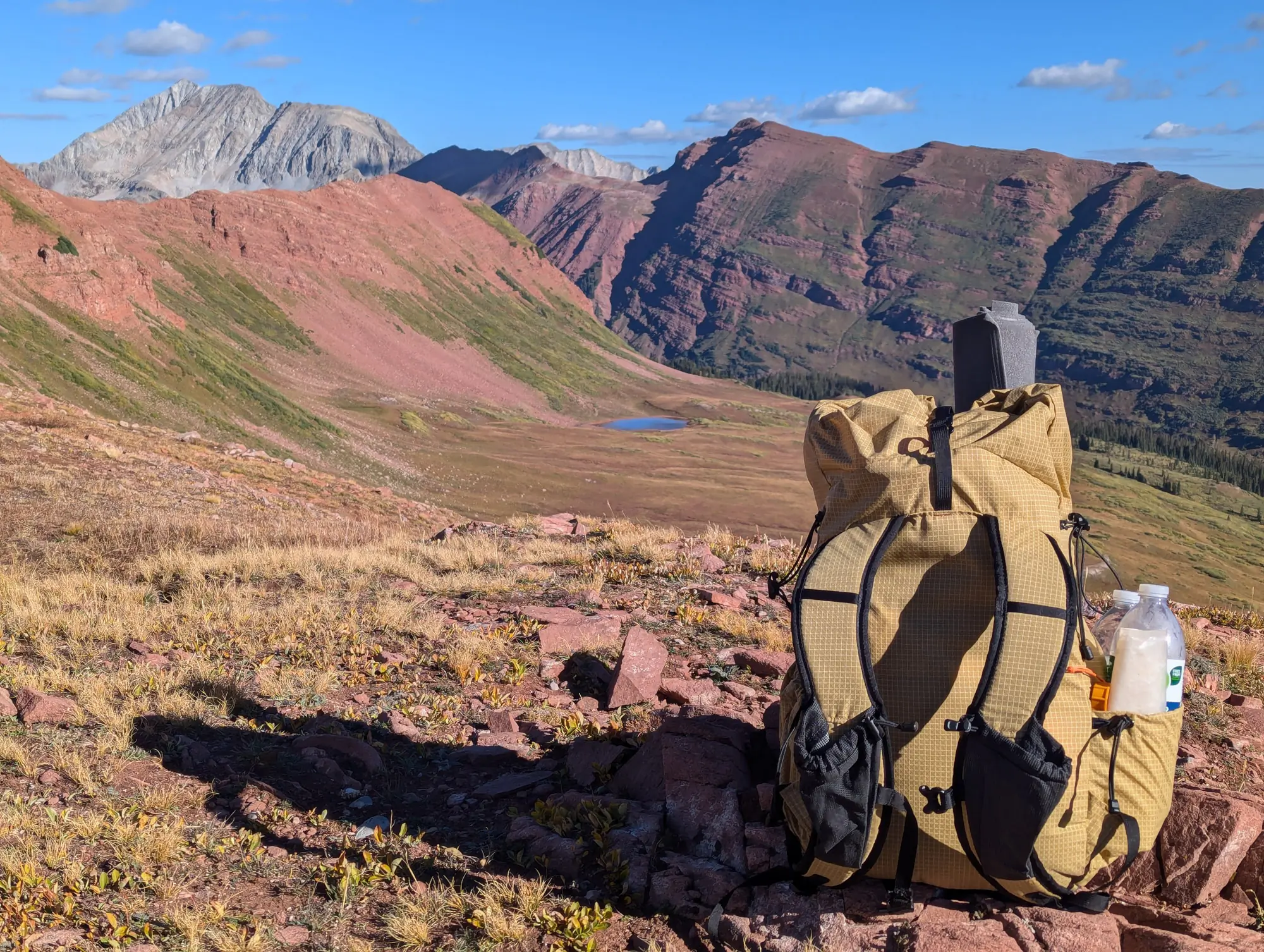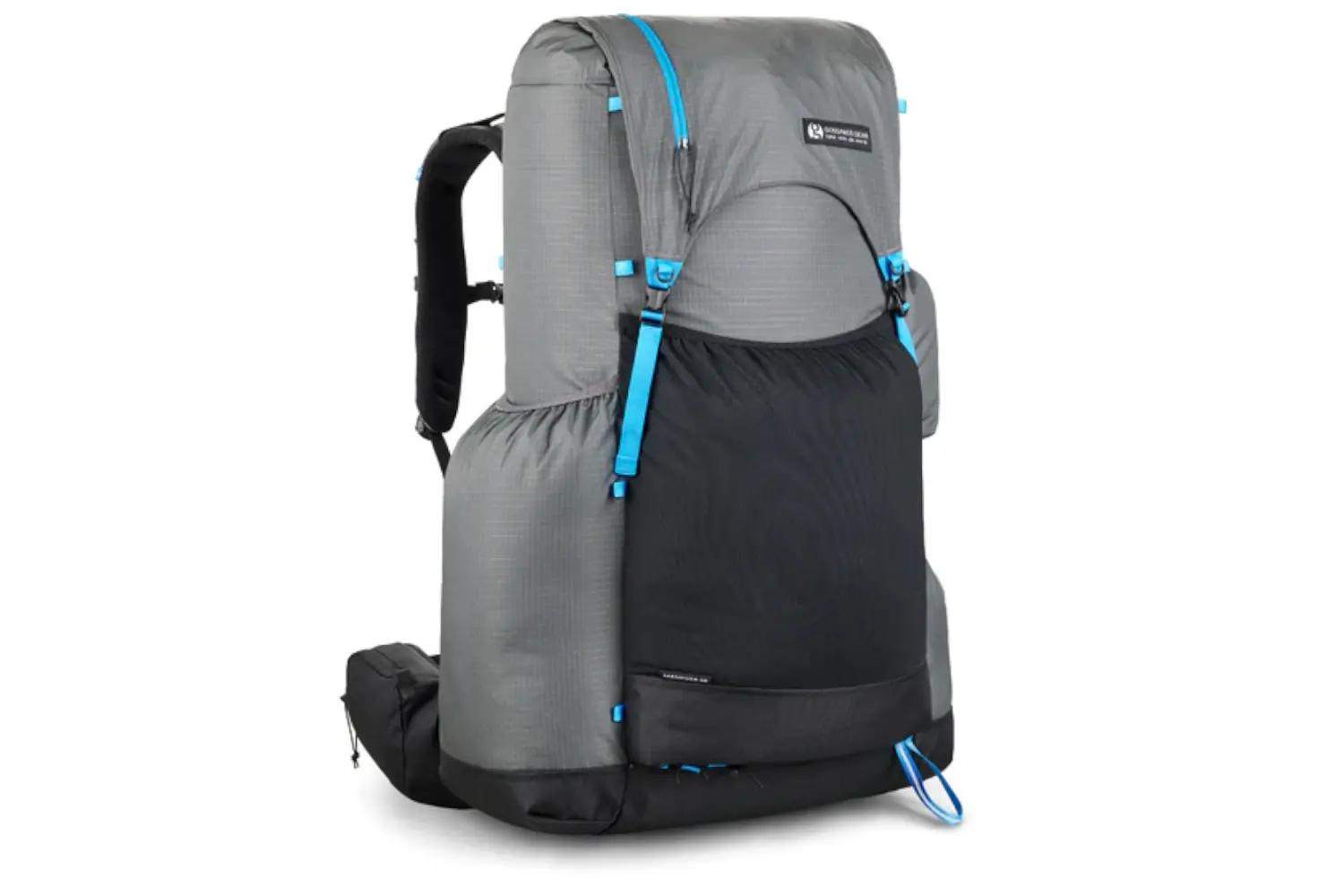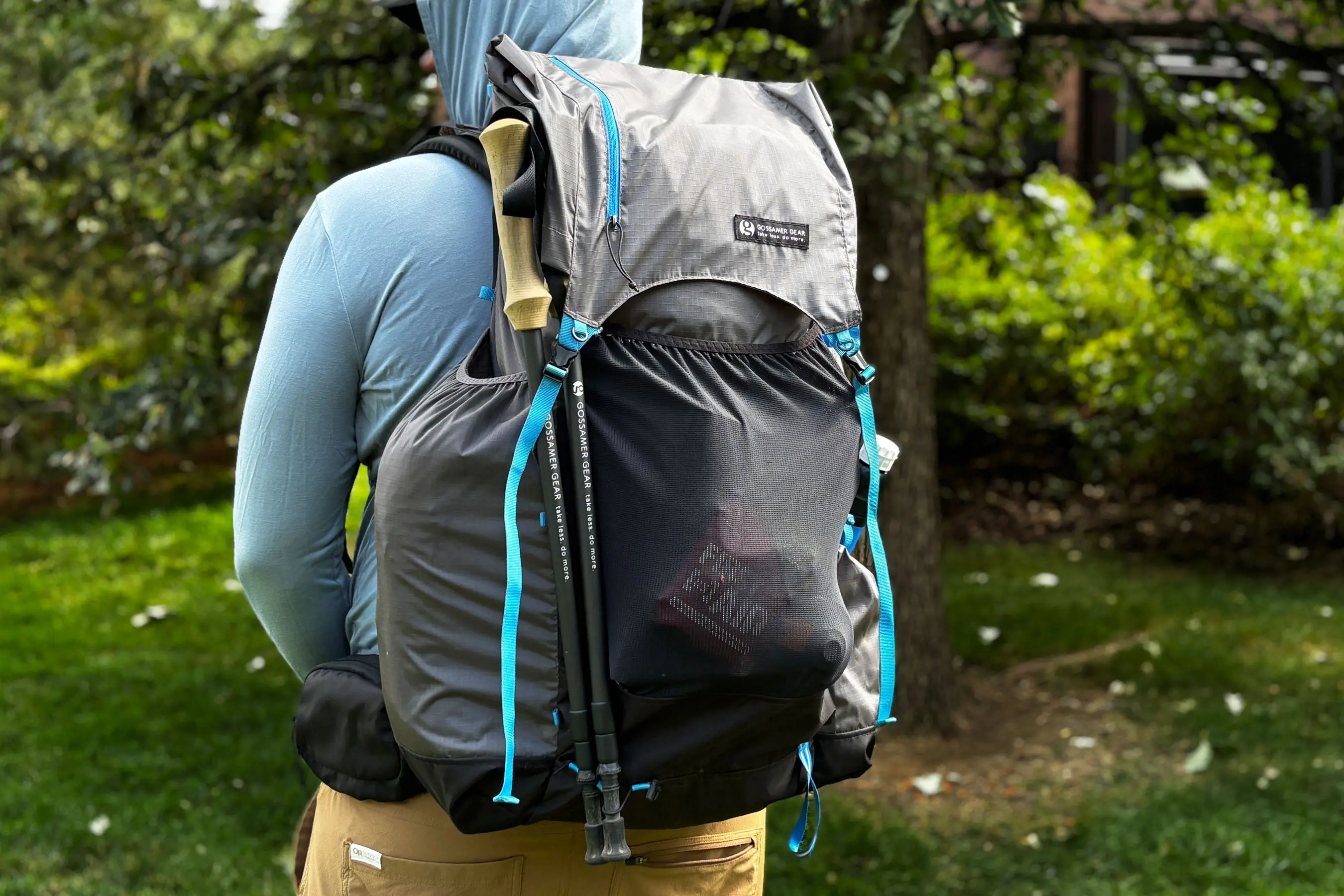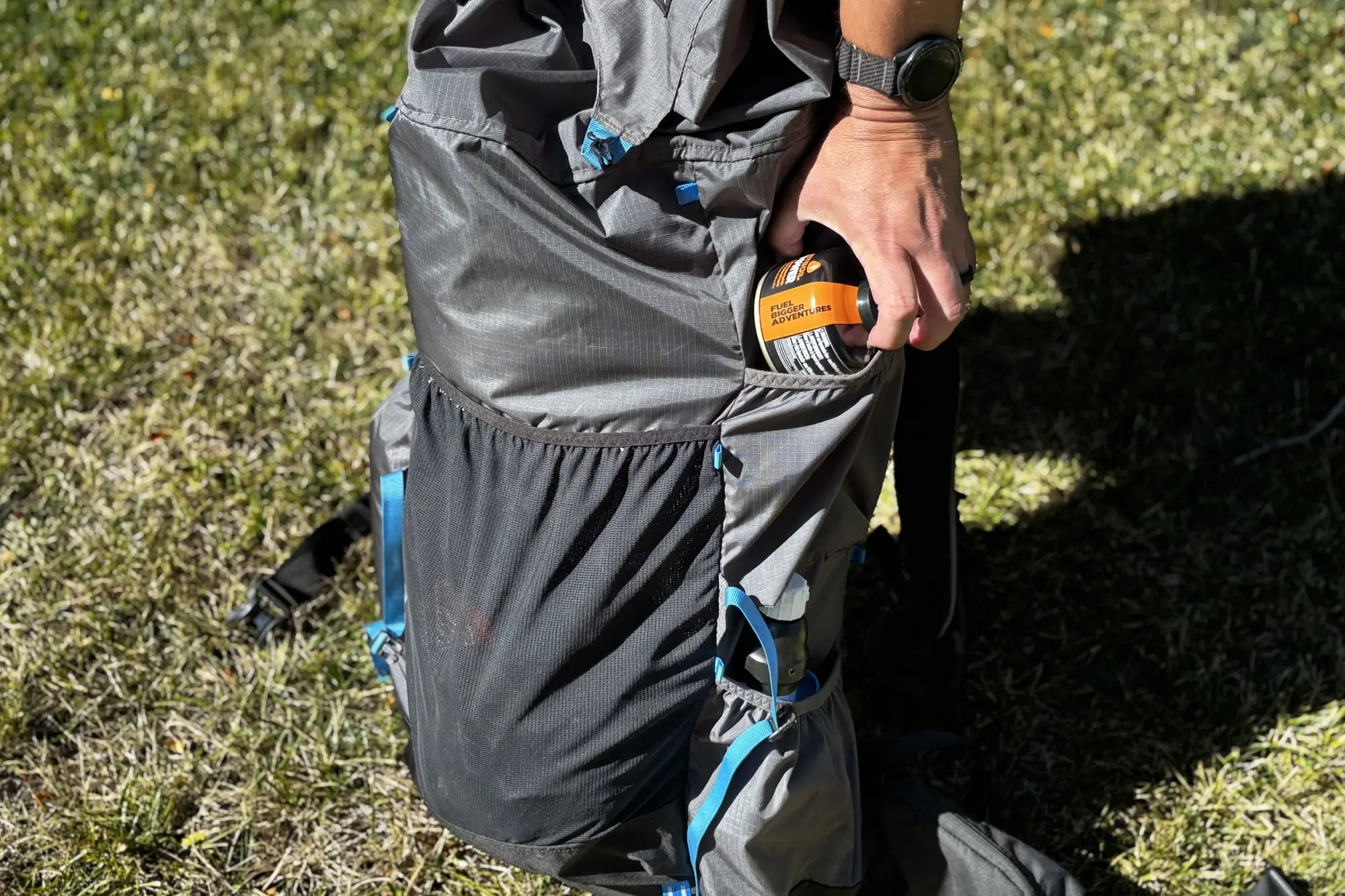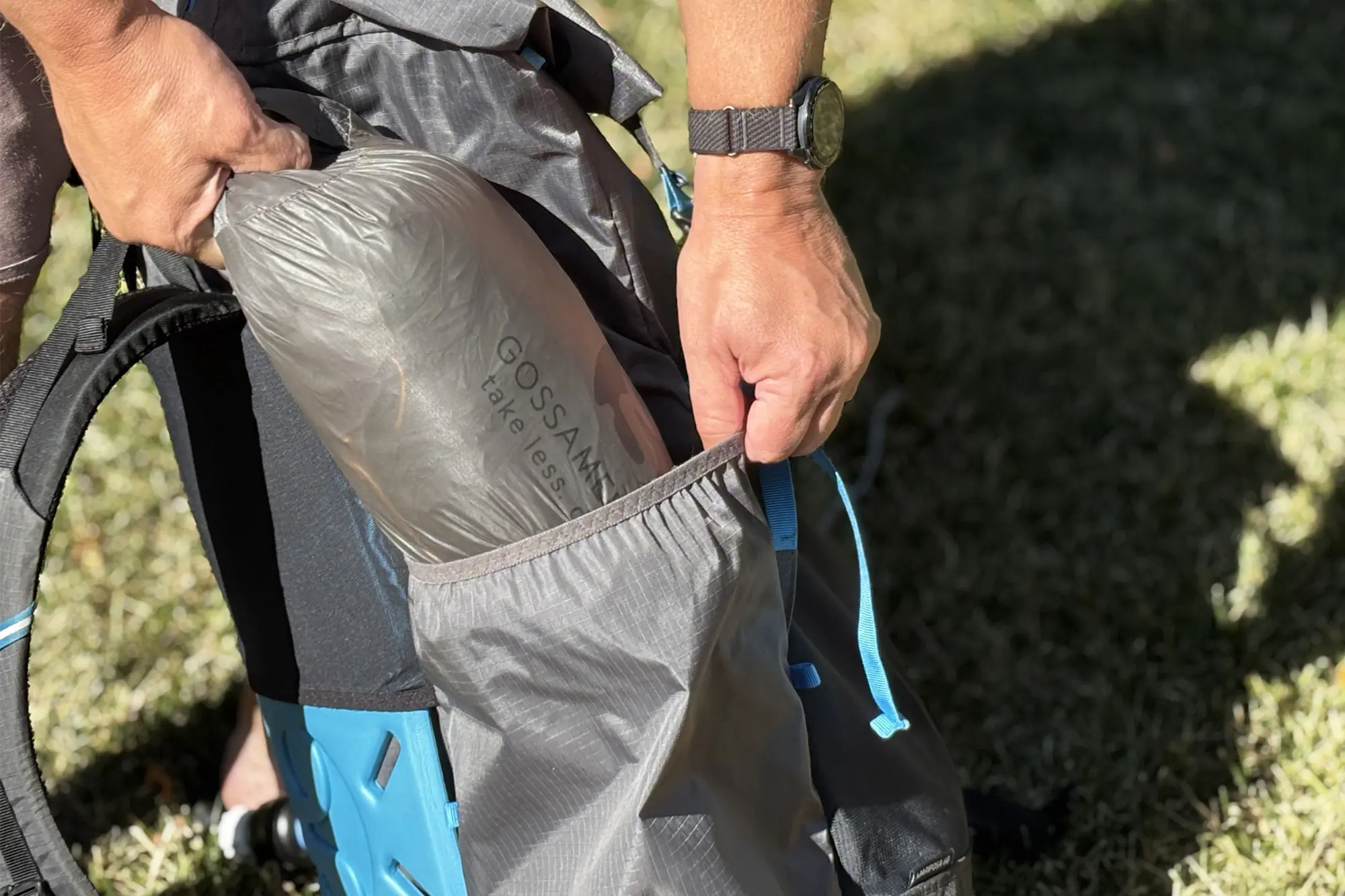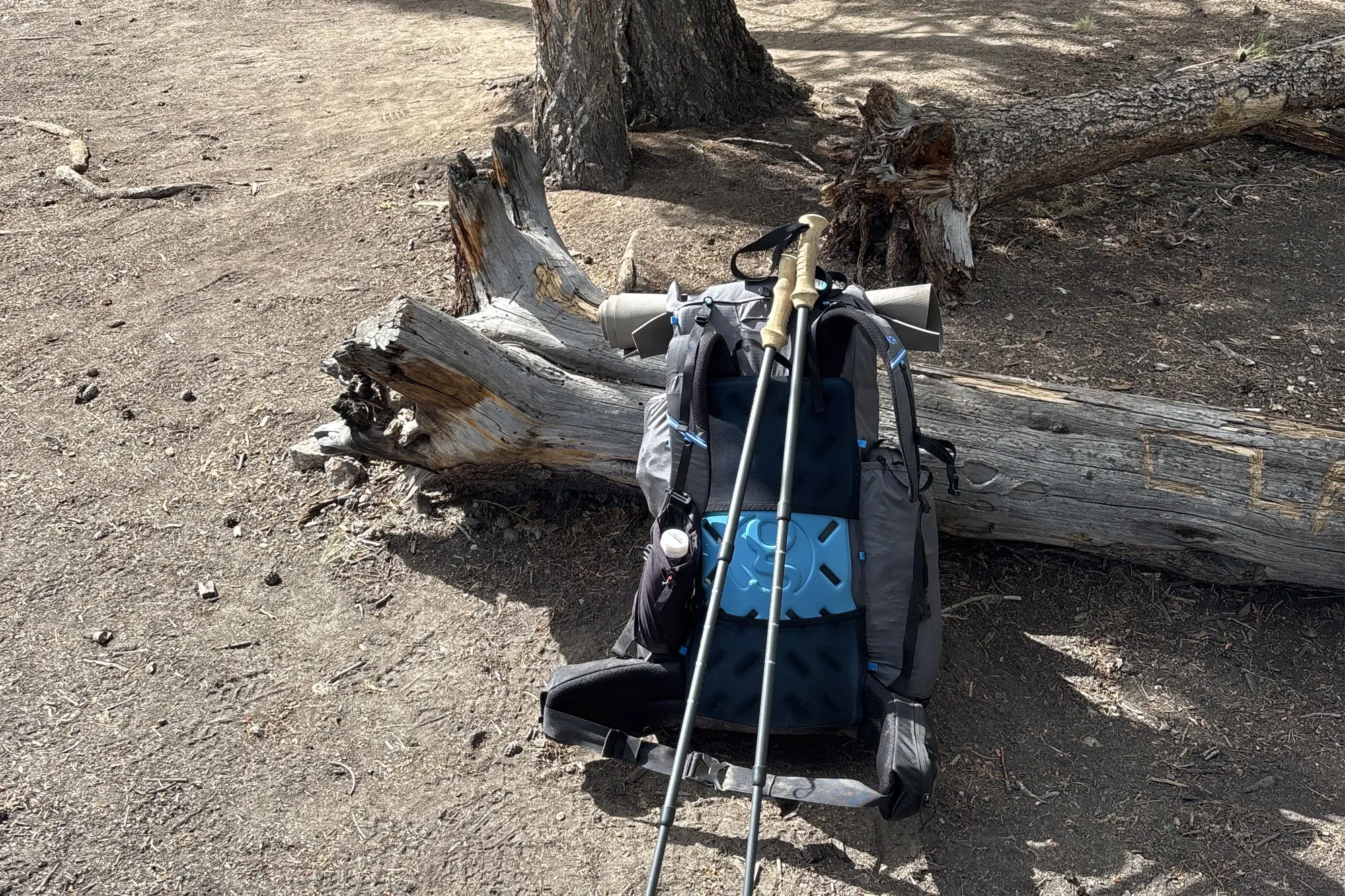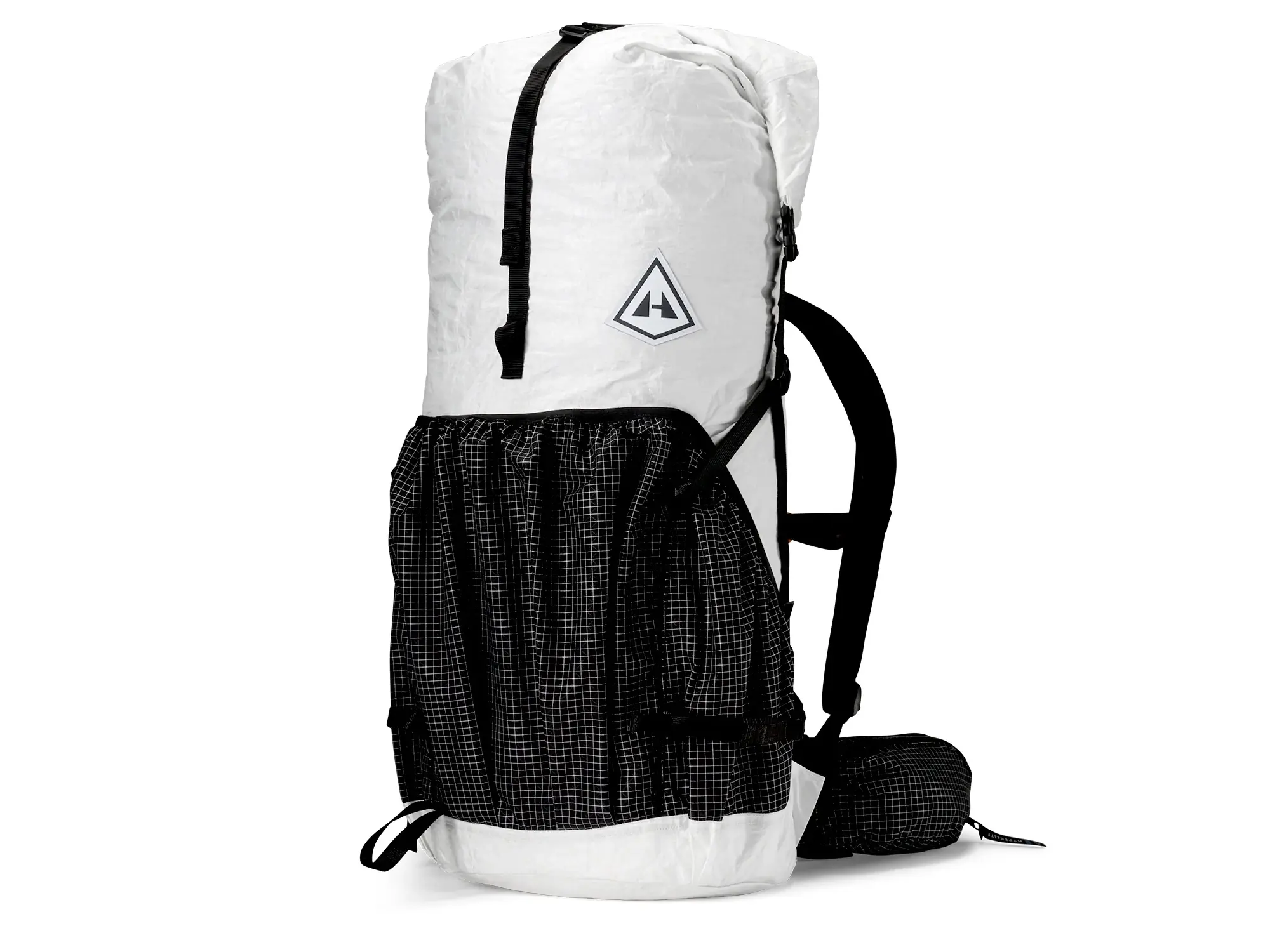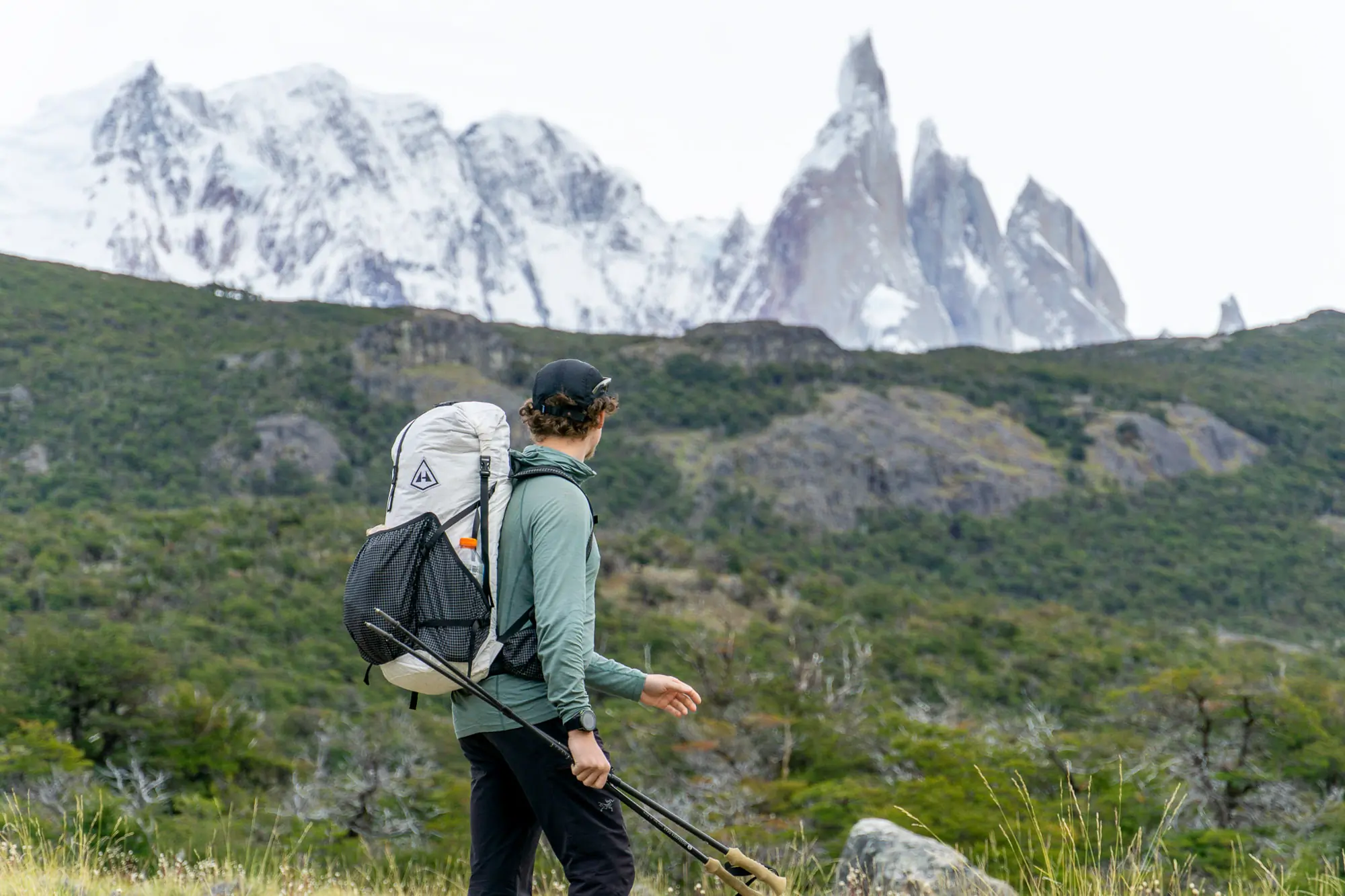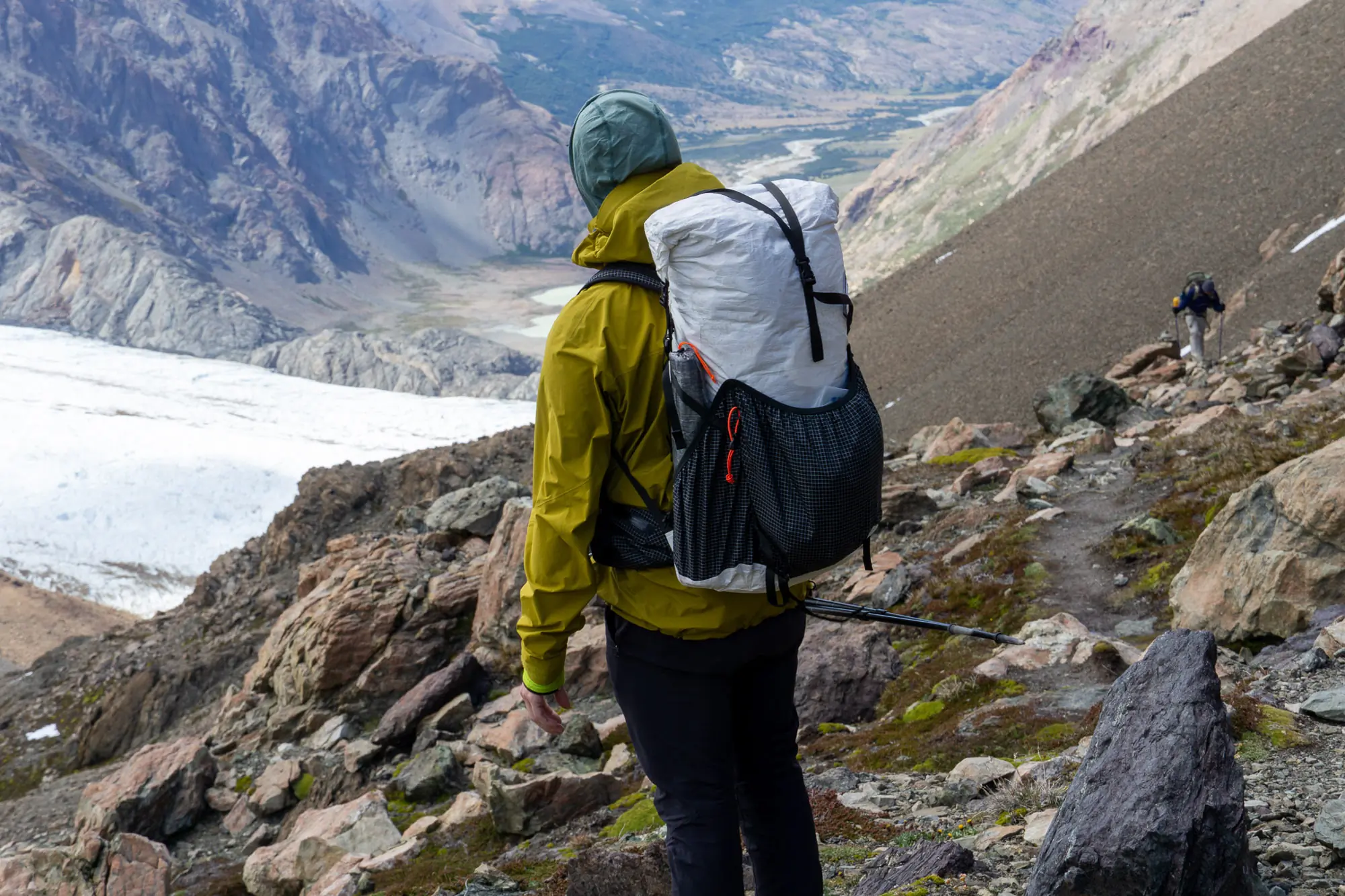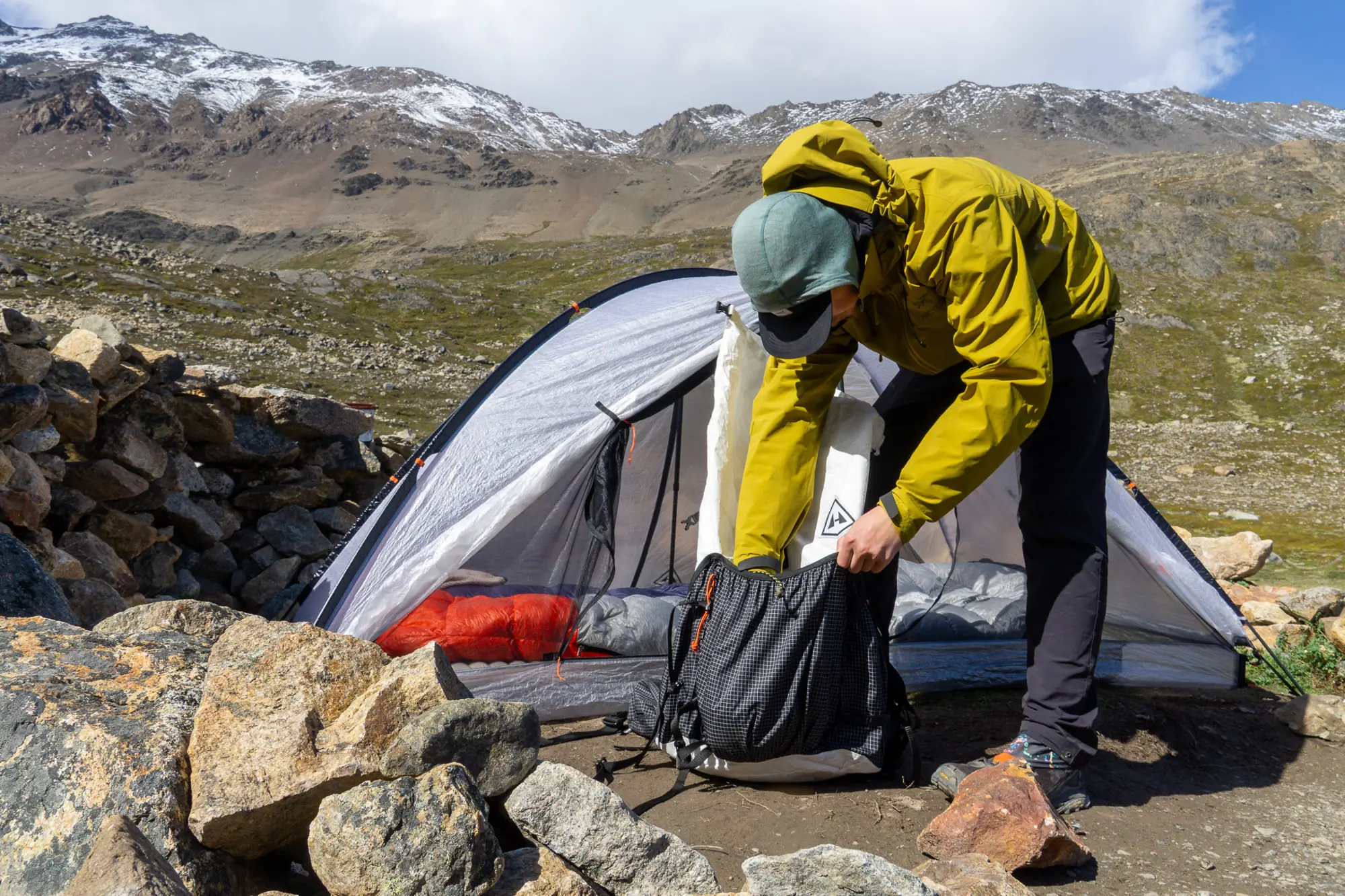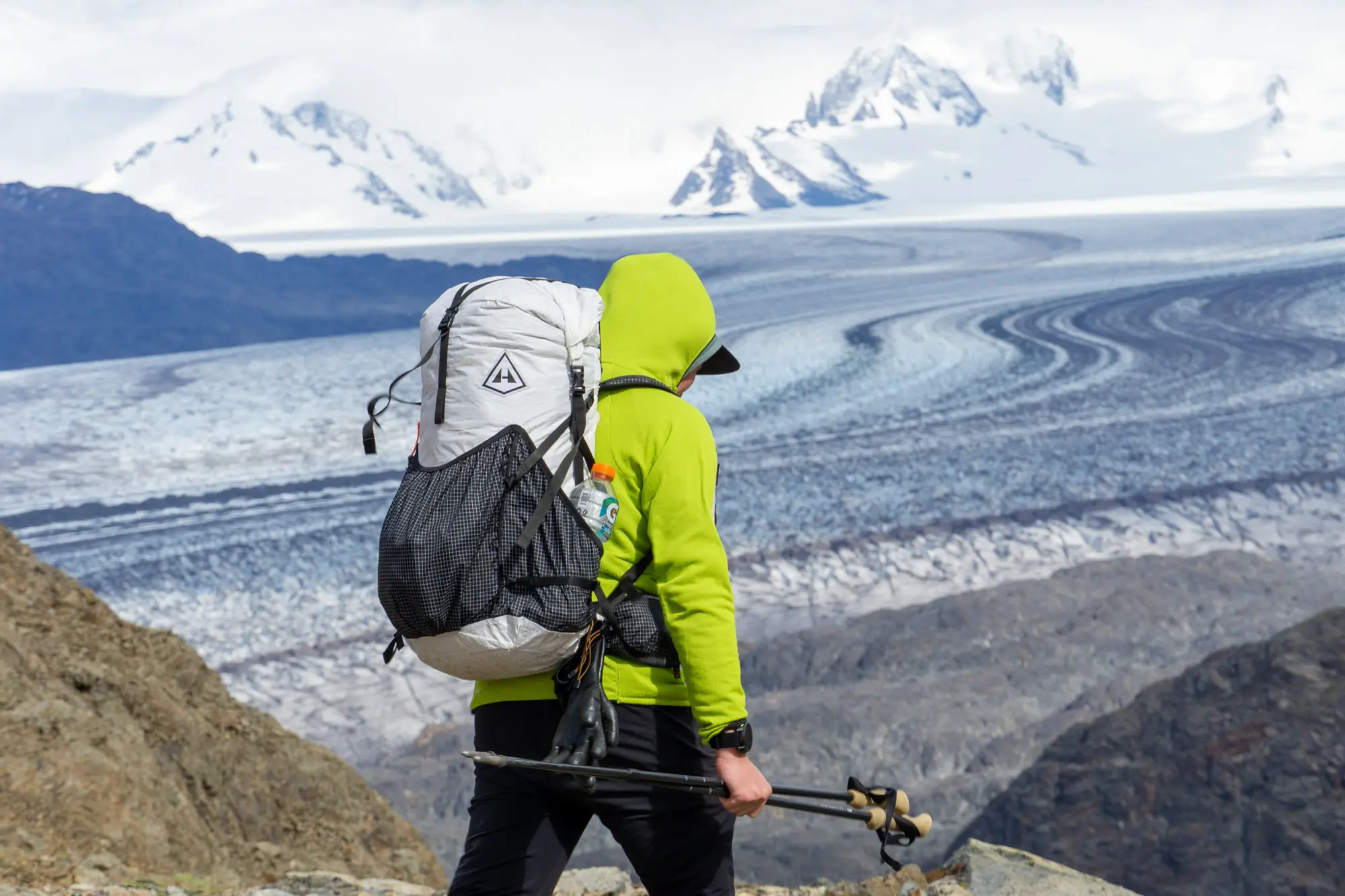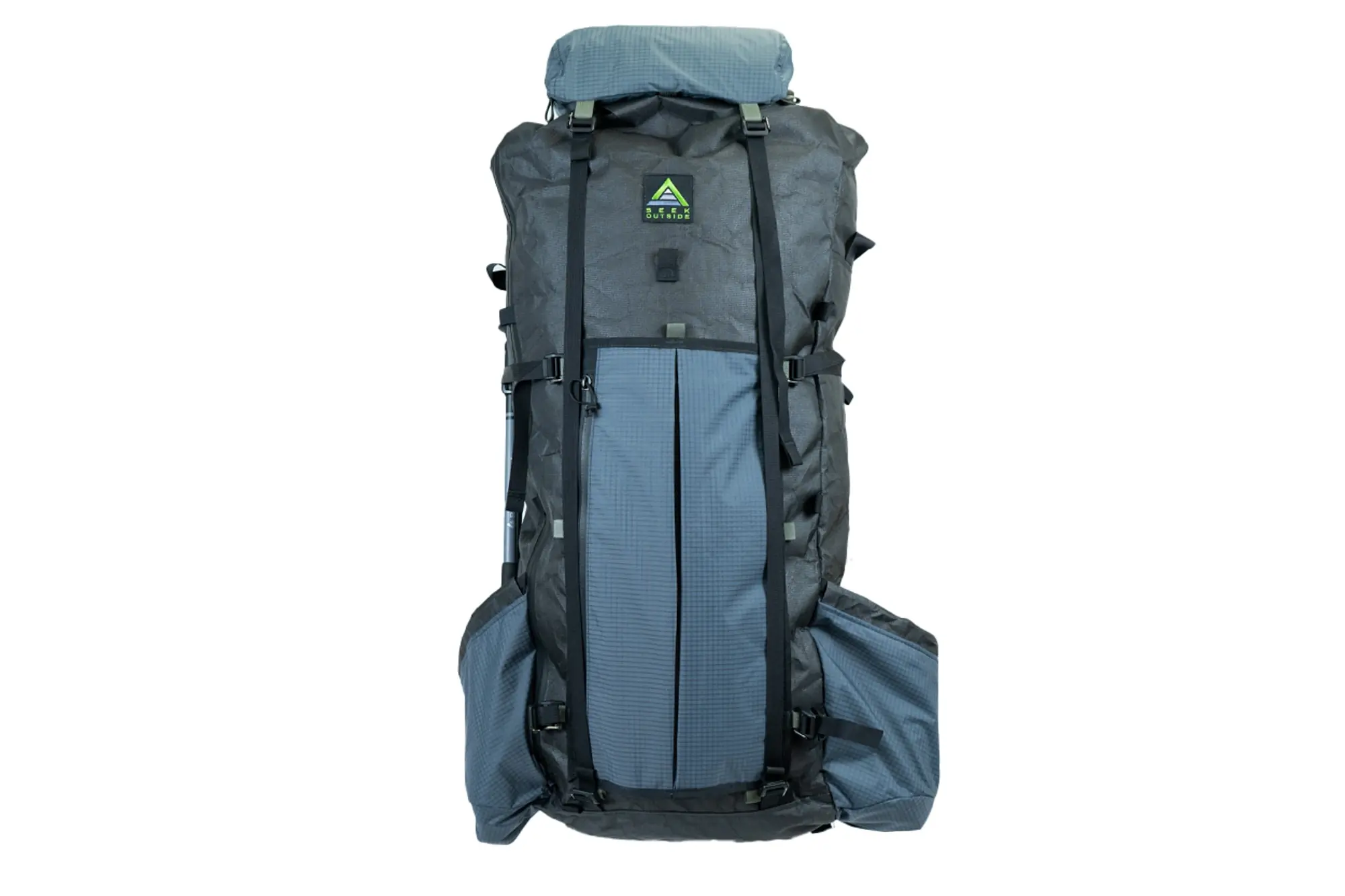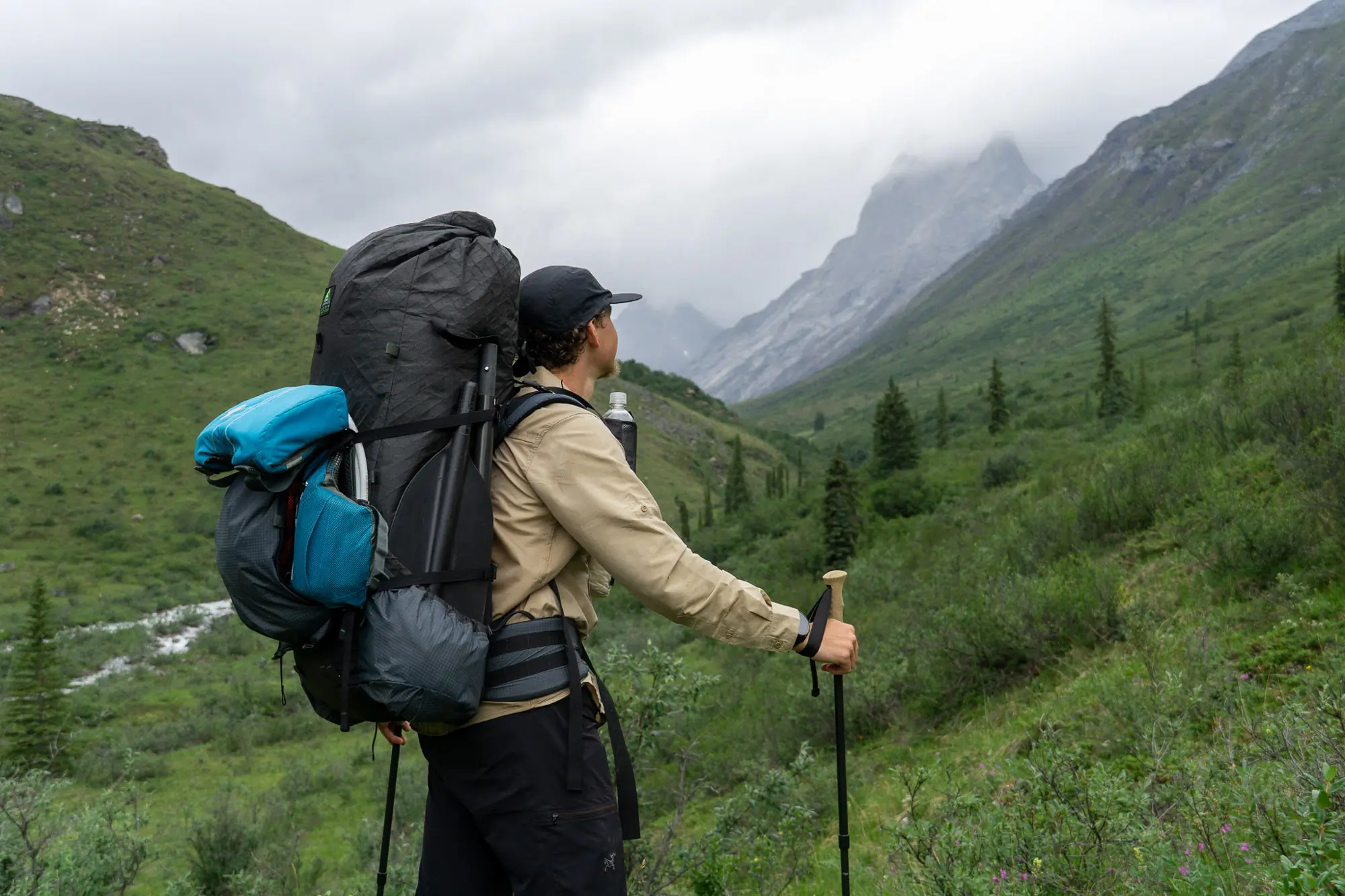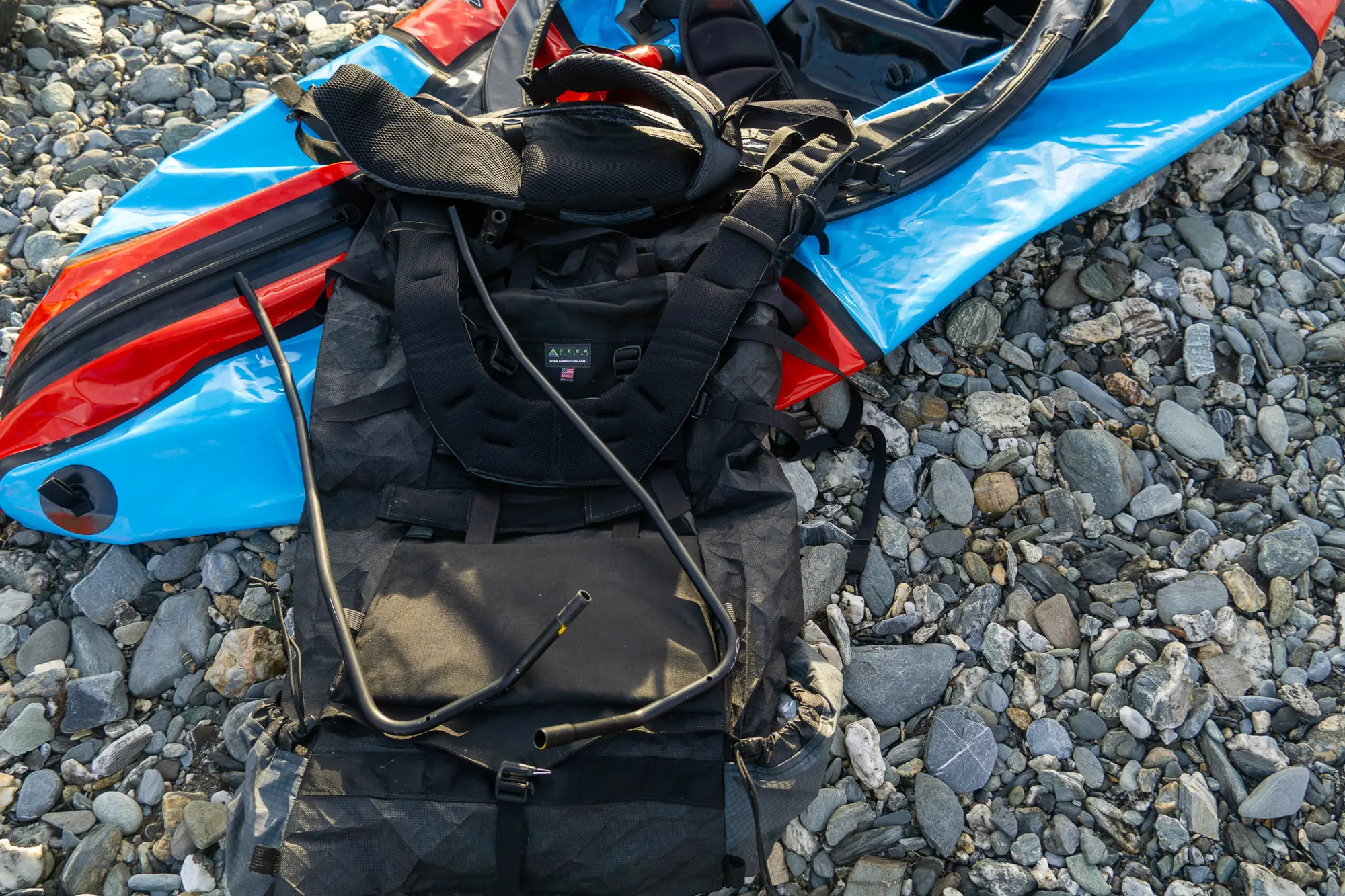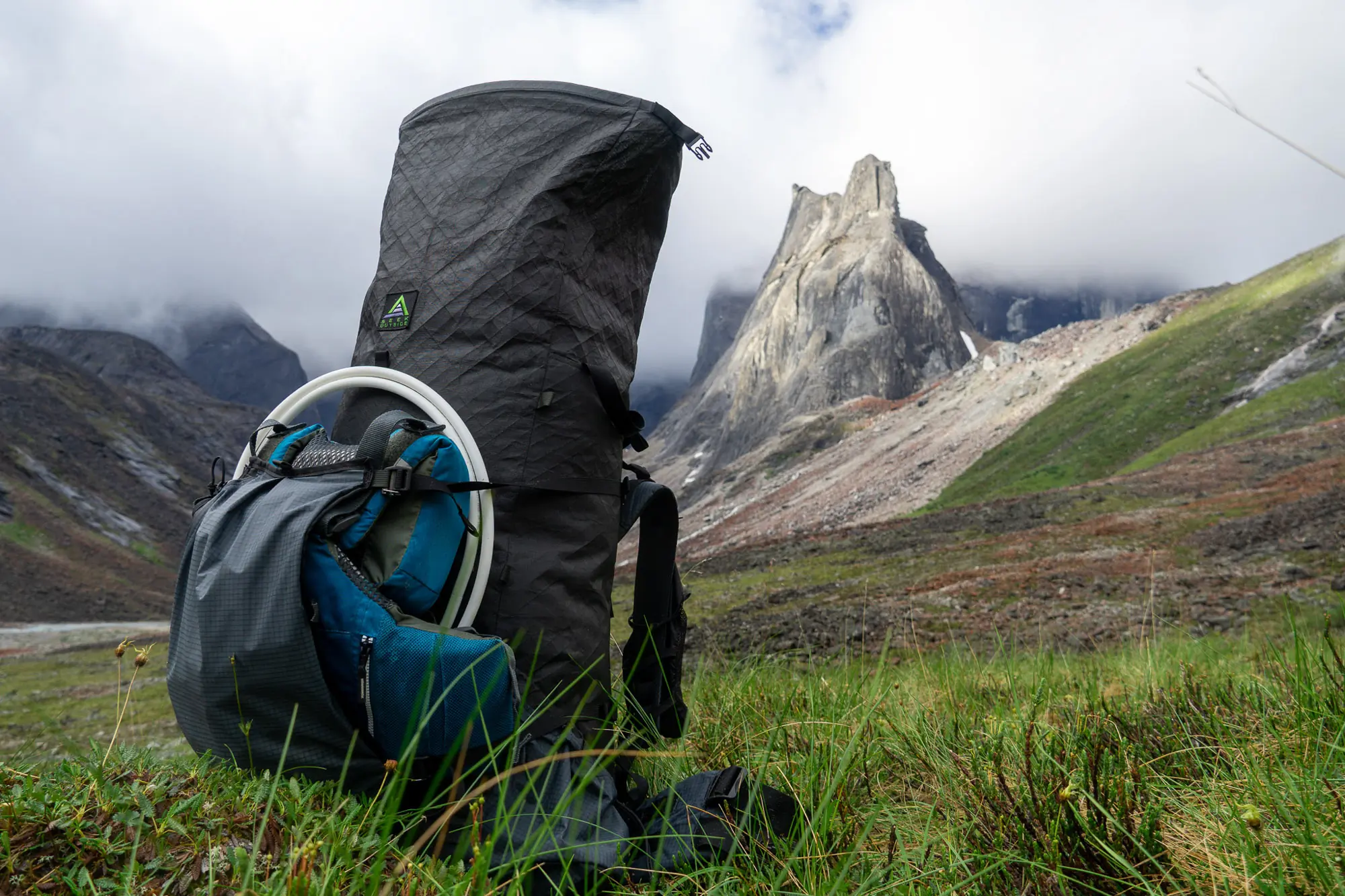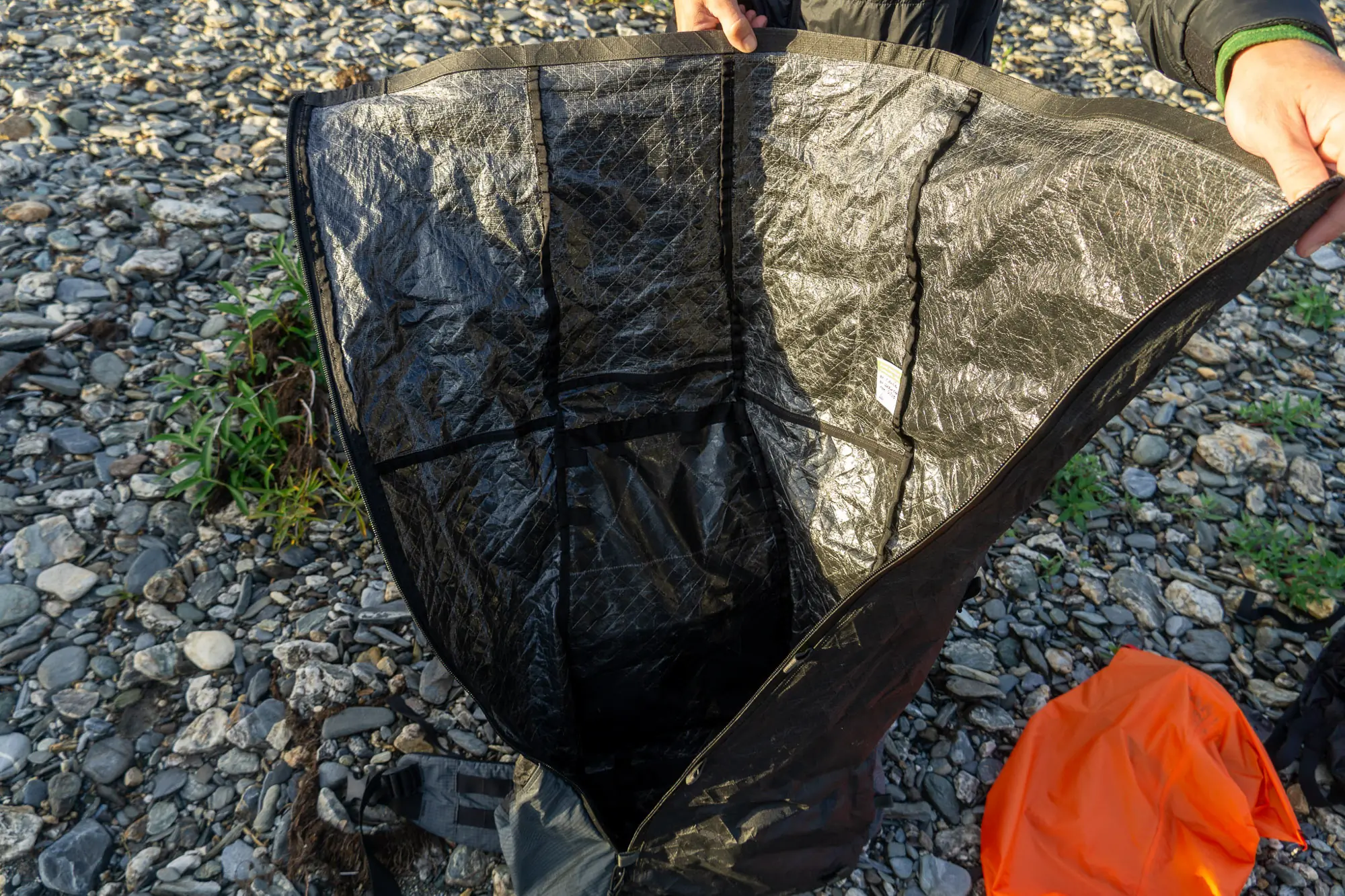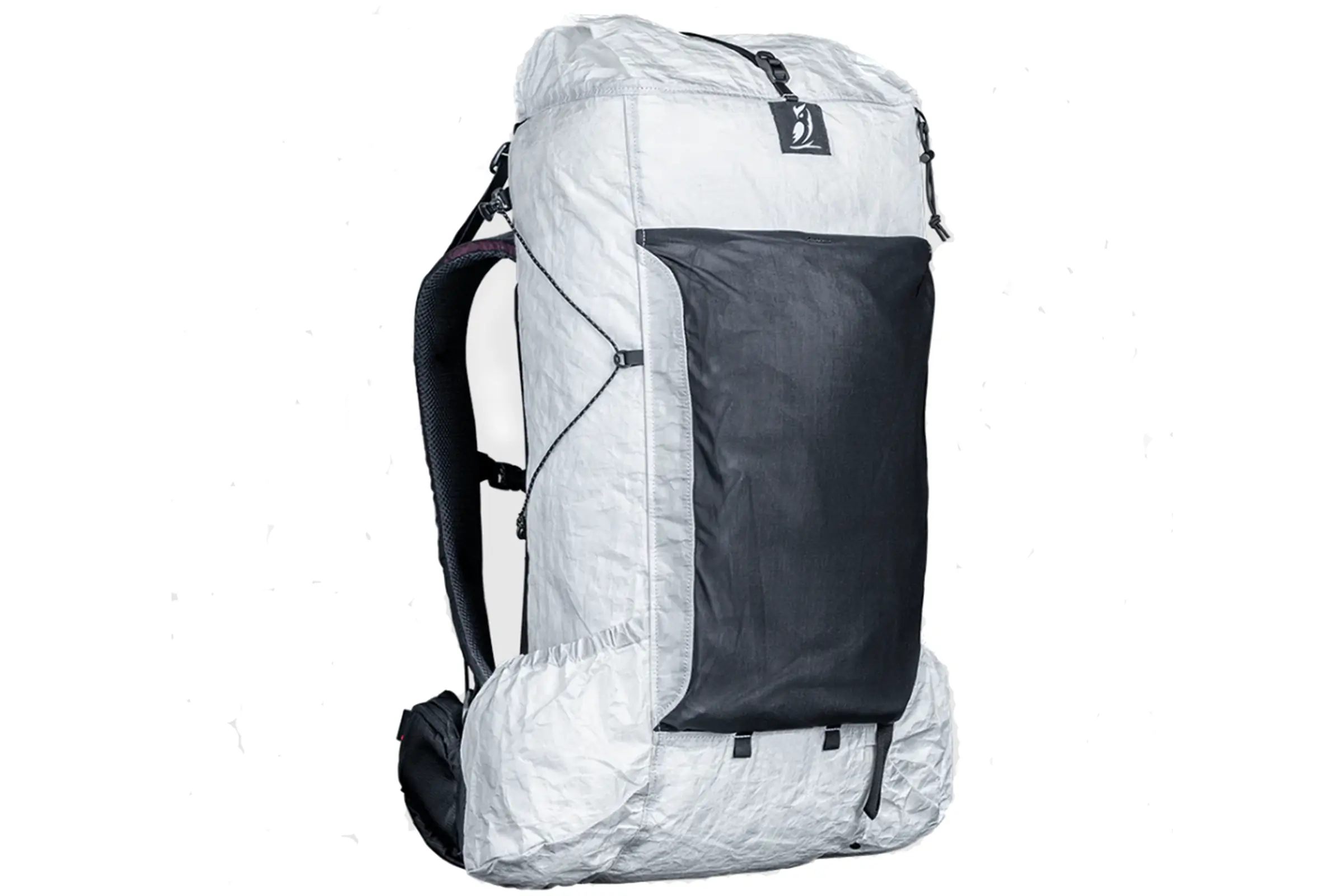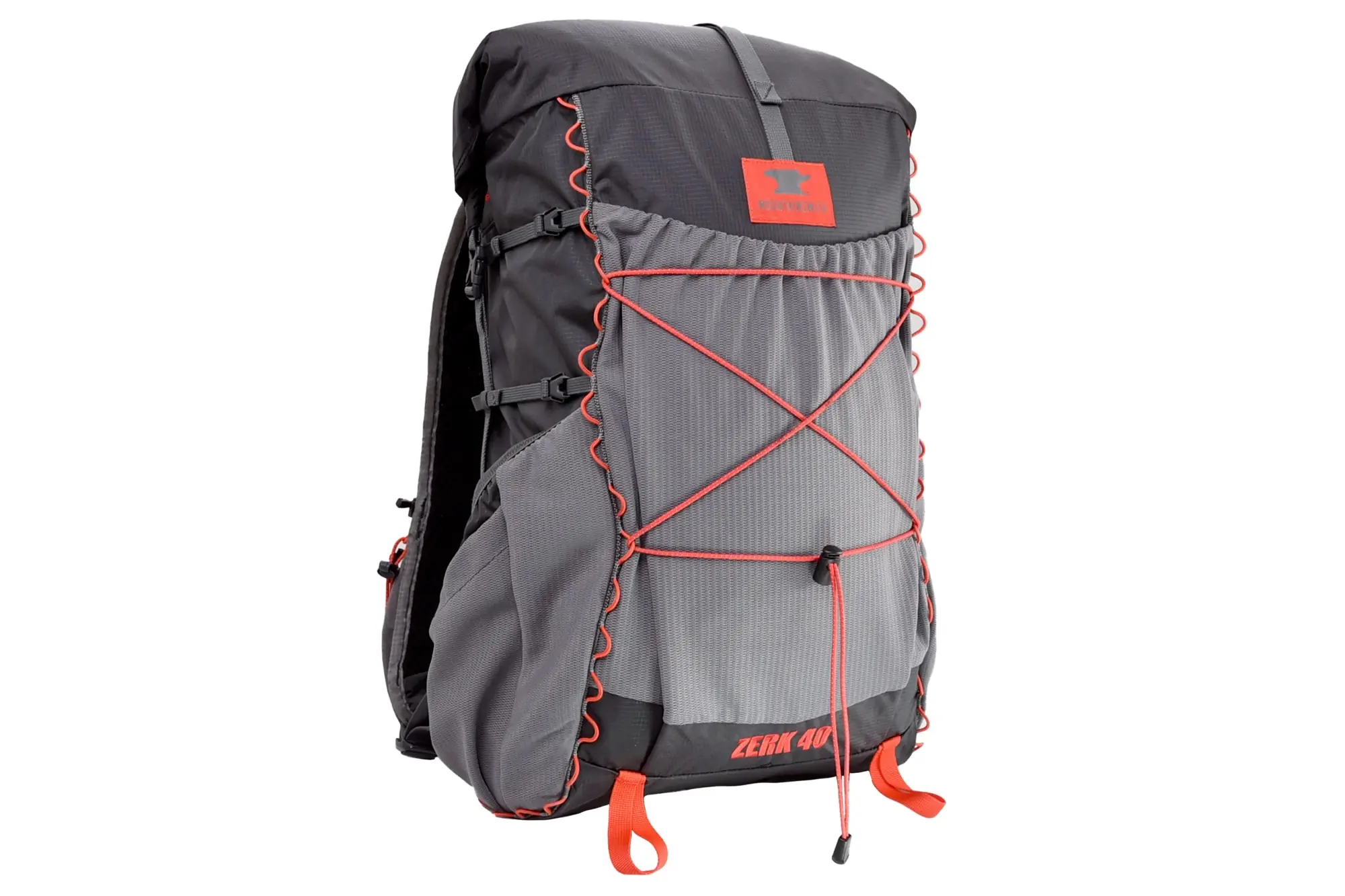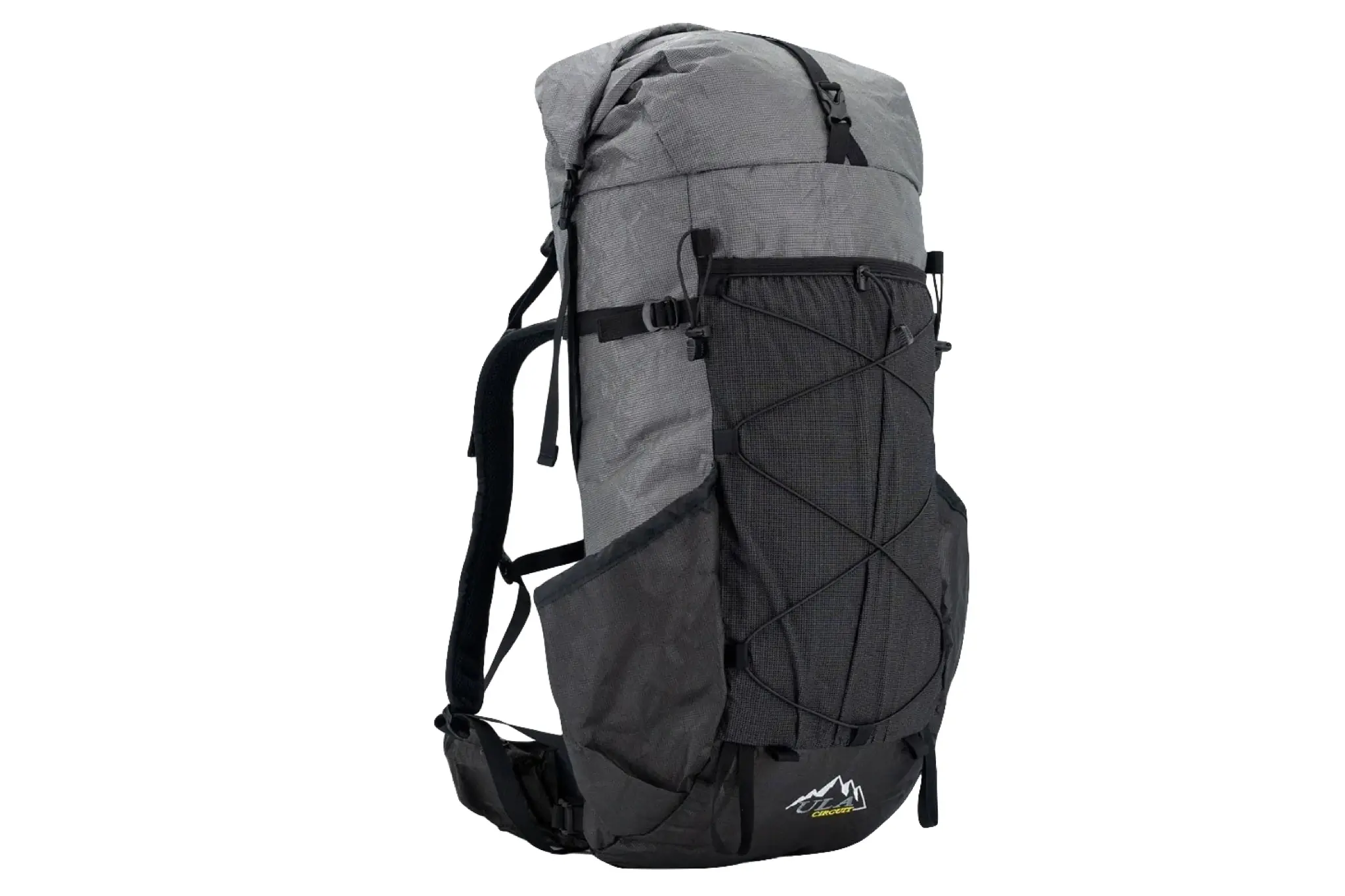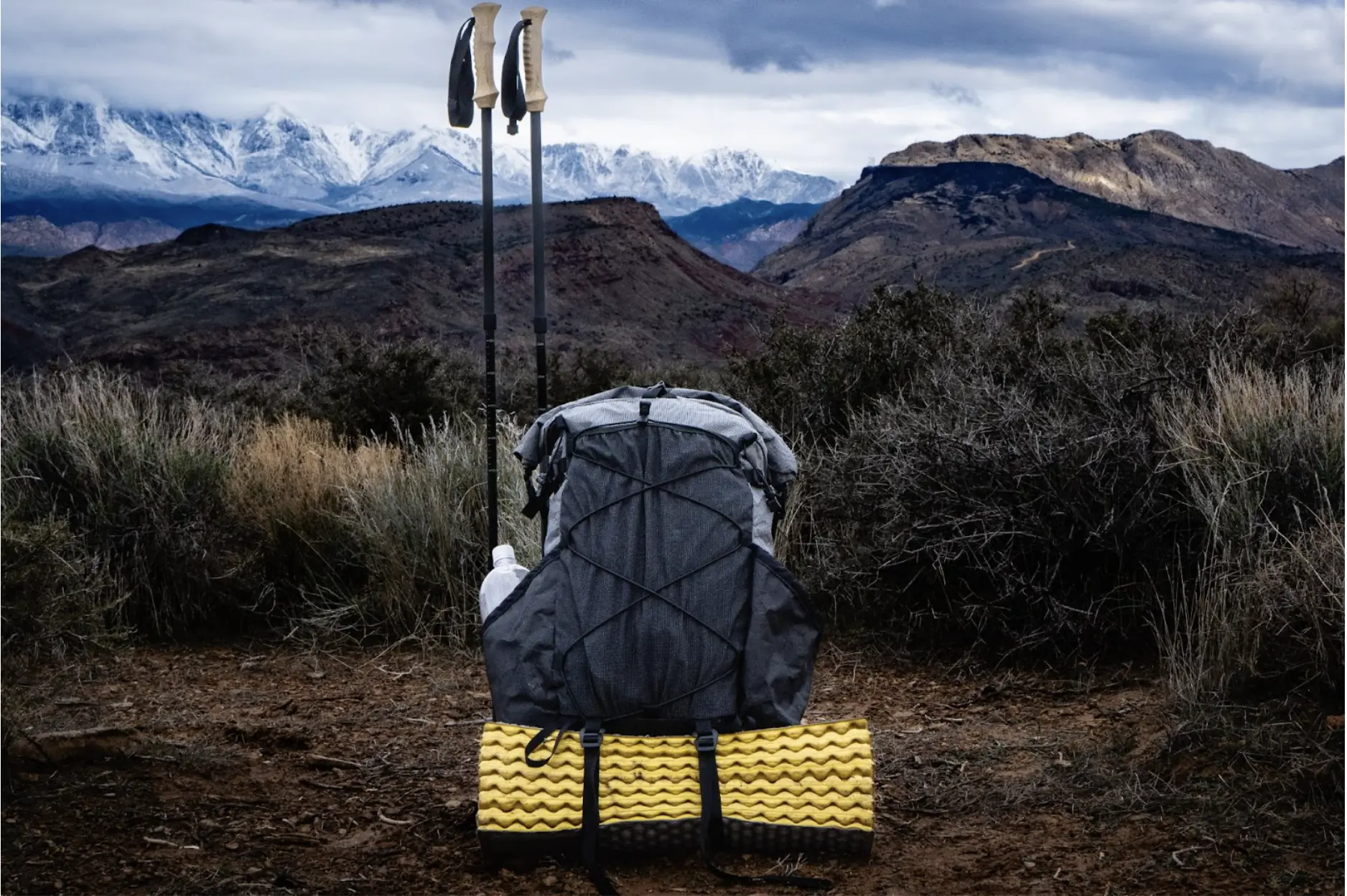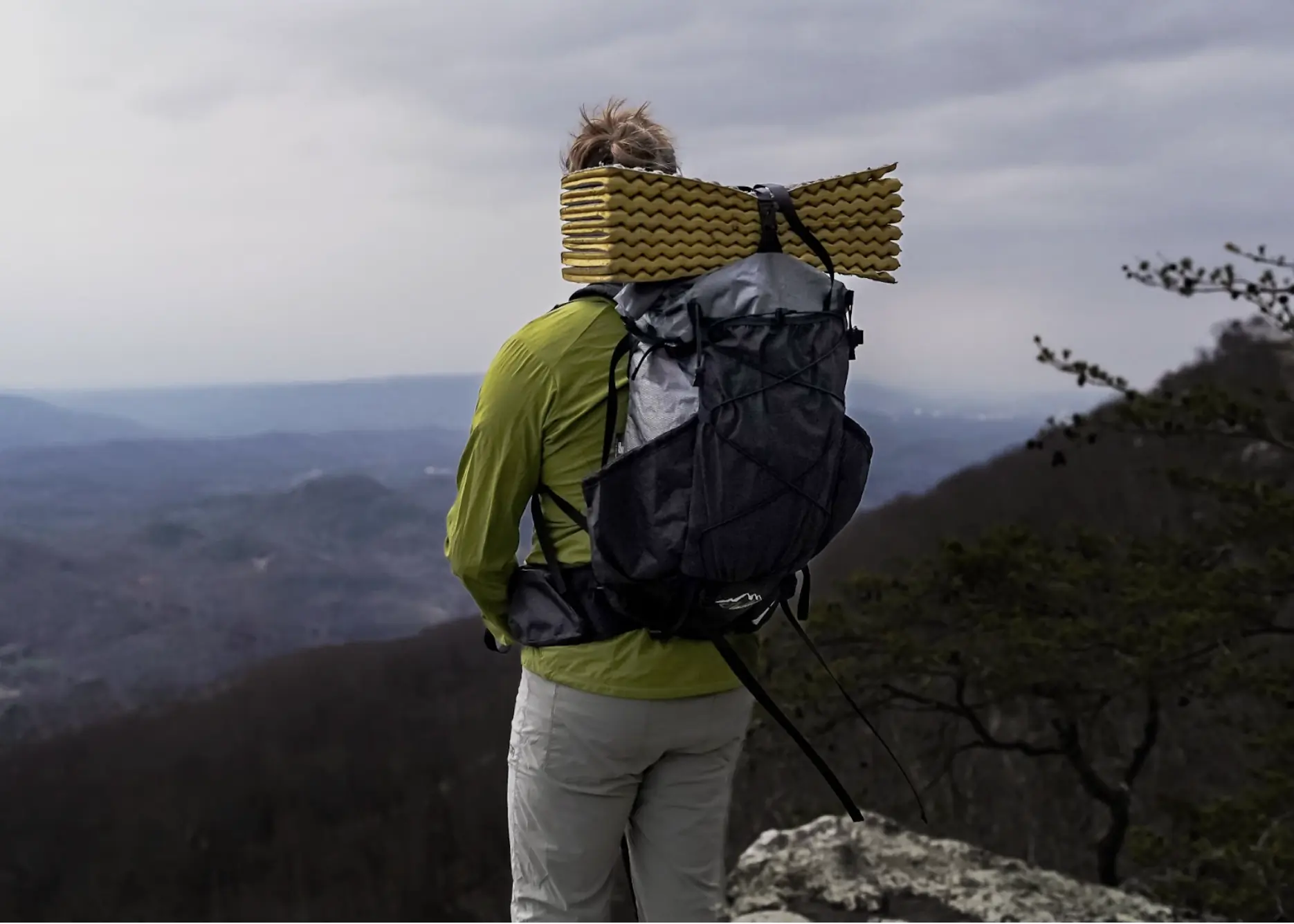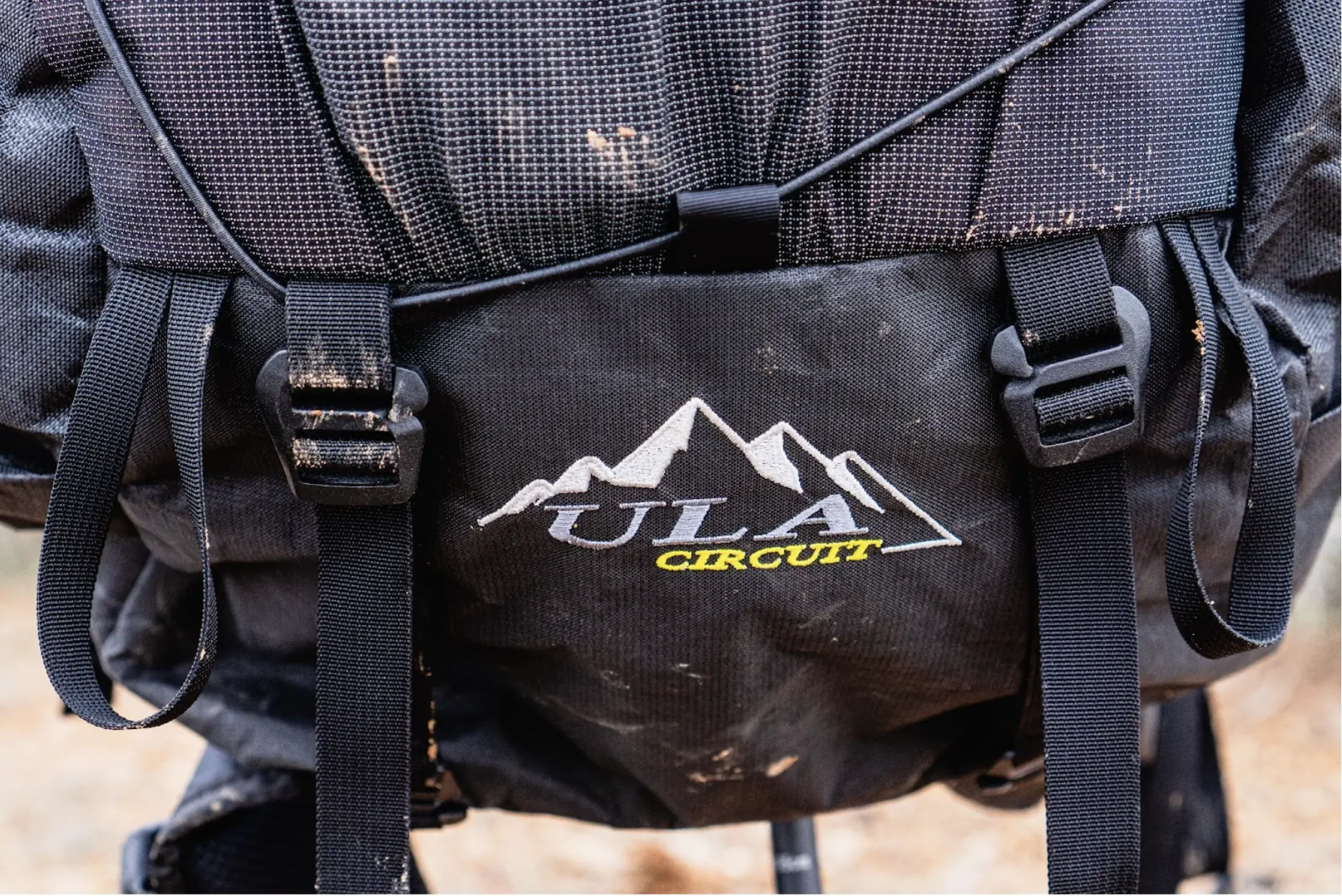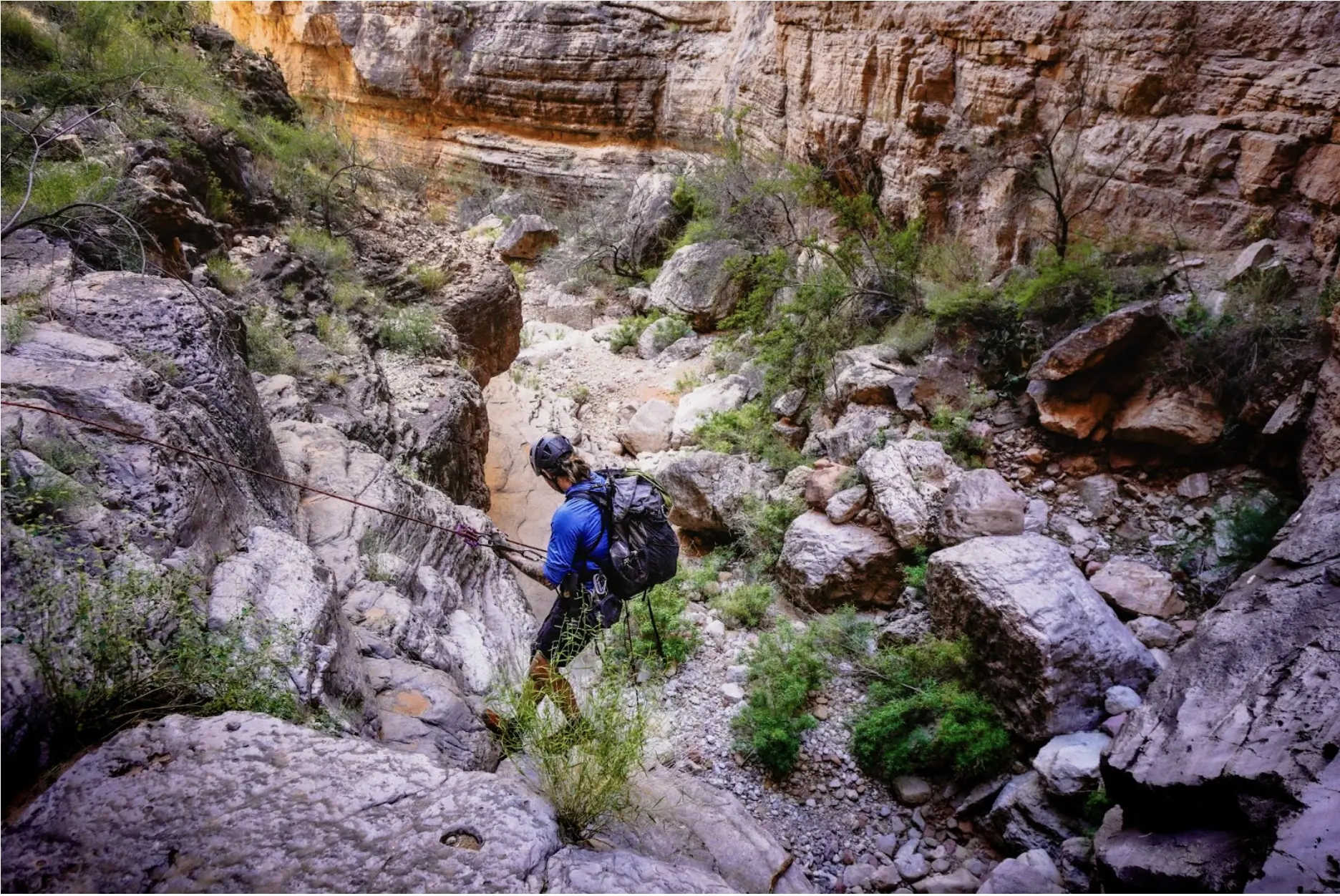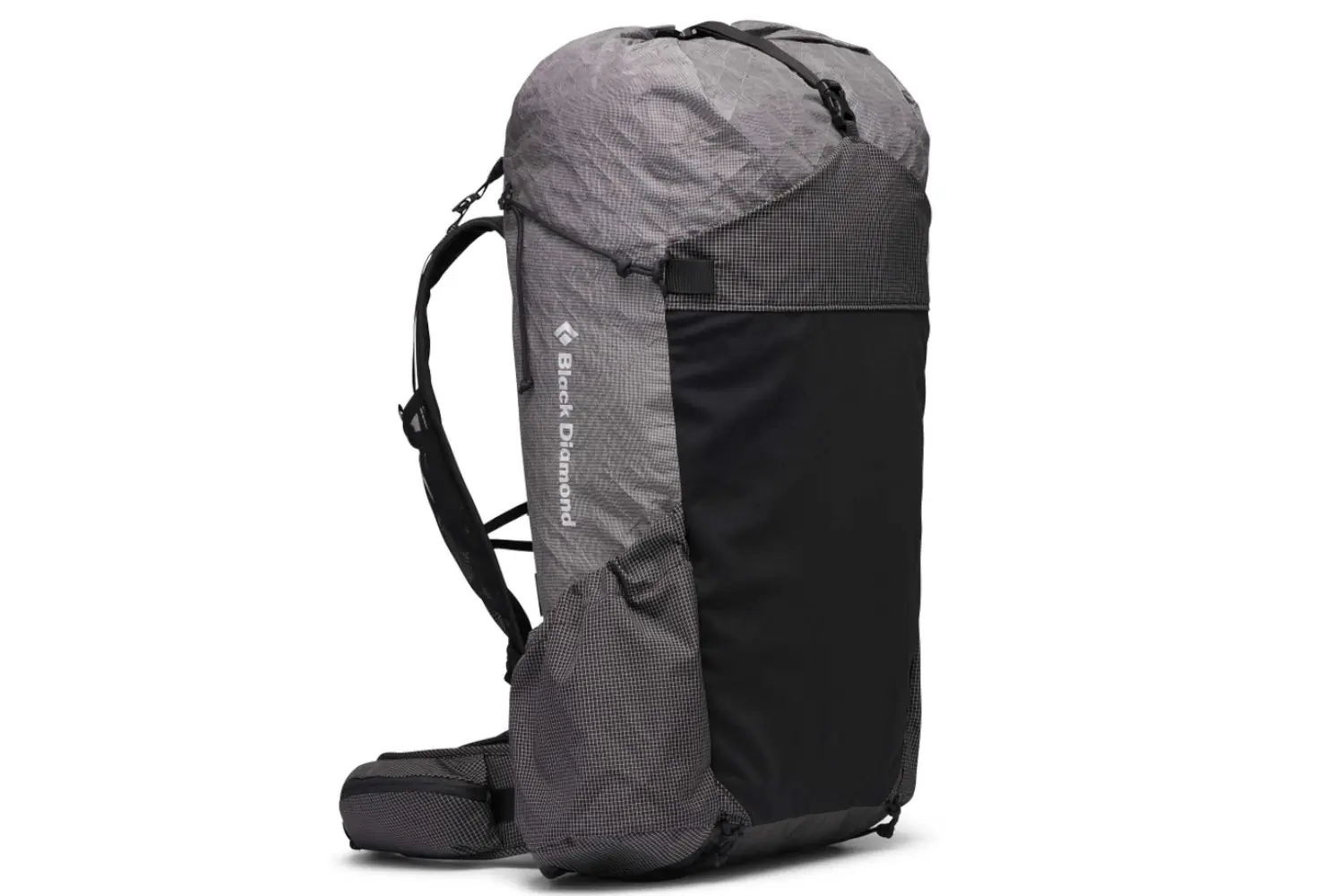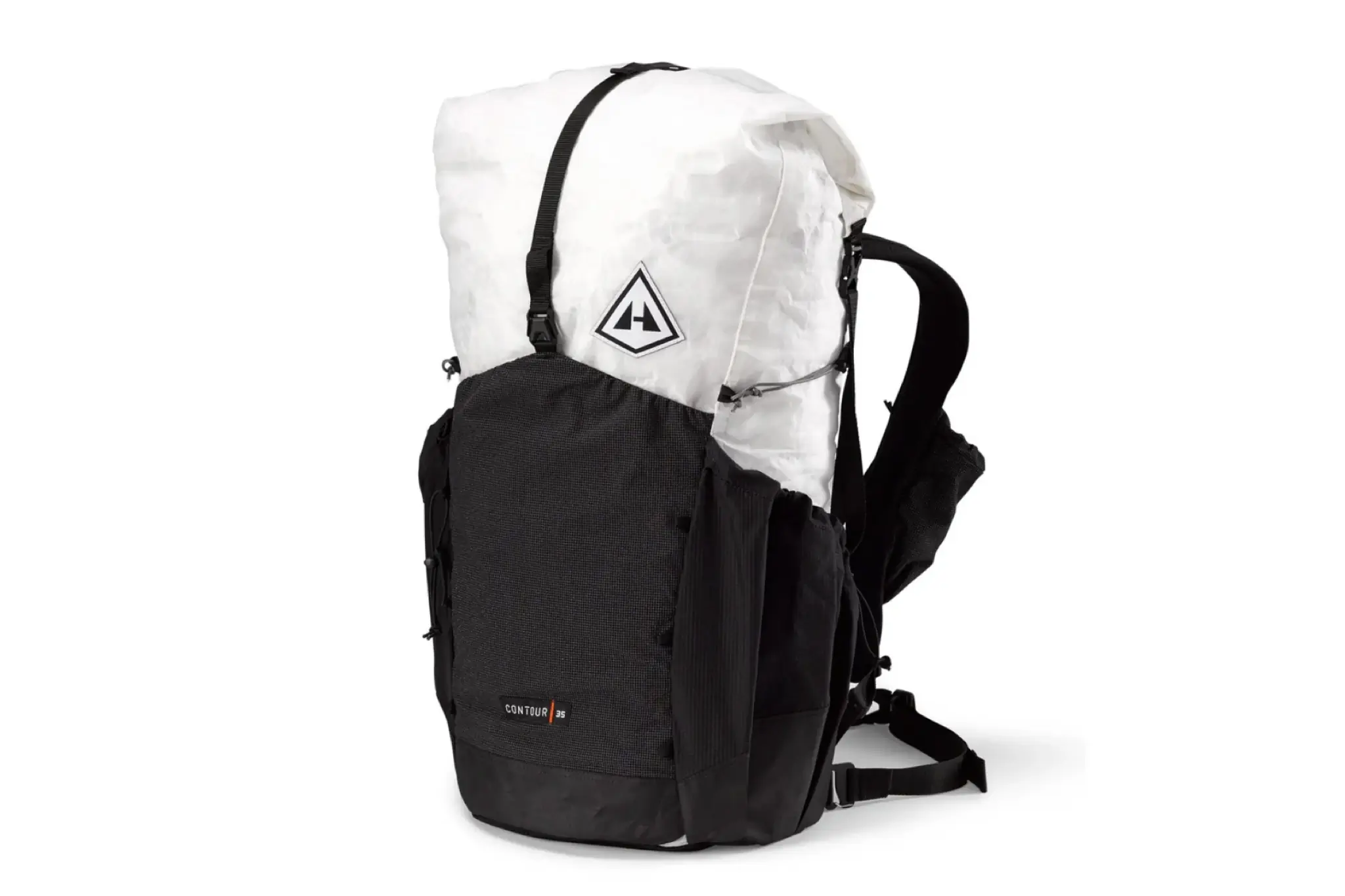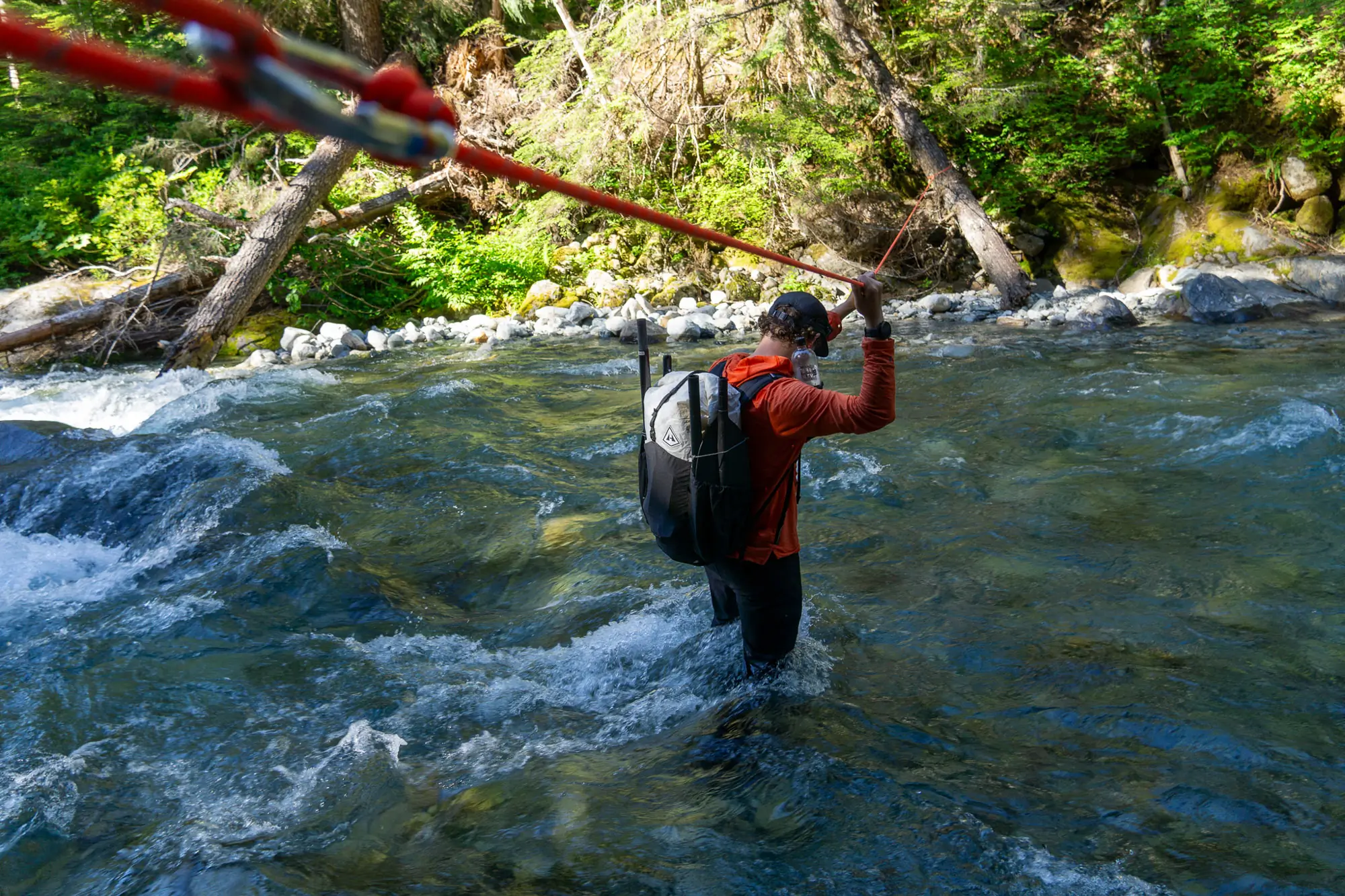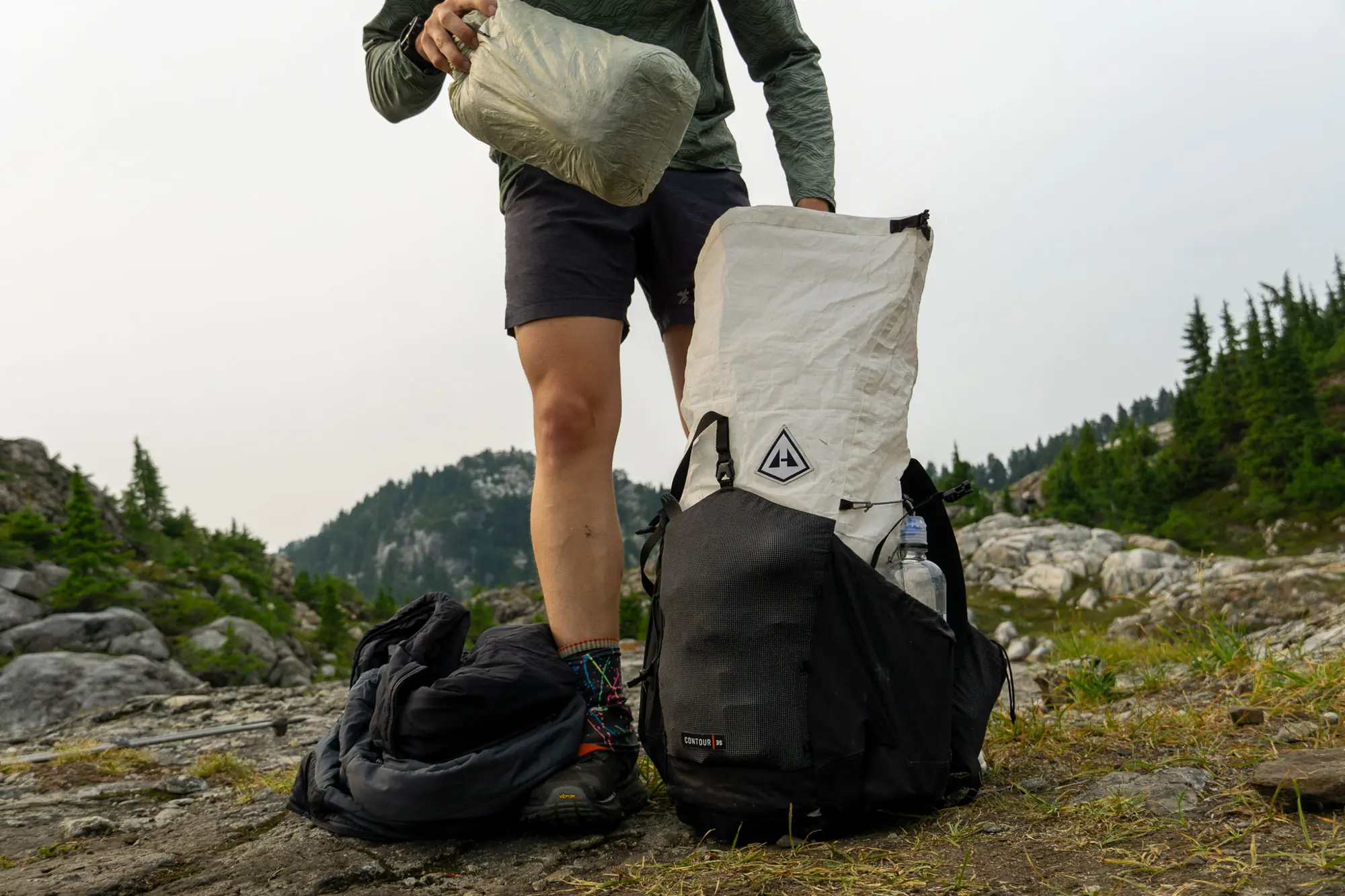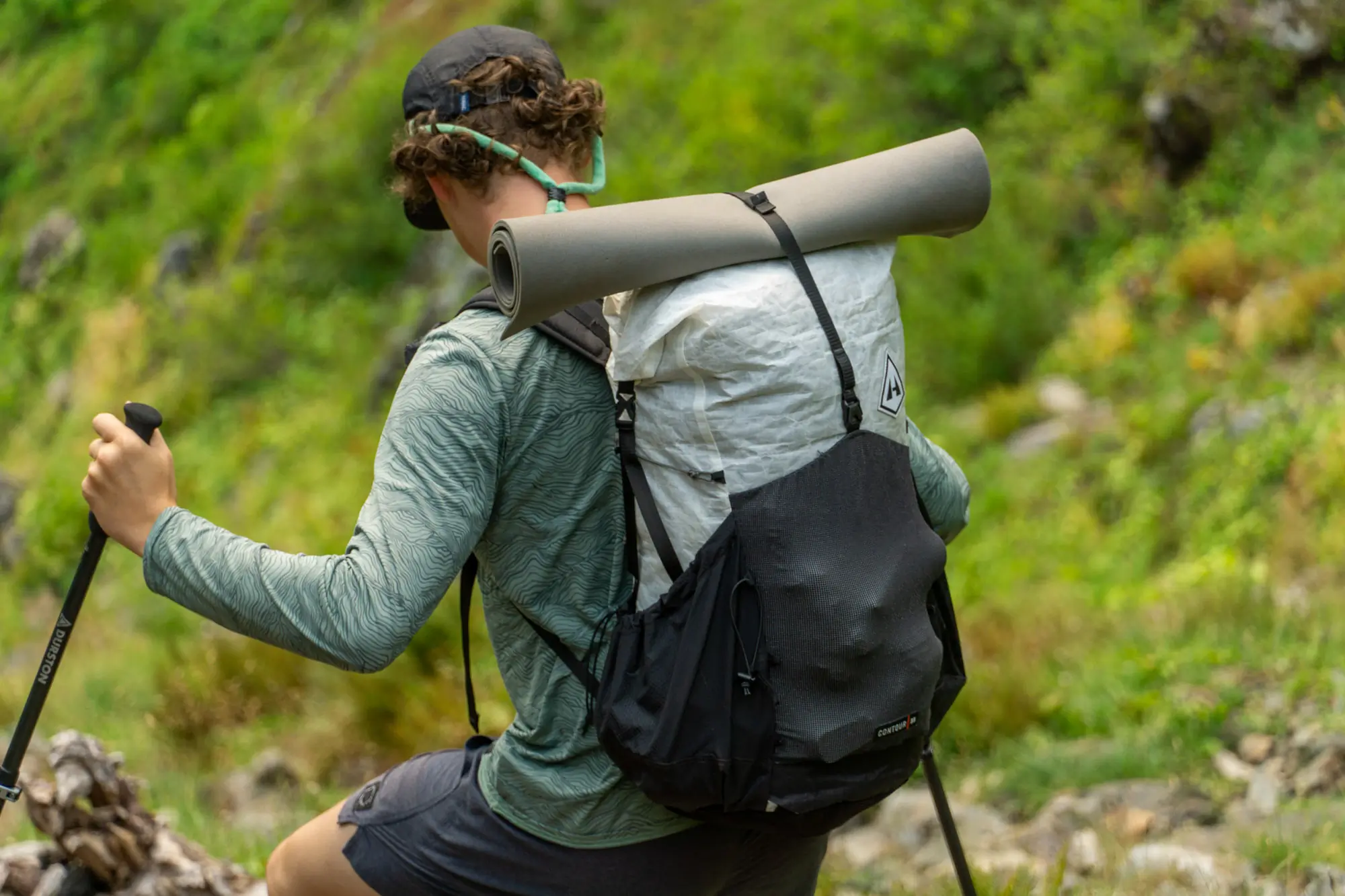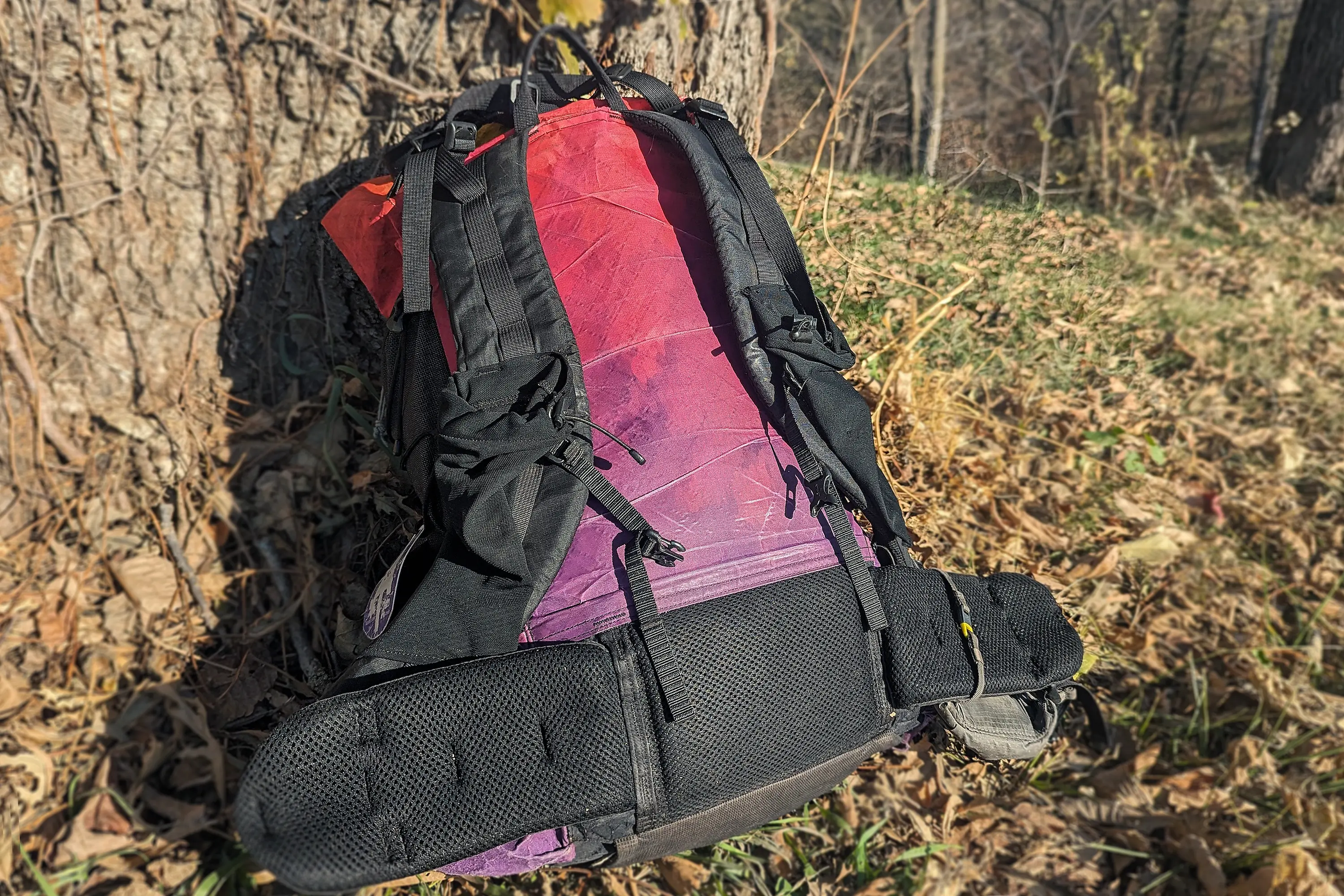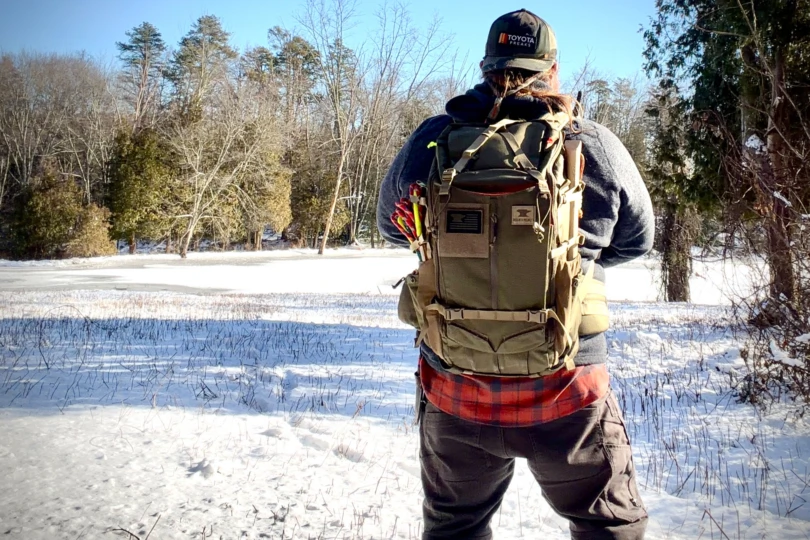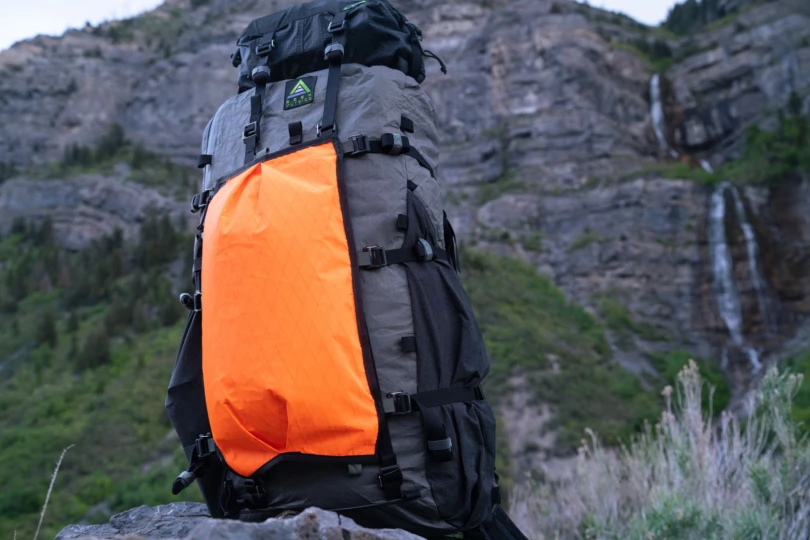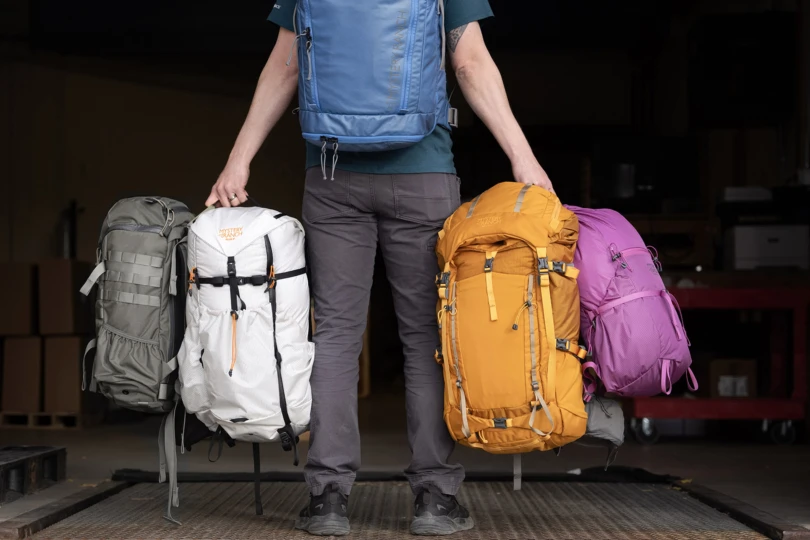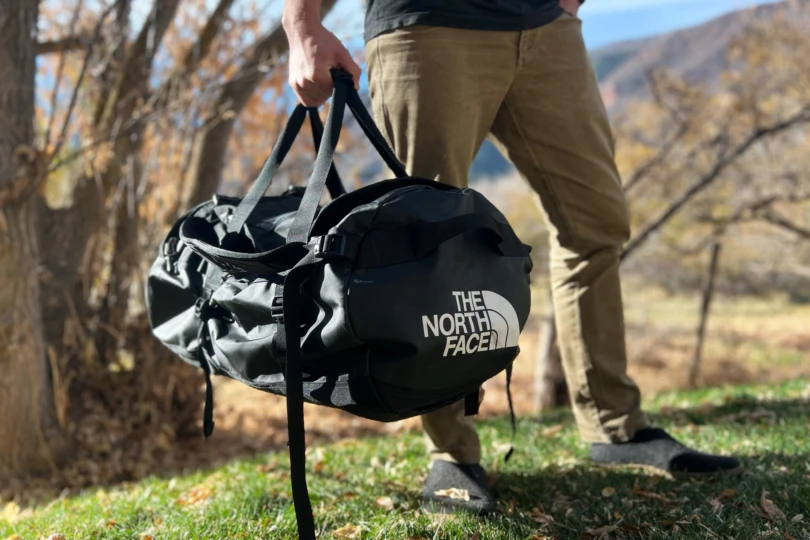Ultralight backpacking is exploding in popularity — and rightfully so: Going light means going farther, faster, and more comfortably, but you’ll need the right pack to do it with. We’ve been testing the best ultralight backpacks for more than a decade now, and have rucked in over 25 of the most dialed to key in on our top selections today.
To help narrow down the choices, we interviewed several knowledgeable thru-hikers and tested countless models to find the best ultralight backpacks, from the time-tested Durston Kakwa 55 to the more budget-friendly Gossamer Gear Kumo 36. If you’re looking to pack light, you’ve come to the right place.
All of our current testers are long-distance hikers, and collectively, we’ve put down somewhere north of 15,000 miles on long trails everywhere from the Pacific Crest Trail to Iceland’s Highlands and Patagonian cross-country treks. We know the importance of balancing durability, weight, and functionality when scoping out the best ultralight backpack for your journey, and we allowed only the crème de la crème into this roundup.
Editor’s Note: We updated our Ultralight Backpacks guide on August 27, 2025, to elevate the updated Hyperlite Mountain Gear Southwest 55 to the title of “Most Durable UL Pack” — thanks entirely to the new woven DCF material it’s now offered in. We also added the Seek Outside Unaweep 6300, an incredible 103L load-hauler, and the Outdoor Vitals CS40 Ultra, a carbon-fiber framed pack.
The Best Ultralight Backpacks of 2025
Durston Kakwa 55
-
Comfort
7.0
-
Volume & Organization
7.0
-
Weight
9.0
-
Durability
7.0
- Weight: 1 lb., 14.3 oz. (medium)
- Volume: 61L total – 46 L internal, 15L external (medium)
- Material: Ultra 200X with a heavy-duty polyester knit mesh
- Outside storage: Two zippered hip belt pockets, two cinchable shoulder strap pockets, two side water bottle pockets, one front stash pocket
- Hip belt: Fully integrated with pockets
- Frame type: Removable aluminum stay connected to hip belt and load lifters
- Sizing: Small, medium, and large
- Bear can fit: BV450 and smaller fit inside horizontally, or can be V-strapped on top
Pros
- Impressive load carrying for the UL pack weight
- Ultra 200X material is supremely tough, while still being light
- Cottage industry attention to detail and frequent design updates driven by feedback
- Easy-to-access shoulder strap pockets
Cons
- Not the lightest UL pack out there, and 55 L is a lot for some summer load-outs
- No stretch bottom pocket for snacks
- Availability can sometimes be tough
Gossamer Gear Kumo 36
-
Weight
7.0
-
Comfort
7.0
-
Volume & Organization
7.0
-
Durability
6.0
- Weight: 1 lb., 4 oz. (medium)
- Volume: 40 L total – 32 L internal (maxed), 8 L external (medium)
- Material: 70 & 100D Recycled Robic Nylon
- Outside Storage: Two side water bottle pockets, two shoulder strap pockets, one front stretch pocket, one zippered lid pocket, one ice axe attachment
- Hip Belt: Removable minimalist hip belt with two height settings
- Frame Type: Removable sit pad (essentially frameless)
- Sizing: Two sizes fit 17” to 21.5”+ torsos
- BV500 Bear Can Fit: Tight, fits inside vertically or packed under lid
Pros
- Minimalist ultralight design
- Comfortable and cushy shoulder straps with built-in pockets
- Removable sit pad allows for customization of back panel space
- Pocketed removable hip belt with two height settings great for dialing in fit
Cons
- Fabrics are on the less durable side
- Stretch mesh will loosen over time
- Non-traditional lid closure
- Not the best for heavier base weights
REI Co-op Flash Air 50 Pack
-
Comfort
7.0
-
Volume & Organization
7.0
-
Weight
8.0
-
Durability
6.0
- Weight: 1 lb., 15 oz.
- Volume: 50 L
- Material: UHMWPE ripstop nylon (87% nylon/13% polyethylene)
- Outside Storage: Two zippered hip belt pockets, two side water bottle pockets, two exterior side pockets, one front stash pocket, ice axe/trekking pole tether
- Hip Belt: Non-removable
- Frame Style: Spring steel stays
- Sizing: Small, medium, large
- BV500 Bear Can Fit: Inside vertically or strapped on top
Pros
- Pre-curved frame provides excellent comfort
- UHMWPE fabric is uber tough
- Water bottle pockets are front-angled and easy to snag
- Top Y-strap wrangles bulky items like bear canisters
- Compatible with REI Packmod accessories
Cons
- Back panel doesn't have the best ventilation
- Not fully waterproof design — will need other waterproofing solution
- Not the lightest option out there at nearly 2 pounds
Pa’lante V2
-
Weight
8.0
-
Comfort
7.0
-
Volume & Organization
8.0
-
Durability
8.0
- Weight: 1 lb., 1.7 oz. (16”)
- Volume: 43 L total – 31 L internal, 12 L external (16”)
- Material: 210D UHMWPE gridstop with a UHMWPE grid mesh
- Outside Storage: Two side water bottle pockets, two cinch-able shoulder strap pockets, one front stash pocket, one bottom stash pocket
- Hip Belt: Stashable minimalist hip strap with no pockets
- Frame Type: Frameless
- Sizing: 16” and 19” torso lengths
- BV500 Bear Can Fit: Very tight – can fit vertically or smaller cans strapped on top
Pros
- Insanely ultralight
- Bottom pocket for easy access on the go
- Durable mesh
- Great shoulder strap pocket design
Cons
- Requires careful packing to balance load
- Not the best for heavy base weights
- Tight fit for bear cans
- Regularly out of stock
Gossamer Gear Mariposa 60
-
Weight
7.0
-
Comfort
7.0
-
Volume & Organization
8.0
-
Durability
7.0
- Weight: 1 lb., 13.2 oz. (small); 1 lb., 15.2 oz. (medium); 2 lbs., 1 oz. (large)
- Volume: 60 L (36 L main compartment, 24 L exterior pockets)
- Material: 100- and 200-denier Robic high-tensile strength nylon
- Outside Storage: Two zippered hipbelt pockets, three side pockets, front mesh shove-it pocket, ice axe attachment
- Hip Belt: Removable with different shaped options
- Frame Type: Aluminum hoop with foam sit pad
- Sizing: Small, medium, large
- BV500 Bear Can Fit: Vertically
Pros
- Phenomenal organizational features
- Approachable price point
- Made with durable but light Robic nylon
- Excellent fit and adjustability
Cons
- Not the best ventilation
- Zippered top pocket difficult to use when pack is fully loaded
Hyperlite Mountain Gear Southwest 55
-
Comfort
7.0
-
Volume & Organization
8.0
-
Weight
8.0
-
Durability
8.0
- Access: Roll-top
- Tested Weight: 1 lb., 15 oz. (medium)
- Volume: 55 L
- Material: Dyneema Woven Composite 3.9
- Outside storage: 2 side pockets, 2 zippered hip belt pockets, ice axe attachment, front shove-it pocket
- Hip belt: Non-removable
- Frame type: Two aluminum stays and thin foam pad
- Sizing: Small, Medium, Large, Tall
- BV500 bear can fit: Vertically internally, or on top under V-strap
Pros
- Quite durable given its ultralight construction
- Stable and comfortable compared to other ultralight models
- Side and front external pockets have drain holes and reinforced bottoms
- Can be stripped down to a frameless version for quick and light missions
Cons
- Minimal features
- Expensive
Seek Outside Unaweep 6300
-
Weight
7.0
-
Durability
9.0
-
Load Capacity
10.0
-
Comfort
9.0
- Weight: 3 lbs., 11 oz.
- Volume: 103 L internal, 21 L external + side pockets
- Material: UltraPE 400 with a heavy-duty polyester face, and UltraGrid pockets
- Outside storage: Two side water bottle pockets, one front stash pocket
- Hip belt: Fully removable and dual-adjusting
- Frame type: Removable tube aluminum U connected to hip belt and load lifters
- Sizing: Three frame lengths, and five hip belt sizes
- Bear can fit: BV500 will fit upright
Pros
- Incredible weight-to-load capacity, with 103 L of internal space
- Revolution frame carries weight exceptionally well
- Ultra 400 material is rugged and lightweight
- Super-versatile strap system for creating your own load-lashing solutions
Cons
- Price
- Can be tough to size without trying on first
Other Ultralight Packs We Dig
We’ve logged some serious miles in the packs above, but we’ve also spent some time in other stellar UL packs. Check out the alternates below.
-
Weight
7.0
-
Comfort
7.0
-
Volume & Organization
7.0
-
Durability
7.0
- Weight: 1 lbs., 11 oz.
- Volume: 53 L (41L main, side pockets 2L each, stretch pocket 6L, hip belt pockets 1L each)
- Material: Challenge UltraWeave 200
- Outside Storage: Two zippered hip belt pockets, two side pockets, front mesh shove-it pocket
- Hip Belt: Padded, non-removable
- Frame Type: Two carbon fiber stays
- Sizing: Small, Medium, Large
- BV500 Bear Can Fit: Vertically
Pros
- Comfortable
- Lightweight
- Perforated foam back panel and hip belt
Cons
- Expensive
- Only comes in 40L size
-
Weight
7.0
-
Comfort
7.0
-
Volume & Organization
7.0
-
Durability
6.0
- Weight: 1 lb., 13 oz.
- Volume: 51 L total – 40 L internal (maxed), 11 L external
- Material: 210D recycled Extreema ripstop with a nylon stretch mesh
- Outside Storage: Two dual layered side water bottle pockets, two cinch-able shoulder strap pockets, one front stash pocket daisy chains, two ice axe attachments
- Hip Belt: Removable minimalist hip belt with small pockets
- Frame Type: Removable frame sheet
- Sizing: One size fits 16” to 19” torsos
- BV500 Bear Can Fit: Tight, fits inside vertically or packed on top with top load strap
Pros
- Feature-rich design
- Removable frame sheet and hip belt
- Ample daisy chain customization
- Comfortable running style shoulder straps
Cons
- Excessive branding
- One size fits all, not great for short and tall folks
- Stretch mesh will loosen over time
-
Comfort
7.0
-
Volume & Organization
8.0
-
Weight
7.0
-
Durability
9.0
- Access: Roll top
- Tested Weight: 2 lbs., 1.8 oz.
- Volume: 68L total; 39L internal, 21L external
- Material: ULTRA 400X/ULTRA 200X Fabric + UltraStretch Mesh
- Outside Storage: Two zippered hip belt pockets, two adjustable side water bottle pockets, front shove-it pocket, ice axe/trekking pole attachments
- Hip Belt: Removable
- Frame Style: 1.2 oz carbon fiber and Delrin suspension hoop, a dense internal foam frame, and a single aluminum stay
- Sizing: Small, Medium, Large, X-Large
- BV500 Bear Can Fit: Vertically
Pros
- Very durable water-resistant ULTRA 400X and 200X fabric
- Super comfortable and highly adjustable
- Customizable ordering for personal sizes — shoulder straps in particular
- Roll top with Y strap that can be replaced
- Roll top buckles clip both ways
- Fits bear cans both inside and on top
Cons
- Not seam taped/waterproof
- Strap connections aren't secured completely; can come off
- Expensive
-
Weight
6.0
-
Comfort
7.0
-
Volume & Organization
7.0
-
Durability
8.0
- Weight: 1 lb., 15.4 oz.
- Volume: 45 L
- Material: Ultra 200
- Outside Storage: Two zippered hip belt pockets, two side water bottle pockets, front shove-it pocket
- Hip Belt: Removable
- Frame Type: Aluminum frame stays and foam pad
- Sizing: X-Small, Small, Medium, Large
- BV500 Bear Can Fit: Vertically
Pros
- Extremely durable yet lightweight
- Weather-resistant design
- Lots of storage built into shoulder harness
- Removable frame pad gives structure without adding much weight
Cons
- Hip belts and shoulder straps thinly padded
- Not our favorite strap closure design
- Expensive
-
Weight
9.0
-
Comfort
8.0
-
Volume & Organization
7.0
-
Durability
8.0
- Weight: 15.9 oz.
- Volume: 35 L
- Material: DCH50 main body and DCH150 bottom, 100D Dyneema Gridstop pockets, and Dyneema Stretch Mesh
- Outside Storage: Two side water bottle pockets, front stretch front pocket, two shoulder strap pockets, one stretch bottom pocket
- Hip Belt: Removable webbing
- Frame Type: Frameless
- Sizing: Small, Medium, Large
- BV500 Bear Can Fit: Not feasible, BV450 will fit vertically
Pros
- Wide and cushioned shoulder straps support the frameless design well
- Pack weight just under a pound
- Side bottle pockets can fit two 1 liter bottles side by side
- Bottom stretch pocket is a great place for snacks on the go
- Seam tape on all internal vertical seams
Cons
- Grab loop on back of pack is fairly lightweight
- Internal volume will require either careful packing or fast hiking on long stretches
-
Weight
9.0
-
Comfort
8.0
-
Volume & Organization
7.0
-
Durability
7.0
- Weight: 13 oz. without any accessories
- Volume: 30L, plus an extra 15L external capacity
- Material: ECOPAK EPLX200
- Outside storage: Two side water bottle pockets, large front shove-it pocket, ice axe attachment (optional), bottom stretch mesh pocket (optional)
- Hip belt: Removable (not included)
- Frame type: Frameless
- Sizes: X-Small, Small, Medium, Large
- BV500 bear can fit: Very tight vertically
Pros
- Crazy lightweight, yet durable enough for a thru-hike
- Tons of loud colors to choose from to spice things up on trail
- Long front shove-it pocket affords a good deal of external storage
- Ability to totally customize your own pack
Cons
- Need to purchase hip belt separately
- Pretty low 20-pound weight limit
- Long custom pack lead times (upward of 8 weeks)
-
Weight
6.0
-
Comfort
8.0
-
Volume & Organization
7.0
-
Durability
8.0
- Weight: 2 lbs., 6.4 oz.
- Volume: 60 L
- Material: 210-denier high-tenacity nylon
- Outside Storage: Two zippered hip belt pockets, two side water bottle pockets, ice axe attachments, stretch mesh shove-it pocket, elastic water bottle lash on shoulder straps
- Hip Belt: Non-removable
- Frame Style: Molded PE frame sheet
- Sizing: Short, Regular, Long
- BV500 Bear Can Fit: Vertically
Pros
- Low weight with a high load capacity
- Super durable
- Comfortable and versatile
- Lid converts into a lumbar pack
Cons
- The lack of a metal stay makes the load shift around some during use — can be purchased separately
-
Weight
8.0
-
Comfort
7.0
-
Volume & Organization
7.0
-
Durability
8.0
- Weight: 1 lb., 2 oz.
- Volume: 58 L
- Material: UltraGrid 200D, or Ultra X 200/100D
- Outside Storage: Two side water bottle pockets, front shove-it pocket, trekking pole and ice axe attachment
- Hip Belt: Non-removable hip belt wings (can be cut off)
- Frame Type: Frameless
- Sizing: Medium, Large, X-Large
- BV500 Bear Can Fit: Vertically
Pros
- Accommodates a bear bin
- Built with ultralight but durable material
- Thoughtful, streamlined design
Cons
- Side pockets are quite tight
- Hip belt is pretty short
Ultralight Backpack Comparison Chart
| Ultralight Backpack | Price | Tested Weight | Volume | Material | Outside Pockets |
|---|---|---|---|---|---|
| Durston Kakwa 55 | $260 | 1 lb., 14.3 oz. | 61L total; 46L internal, 15L external | Ultra 200X with a heavy duty polyester knit mesh | 7 |
| Gossamer Gear Kumo 36 | $180 | 1 lb., 4 oz. | 40L total; 32L internal, 8 L external | 70 & 100D Recycled Robic Nylon | 6 |
| REI Co-op Flash Air 50 Pack | $299 | 1 lb., 15 oz. | 50L | UHMWPE ripstop nylon (87% nylon/13% polyethylene) | 7 |
| Pa’lante V2 | $240 | 1 lb., 1.7 oz. | 43L total; 31L internal, 12L external | 210D UHMWPE gridstop with a UHMWPE grid mesh | 6 |
| Gossamer Gear Mariposa 60 | $315 | 1 lb., 13.2 oz. | 60L total; 36L internal, 24L external | 100- and 200-denier Robic high-tensile strength nylon | 6 |
| Seek Outside Unaweep 6300 | $605 | 3 lbs., 11 oz. | 103 L internal, 21 L external + side pockets | UltraPE 400X and UltraGrid pockets | 3 |
| Hyperlite Mountain Gear Southwest 55 | $399 | 1 lb., 15 oz. | 55L total | Dyneema Woven Composite 3.9 | 5 |
| Outdoor Vitals CS40 Ultra | $330 | 1 lbs., 11 oz. | 53L total | Ultra 200 | 5 |
| Mountainsmith Zerk 40 | $225 | 1 lb., 13 oz. | 51L total; 40L internal, 11L external | 210D recycled Extreema ripstop with a nylon stretch mesh | 5 |
| ULA Equipment Ultra Circuit | $380 | 2 lbs., 1.8 oz. | 68L total; 39L internal, 21L external | Ultra 400X/Ultra 200X Fabric + UltraStretch Mesh | 5 |
| Black Diamond Betalight 45 | $430 | 1 lb., 15.4 oz. | 45L total | Ultra 200 & 400 | 5 |
| Hyperlite Mountain Gear Contour 35 | $329 | 15.9 oz. | 35L total | DCH50 & DCH150, 100D Dyneema Gridstop, Dyneema Stretch Mesh | 6 |
| LiteAF ECOPAK 30L Curve | $235 | 13 oz. | 45L total; 30L internal, 15L external | ECOPAK EPLX200 | 4 |
| Granite Gear Crown3 | $260 | 2 lbs., 6.4 oz. | 60L total | 210-denier high-tenacity nylon | 5 |
| Mountain Laurel Designs Exodus 55L | $245-325 | 1 lb., 2 oz. | 58L total | UltraGrid 200D, or Ultra X 200/100D | 3 |
Which Backpack Is for Me?
When shopping for backpacks, begin with your intended use. Be honest with yourself and how you intend to use the pack. This should direct your purchase.
GearJunkie has several backpack buyer guides for specific use cases. Find the perfect generalist backpacks, hop a bus with laptop backpacks for commuters, travel the world with the best travel backpacks, discover durable hunting packs for the wilderness, and gear up with robust tactical backpacks for rucking and preparedness enthusiasts.

How We Tested the Best Ultralight Backpacks
The GearJunkie team ranges from casual weekend backpackers to full-blown thru-hiking dirtbags and has put thousands of hard-earned miles on ultralight backpacks in a range of conditions and landscapes. We know what it’s like to get to the end of the day with a sore back from a poorly fitting or overloaded pack. We’ve therefore tried to whittle this list down to the absolute best models that won’t weigh you down, but also offer a comfortable ride over big-mile days.
Our Testing Process and Testing Grounds
Ultralight means more miles, and we obliged these packs, putting our fleetest feet under them across the country (and world). We assemble our standard ultralight kits (which average around 10 pounds) and hit the dirt, most recently completing 100-mile section hikes in the Pacific Northwest and treks across the highlands of Iceland.
Every gram counts when trying to pare down your base weight. So, while testing these packs, we considered factors such as durability, value, usability, and functionality of each accessory and feature to determine the quality of the pack. After weeks of putting each model through the wringer on fast and light backpacking trips, we feel confident recommending each of these backpacks to those wishing to push the limit and lighten their load on long trails.
And while ultralight weekend backpacking can be a hoot, UL kits really come into their own on thru-hikes. Thankfully, our current testing team has more than 15,000 miles of long trails under our belts, with hikes of the Pacific Crest, Appalachian, and Continental Divide Trails being common. These treks are the ultimate in stress-testing for ultralight packs, and we regularly re-complete section hikes to rack up some high mileage on these packs.
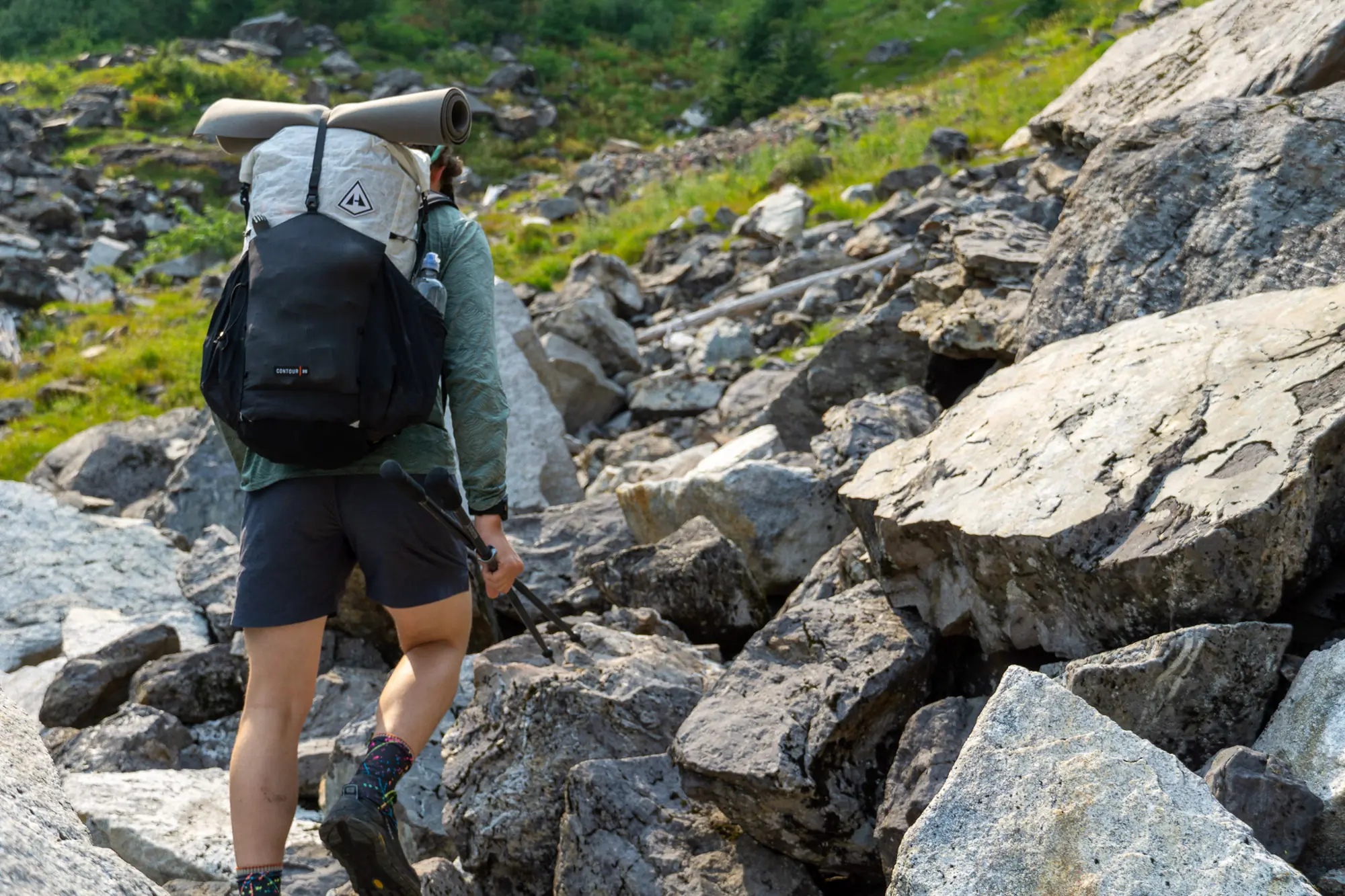
Our ultralight pack testing also hits the bench, where we tally up harder metrics to get a handle on, such as specific weights (ounces matter here), internal and external volumes, and material differences. Our waterproofing test consists of packing these bags full and taking them to the yard for a hose test, and finally, we crunch the numbers and come up with a weight-to-volume ratio to square these packs against one another.
For our volume testing, we created an in-house version of the ASTM F2153 test for measuring pack volumes. This involves stuffing the internal and external parts of each pack with ping pong balls, pouring the balls into a symmetrical cylinder such as a bucket, and then solving for the volume of the bucket to where it is filled. This works best for measuring volumes of at least 5 liters, as smaller sizes are more finicky to get a precise measurement.
We do this for each pack to verify its true carrying capacity versus its advertised size, and to differentiate between its internal and external volumes so you can visualize your potential gear layout.
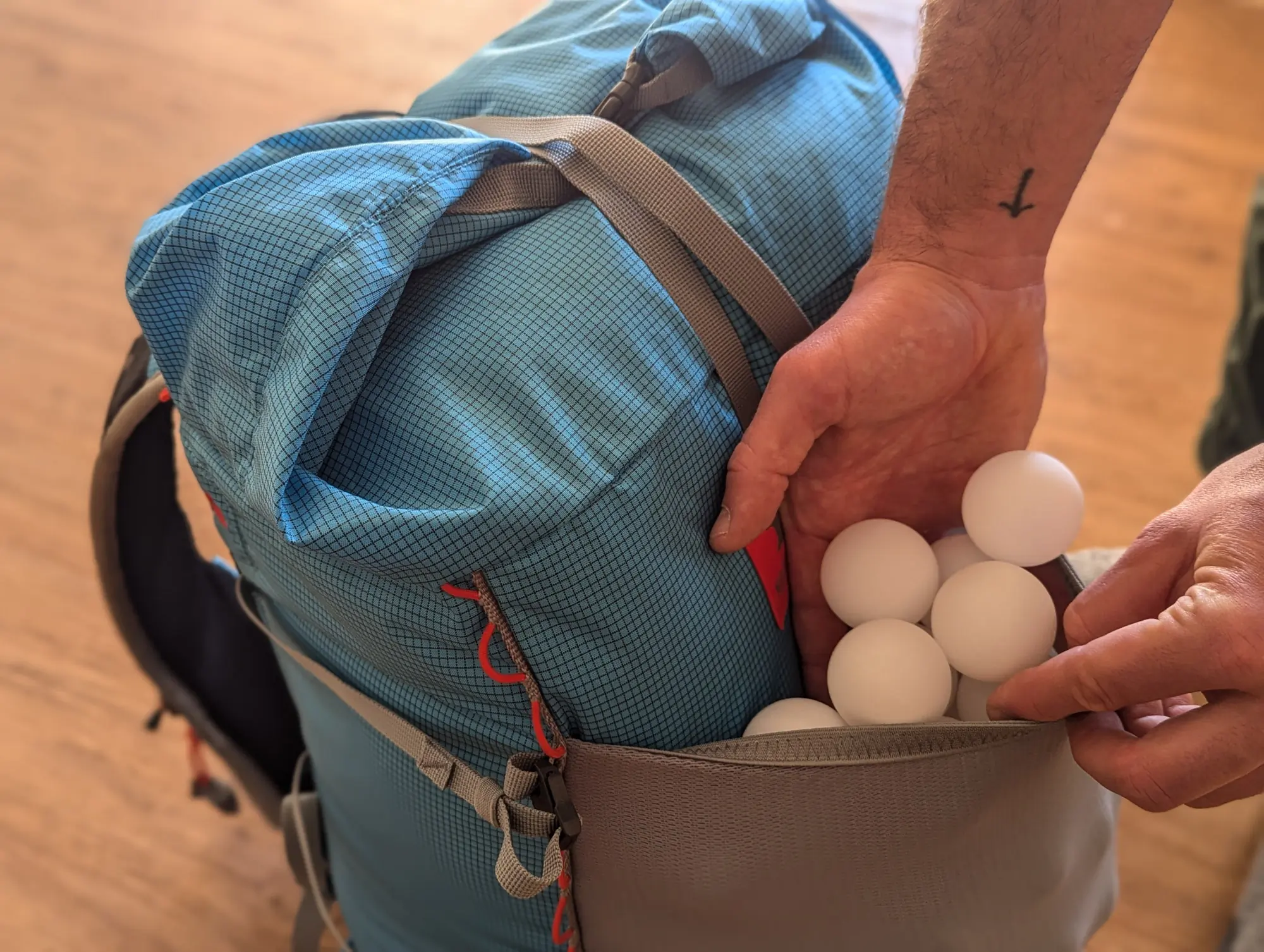



Our Expert Testers
Editorial Director Sean McCoy led the charge with this guide back in November 2020, curating our initial selection of nine packs. A life-long hunter, backpacker, and all-around outdoorsman, Sean knows the importance of balancing weight with function on ultralight objectives in the backcountry.
Triple Crown thru-hiker Chris Carter has added significantly to our testing team, and his travels continue to take him around the world. He’s navigated the sinking sadness of a mid-hike pack failure and knows the importance of choosing a model that fits your needs and will last the distance. His gear testing is near nonstop, and he’s most recently taken packs to the Himalayas for some extended treks.
Ian Atkinson is our newest lead tester, located in the Four Corners region of Colorado, bringing years of ultralight gear development and long-distance hiking experience into his pursuits of summer high altitude mountaineering and winter desert rock climbing and canyoneering. Ian often finds himself bushwhacking, navigating cross-country, and carrying heavy water and gear-laden loads — making him the perfect candidate to push ultralight packs to their limit.
Senior Editor Nick Belcaster rounds out our testing team, and as an alumnus of the Pacific Crest Trail, he’s been around the block once or twice. A multisport athlete, Nick applies the ultralight ethos to much of what he does, and his testing takes him across the West to places like the Hoh Rain Forest and on long traverses of the North Cascades.
Buyer’s Guide: How to Choose the Best Ultralight Backpack
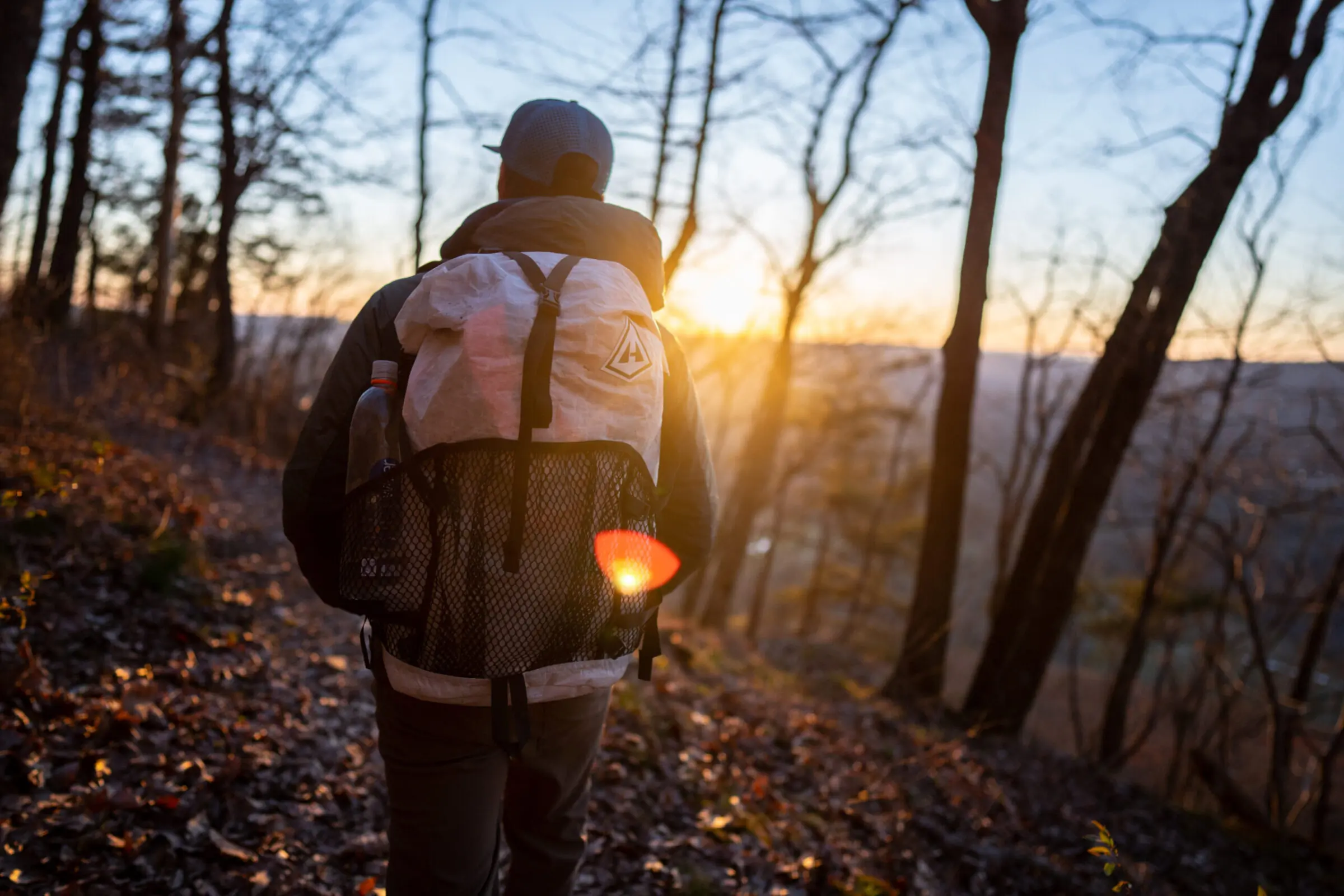



We’ve all had that moment of frustration as new backpackers where we realize we’ve overpacked, and contemplate chucking half the gear we brought off the next overlook.
If you’ve decided to pull the plug and join the ultralight cult, there are some things you need to consider. First, it has to be done carefully as you are still headed into the backcountry with this kit, and need to be prepared for all the unexpected twists and misadventures Mother Nature loves to throw our way.
A reliable ultralight kit starts with a functional, solid backpack. With so many options on the market, it can be hard to decide what to go with, and you should think about the elements that you will encounter on your trip, and the level of comfort you want, before making a decision. Below, we’ve broken down several factors to consider when choosing the best ultralight backpack for your adventure, which hopefully streamlines the process.
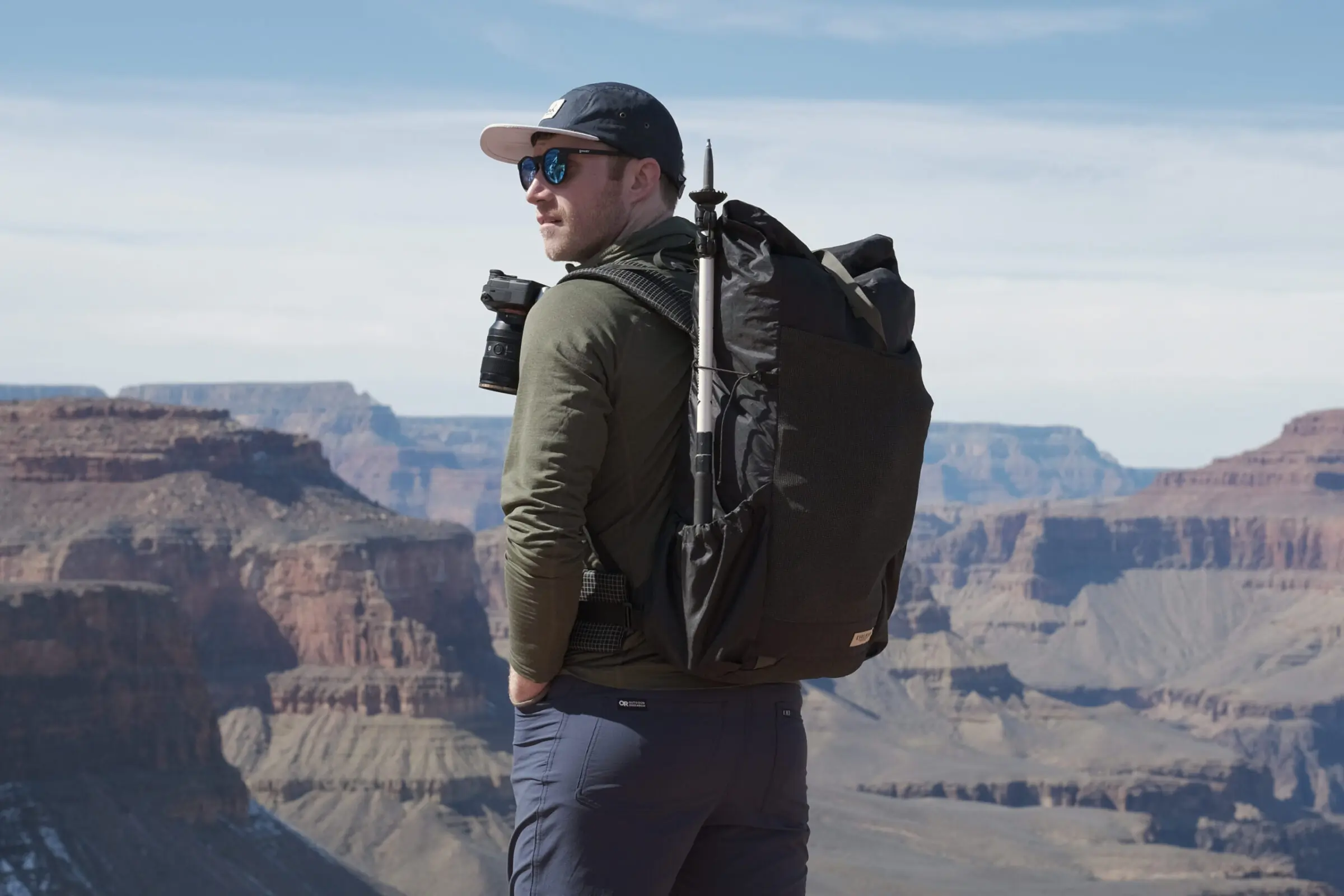



Ultralight Backpacks Fabric Selection and Weather Resistance
Ultralight backpack manufacturers have the difficult challenge of offering an extremely lightweight package while also being durable enough to hold up to months of abuse on rough trails through bad weather. For that reason, these packs are constructed with the latest, most durable materials on the market, which often explains the high price tag.
Some of the most common fabrics found in ultralight packs are Dyneema Composite Fabric (DCF), Ultra, ECOPAK, X-PAC, and nylon (such as Robic or CORDURA). Each of these fabrics has different benefits and uses, which impact the weight, durability, and weather resistance of the packs they construct.
Many people look at ultralight packs and think they are waterproof, since they often resemble the classic roll-top closures of dry bags, or are made with shiny reflective material. While the fabric of some of these packs is highly water-resistant, you will still want to add additional rain protection to your gear for when the weather turns foul.
A recent trend we’ve kept our eye on is the move away from DCF use in packs toward other fabrics such as Ultra or Robic nylon. DCF is exceptionally light and waterproof, given that it is a laminate instead of woven fabric — but a pack requires being seam-taped as well to be fully waterproof where it is sewn together, which many pack manufacturers do not offer. DCF is also flat-out expensive — with these two things in mind, other fabrics are starting to shine in the ultralight pack scene as they are much cheaper while offering similar water-resistance, durability, and performance.


We like to use separate ultralight Dyneema dry bags for contents that absolutely need to stay dry (such as electronics, a first aid kit, a puffy jacket, and a down sleeping bag), with a large lightweight pack liner that always stays in the backpack, protecting everything. The two most popular waterproof pack liners are Nylofume bags, such as this one sold by Gossamer Gear.
We’ve found this to be the best, lightest, and cheapest way to ensure that your gear stays completely dry. And you don’t have to waste time desperately fitting a rain cover over your pack as a freak storm sweeps in, as the inside contents are already protected. Just make sure there’s nothing too important in the external shove-it pocket.
In general, Ultra, ECOPAK, DCF, and X-PAC are waterproof to some degree, though the packs that use them may not be seam-taped, and water will seep through in prolonged bad weather. Most hikers who use these packs will still use a pack liner or cover in significant rain to keep their gear dry. Materials such as Robic nylon, on the other hand, will absorb water slowly over time and allow your pack contents to get wet.


The introduction of DCF and X-PAC to the backpacking scene represented a pretty significant jump in ultralight fabric technology due to their incredible strength-to-weight ratio. Packs such as the Hyperlite Mountain Gear Contour 35 have secured their spots as the lightest packs in their size range because of DCF, with the ability to carry loads of up to 35 pounds while maintaining an impressive, ultralight weight.
Framed or Frameless?
Back in the day, most, if not all, packs were external frame builds. Bulky and designed to haul heavy loads given that most of the gear you were putting in your pack wasn’t made to be ultralight or minimalist. Now that we have ultralight tents, sleeping pads, sleeping bags, and so on, we have the ability to consider going frameless.
Framed packs today generally sport removable internal frames, usually a carbon or aluminum stay that provides rigidity and sometimes connects to a hip belt to shift loads away from the shoulders. This rigidity makes packing a framed pack easier and distributes weight a bit more evenly between the shoulders and hips. Some framed packs from our guide include the Durston Kakwa, Gossamer Gear Mariposa 60, and REI Co-op Flash Air 50.
Frameless packs, on the other hand, are recommended for intermediate and advanced backpackers who are rocking sub–10-pound base weights. They are wonderful for folks who are meticulous about packing their pack, and for those who want to go as light as possible when ounces truly matter.
Frameless packs generally come with a minimalist hip belt strap such as the Pa’lante V2 or Hyperlight Contour 35 in order to reduce bounce rather than redistributing weight, or a removable minimalist hip belt with pockets like the Gossamer Gear Kumo for a little extra external storage capacity.
Ultralight Backpack Volume Selection
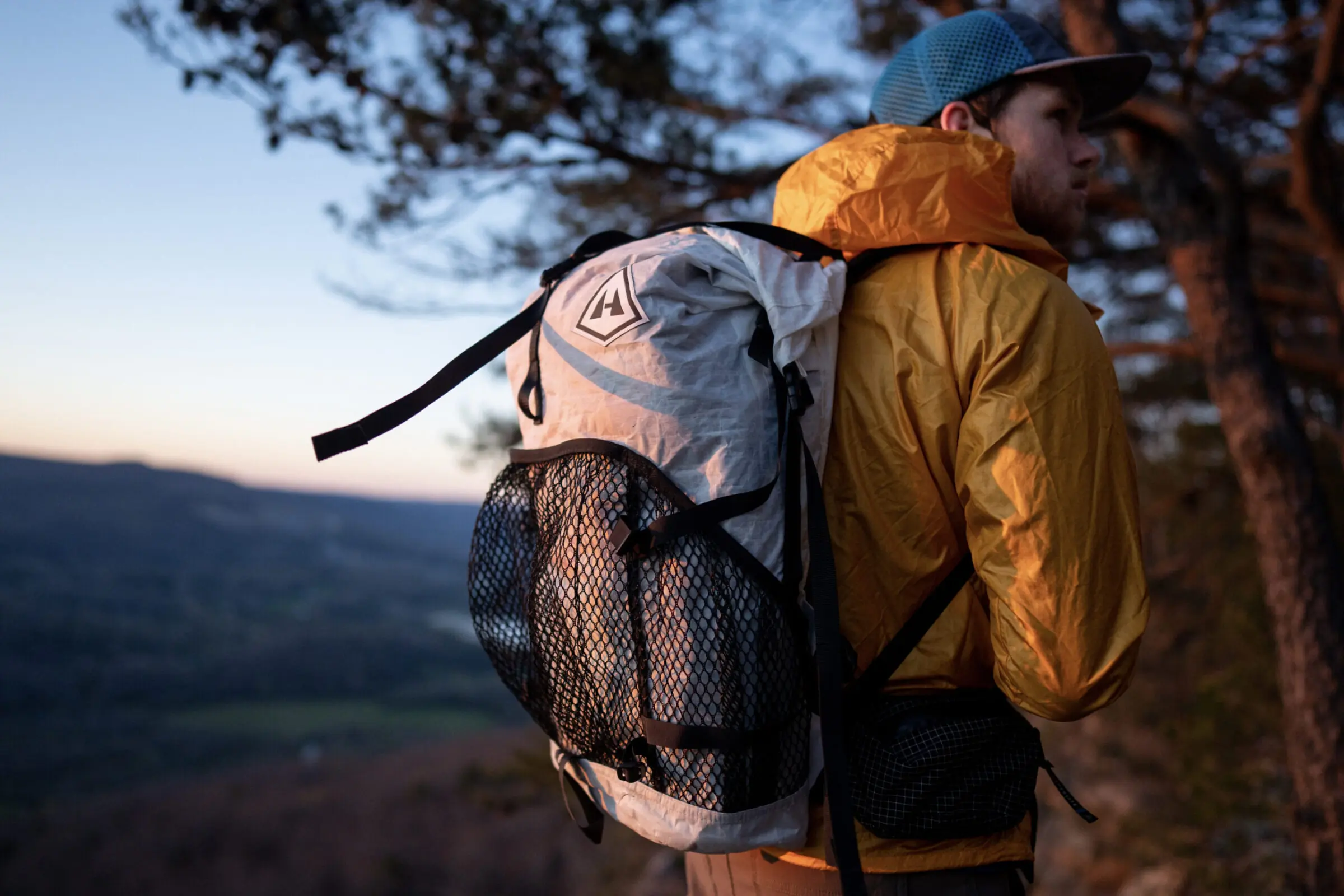



For most ultralight hikers, a 40 L pack will provide enough volume for a long weekend trip, or a 3- to 5-day push between towns on a thru-hike. This will always depend on the climate and terrain you intend to hike through, but for general three-season use, 35 L to 40 L should suffice. Some packs, like the Durston Kakwa 55, can expand or contract a good deal to accommodate different volumes of loads.
As hikers obsess further over every gram in their packs, truly committed ultralight backpackers can whittle their entire thru-hiking kit to fit into 30L or smaller packs, but this comes with some notable sacrifices. Using simple tarp shelters (or even a rain poncho) in lieu of tents, going stoveless, or carrying less food helps to save weight, but not everyone is ready to take that leap.
When it comes to ultralight pack volumes, manufacturers might only be stating the internal volume in their marketing. For example, the Mountainsmith Zerk 40 has a completely maxed-out capacity of 40 liters — but 11 extra liters of storage capacity externally. When you’re deciding on a pack, be sure to keep this in mind, and visualize where each piece of your kit might go in a pack.
External volume is generally useful for quick-access items such as rain jackets, food, and a bathroom kit. Lighter items also do the best externally as they are farther away from your center of gravity — keep the heavy stuff close to your body for the best balance!
If you’re looking to see how much space your current backpacking gear takes up, find something you know the exact volume of and see how it all fits! Some manufacturers also have generous return policies as long as the packs are returned unused so you can get an idea of how your gear fits and how the pack fits you with a full load.
Hip Belts on Ultralight Backpacks


For a couple of reasons, many ultralight backpacks have a removable hip belt or no hip belt at all (such as the Pa’lante V2 or HMG Contour 35, which both have optional hip belt additions). This is primarily found in frameless ultralight packs. Many hikers who have already dialed their base weight well below 10 pounds find that they can save even more weight by leaving the hip belt off, without sacrificing too much comfort.
With frameless ultralight packs, hip belts are not as load-bearing as traditional packs, as there is no frame for the load to be transferred to. The hip belt really only helps keep the pack close to your body while hiking, preventing it from jostling around, since you optimally will be carrying a weight that won’t overly fatigue your shoulders.
While most ultralight packs will still have a hip belt, they will often not be as padded as traditional packs (such as the hip belt on Mountain Laurel Designs’ Exodus 55L), and you may have the option of removing them entirely. You can still find great ultralight options, such as the Granite Gear Crown3, that have solid suspension, ventilation, and support at the cost of a slightly heavier package.
It’s important to think about the comfort level you are looking for in your pack, and how far you are willing to go to cut more weight.
Packing an Ultralight Backpack
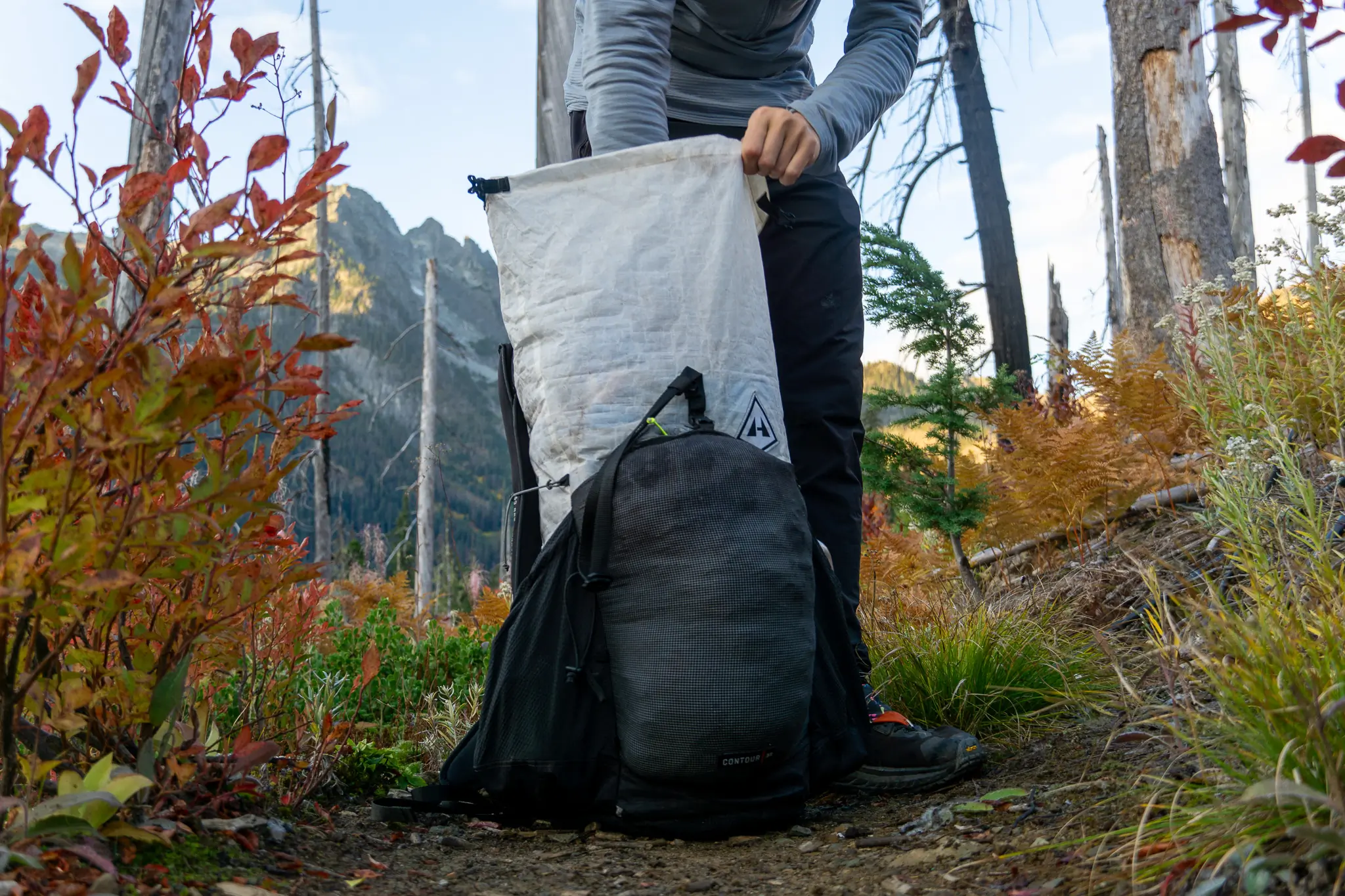



You want to pack an ultralight backpack in much the same way that you would pack a traditional backpack. However, there are some additional considerations that are important to note. Namely, ultralight packs cannot carry the same weight that traditional packs can, so it is important to have as minimal and lightweight a kit as possible. This will not only prolong the life of your ultralight backpack but will make it feel a lot more comfortable.
As previously mentioned, you will ideally have a base weight of under 10 pounds. Starting at the bottom of your pack, place your lighter, fluffier items like a sleeping bag and other elements of your sleep kit. These will serve as a “pillow” on your lumbar on top of which some of your heavier items can sit.
Bulkier, heavier items, such as your cooking kit, food, and tent, should go in the middle of the pack and be situated as close to your back as possible. By putting these items in the middle of your back, you alleviate a significant amount of stress from your shoulders or lower back, which is particularly important with ultralight backpacks.
Finally, at the top of your bag, you want to pack lighter items that you may need to use throughout the day, such as a midlayer or rain jacket.


Since ultralight backpacks also tend to have less padding than other packs, you want to be more aware of how your gear is fitting inside your pack, in order to avoid things poking uncomfortably into your back.
When packing more featured, framed models — like the REI Flash Air 50 — you don’t have to be quite as careful, as the load isn’t jutting directly into your back. Most ultralight backpacks force you to think carefully about how your gear meshes in the pack, so it doesn’t sit uncomfortably against you, but this isn’t as big of a consideration when the frame separates the load from your back.
These framed models also allow you to carry heavier loads, since more of the weight is transferred to your hips through the rigid structure of the frame. Additionally, compression straps work much better on framed backpacks than frameless ones, as there is built-in structure to compress the load against. This means you can often achieve a tighter, less wobbly package while bounding along the trail with framed packs.


Ultralight Backpacks: Pros & Cons
The Good
Ultralight backpacking means keeping your entire load low. Your base weight, including all your gear — except consumables like food, water, and fuel — should be under 10 pounds.
And that’s where these packs shine. They are light themselves, thus adding very little weight to your back, but they also carry light loads comfortably and can stand up to reasonable on-trail use.


The Bad
You really need to keep your weight down with these packs (Seek Outside Unaweep 6300 excluded). Most of them won’t serve you well if you load them heavy, so they’re a little less versatile than more robust backpacks.
Where does this matter? If you own just one backpack and plan to use it for hiking, ski mountaineering, and rock climbing, you’ll want to look elsewhere.
Also, some of these packs aren’t super durable for off-trail hiking, so be sure to scrutinize materials closely if you plan to use them while bushwhacking.
Ultimately, you will have to decide if you’re willing to trade creature comforts for minimal weight. For those who’ve made the leap, the above are some of the best ultralight backpacks on the market.
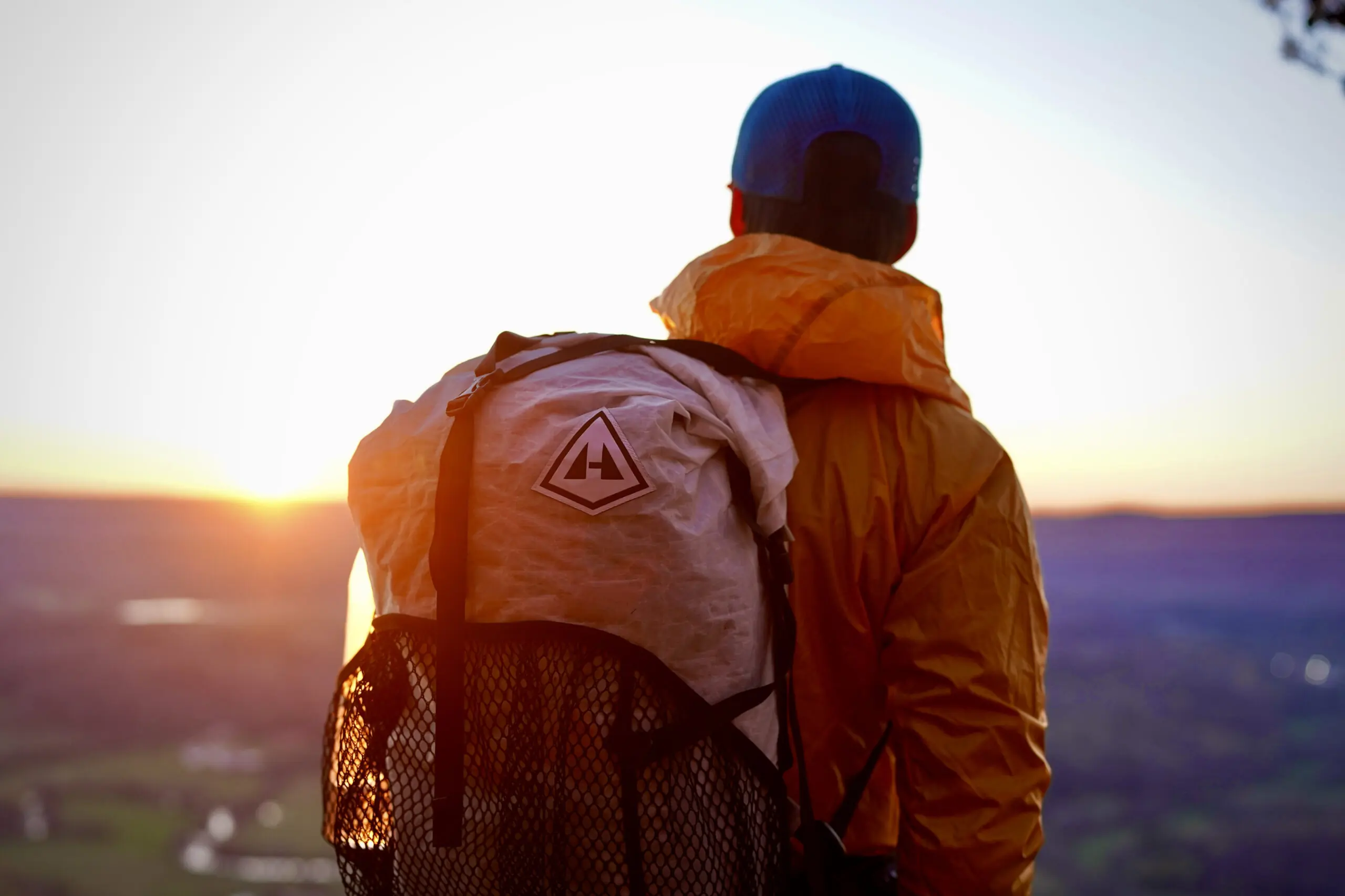



Price & Value
Going ultralight doesn’t mean you have to lighten your wallet unnecessarily, but typically, more specialized kit like ultralight packs will cost a bit more, compared to conventional backpacking packs. That’s why keying in on exactly what you get for the money is worthwhile.
Budget
Just dipping your toe in? No need to splurge then, and with a few trade-offs, you can get into a lightweight pack that’ll trim pounds from your base weight. This will typically mean that fancy textiles like Dyneema Composite Fabric and Challenge Ultra are off the table, but even humble nylon can be juiced up by going with a Robic or ‘high-tenacity’ variety. These packs often will employ a simple aluminum hoop frame for structure, but otherwise, they won’t be very modular.
The Gossamer Gear Kumo 36 ($180) ticks plenty of the boxes we’re after in a UL pack, and for the price, it’s an excellent entry point. The Mountainsmith Zerk 40 ($225) asks a bit more, but the pack does get super-comfortable running-vest style straps, which we find carry very well.
Mid-Tier
Middle-of-the-pack bags ($200-300) open up a good number of different options, and with it, better textiles. While Dyneema Composite Fabrics used to be the best and bleeding edge, Challenge Sailcloth’s Ultra material has recently been overwhelmingly adopted by the UL community, and both offer impressive strength-to-weight ratios — at added expense. Packs in this range are often more adaptable with strippable frames or hip belts, meaning you can tailor your pack to the trip you’re taking.
The LiteAF ECOPAK 30L Curve ($235) uses a less-expensive EPLX textile in its frameless construction, but makes up for it in the huge number of features you can add to your custom pack. Both the Gossamer Gear Mariposa 60 ($315) and REI Co-op Flash Air 50 Pack ($299) lean into the comfort-first angle, and instead use fewer features or smaller hardware to hit their 2-pound weights.
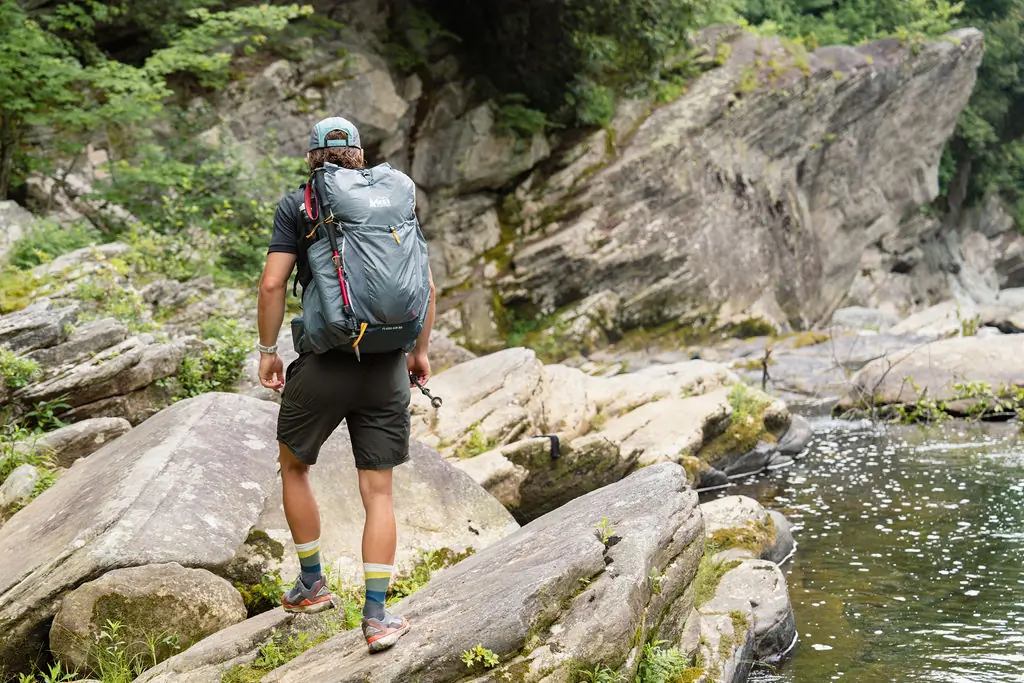



Premium
Paying anything north of $380 these days will net you a pretty premium ultralight pack, with all of the R&D of a cottage brand (or brand edging into the scene). Hyperlite Mountain Gear, ULA Equipment, and Zpacks are big names in this price range and offer packs tailored for the likes of thru-hikers who need packs that will last 2,000+ miles. Expect cutting-edge fabrics and function over features on these packs.
The Hyperlite Mountain Gear Southwest ($379) has been a top pick for a few years running now, and it’s still one of the best premium UL packs out there. The Ultra variant of the ULA Circuit ($380) also has a storied history, and with a new super-tough weave, it’s well worth the price. Niche packs, too, are found in this price range, like the Seek Outside Unaweep 6300 ($605), a big pack made to be as light as possible (and still carry 103 liters).
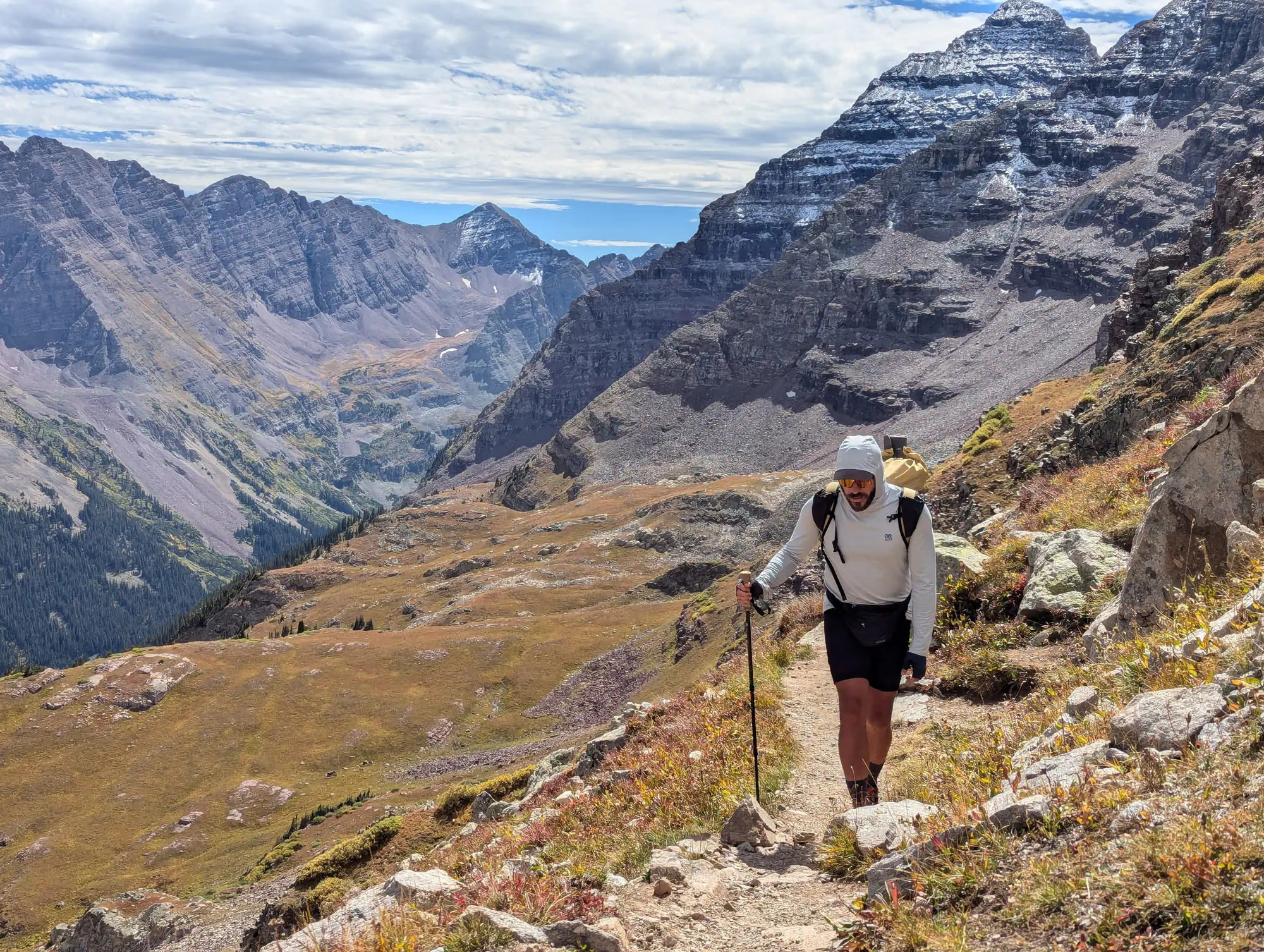



Frequently Asked Questions
Ask 100 hikers about their favorite ultralight pack and you’ll get a dozen different answers. But like all backpacks, the most important aspect is that it fits your body perfectly and is adjusted properly! If you don’t know how to fit a pack, it’s worth a trip to an outdoor shop to talk with a qualified salesperson.


If you can keep your packing weight low, yes, an ultralight backpack is worth the investment for many hikers. However, it’s worth noting that ultralight packs require the user to understand how to pack efficiently to keep their load weight quite low, usually less than 25-30 pounds.
If you expect your gear will weigh more than that, an ultralight backpack will probably not be a good choice, as many won’t support heavy loads very well.
Your base weight is the weight of all your gear not counting things you consume such as water and food. So it includes things like your stove but does not include the food you cook.
Most ultralight backpackers consider a base weight of 10 pounds to be a good measure of ultralight backpacking. Get it down to 5-6 pounds and you’re in the superlight backpacking range. For more casual lightweight backpacking, you can stretch the weight up to about 15 pounds. The first step though is getting your gear out, weighing it, and putting it in a spreadsheet so you can truly visualize your backpacking setup as a whole.


This ultimately depends on which fabrics and mesh are used on an ultralight pack and the type of terrain you’re hiking in. Some packs like the Pa’lante V2 sport 200+ denier grid fabrics which can take quite the beating, and other packs like the Gossamer Gear Murmur are constructed with a 30 denier Robic nylon which is almost transparent given how thin it is.
If you’re bushwacking often or dealing with ample amounts of cactus, you’ll want something in the 200+ denier range, but if you’re hiking on cruisy single track without any pokey tree limbs, you can get away with some superlight fabric choices.
The answer can be wrapped up in one simple word — gradually! Going ultralight is not only a matter of purchasing ultralight backpacking gear, but choosing what you can leave behind and do without. Are you able to sleep with a smaller sleeping pad? Use extra clothing as a pillow? Take the time to plan every ounce of food? Go without a cook kit? Pare down your electronics? Dial in your first aid kit to the realistic potential emergencies?
Going ultralight is a give-and-take scenario. You’ll need to take a few trips to find out what kit features are most valuable to you and find out what you don’t even end up using. Over time, you’ll start learning what you want out of your ultralight gear, and what you don’t even need to bring in the first place.


The Best Backpacking Backpacks of 2025
Head into the backcountry with the best backpacking backpacks of 2025. From budget-friendly options to ultra-comfortable picks, we’ve got you covered.


The Best Backpacking Tents of 2025
Whether you’re looking to spend 100 nights on the trail or stick to a tight budget, we’ve found the best backpacking tents of 2025.
